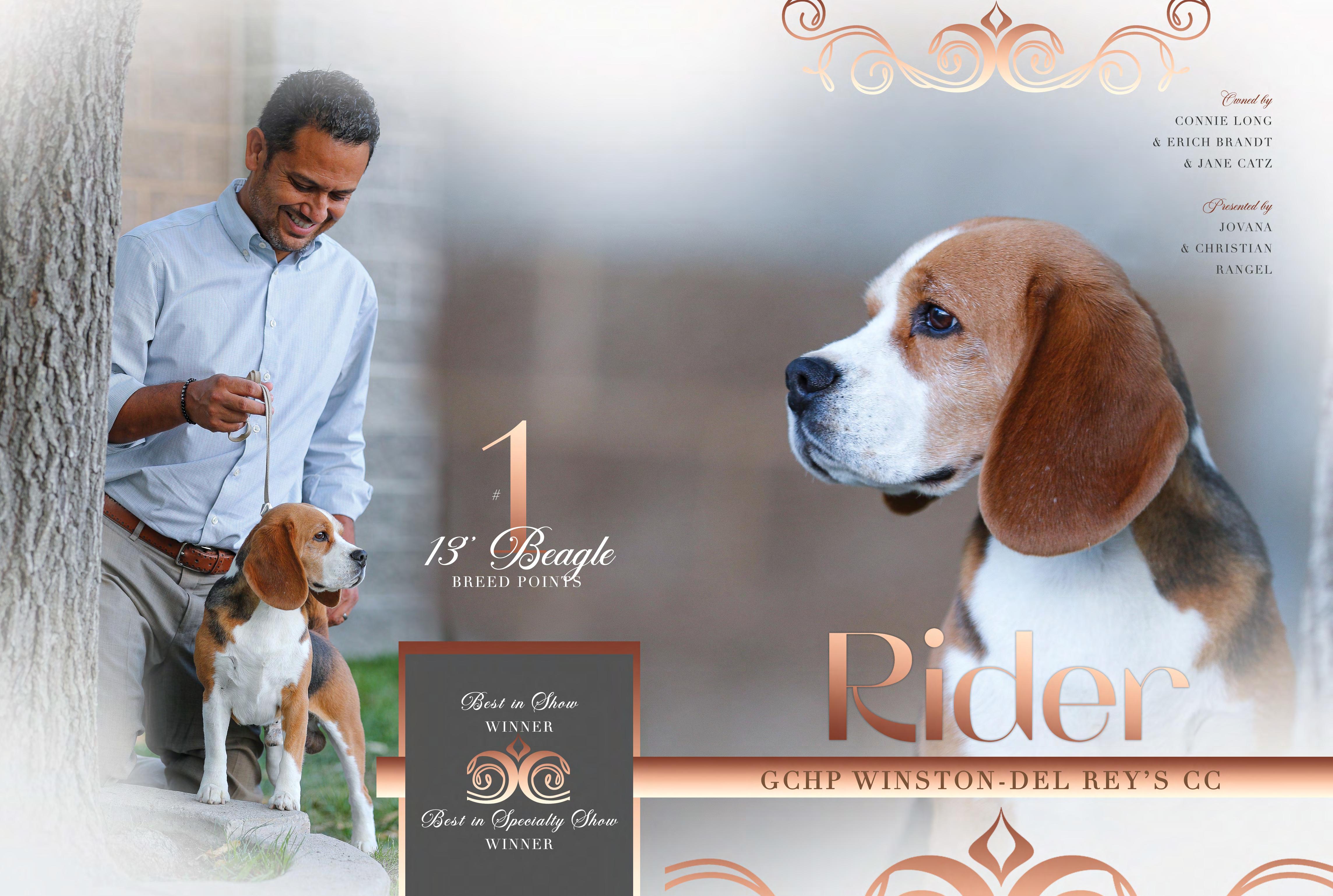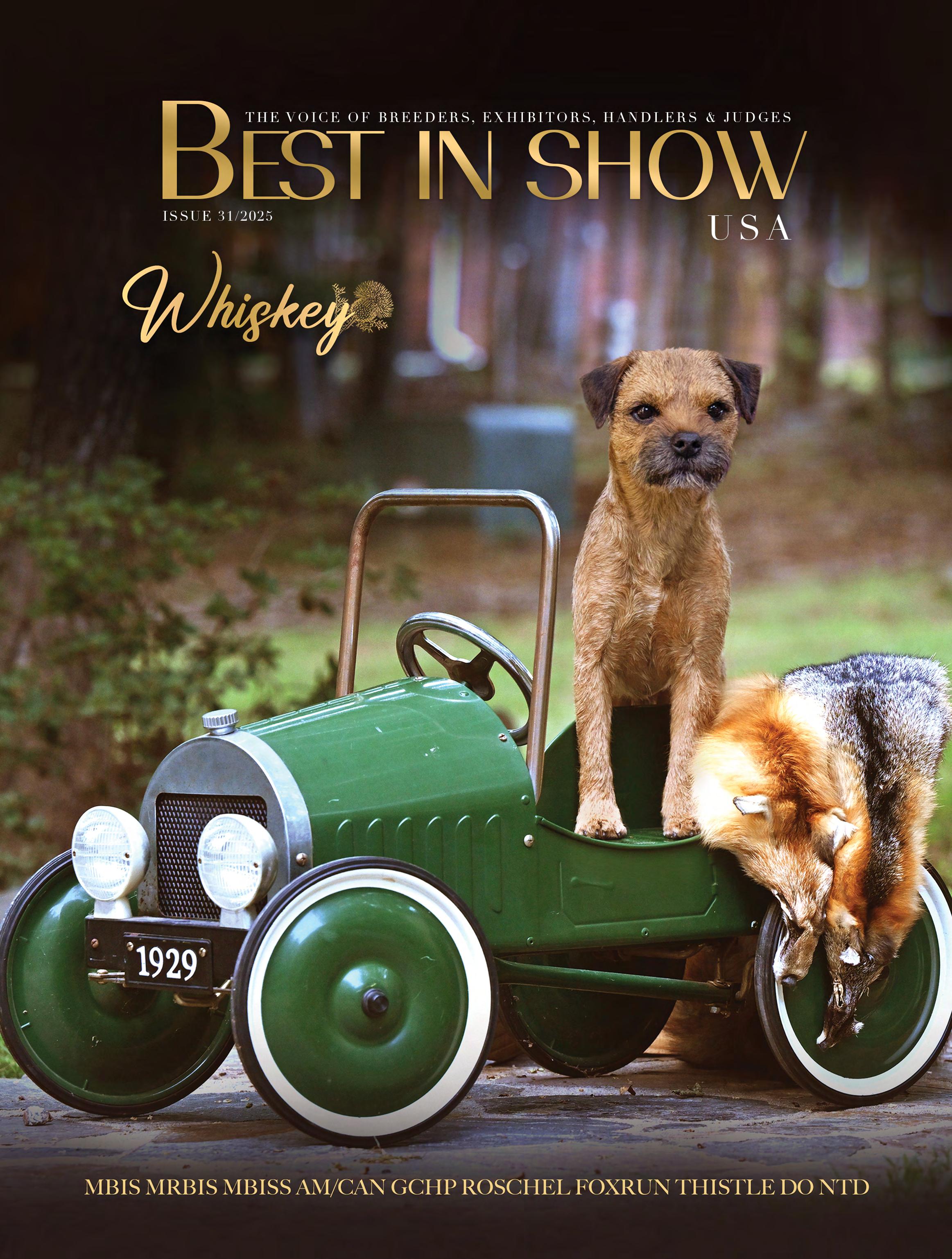
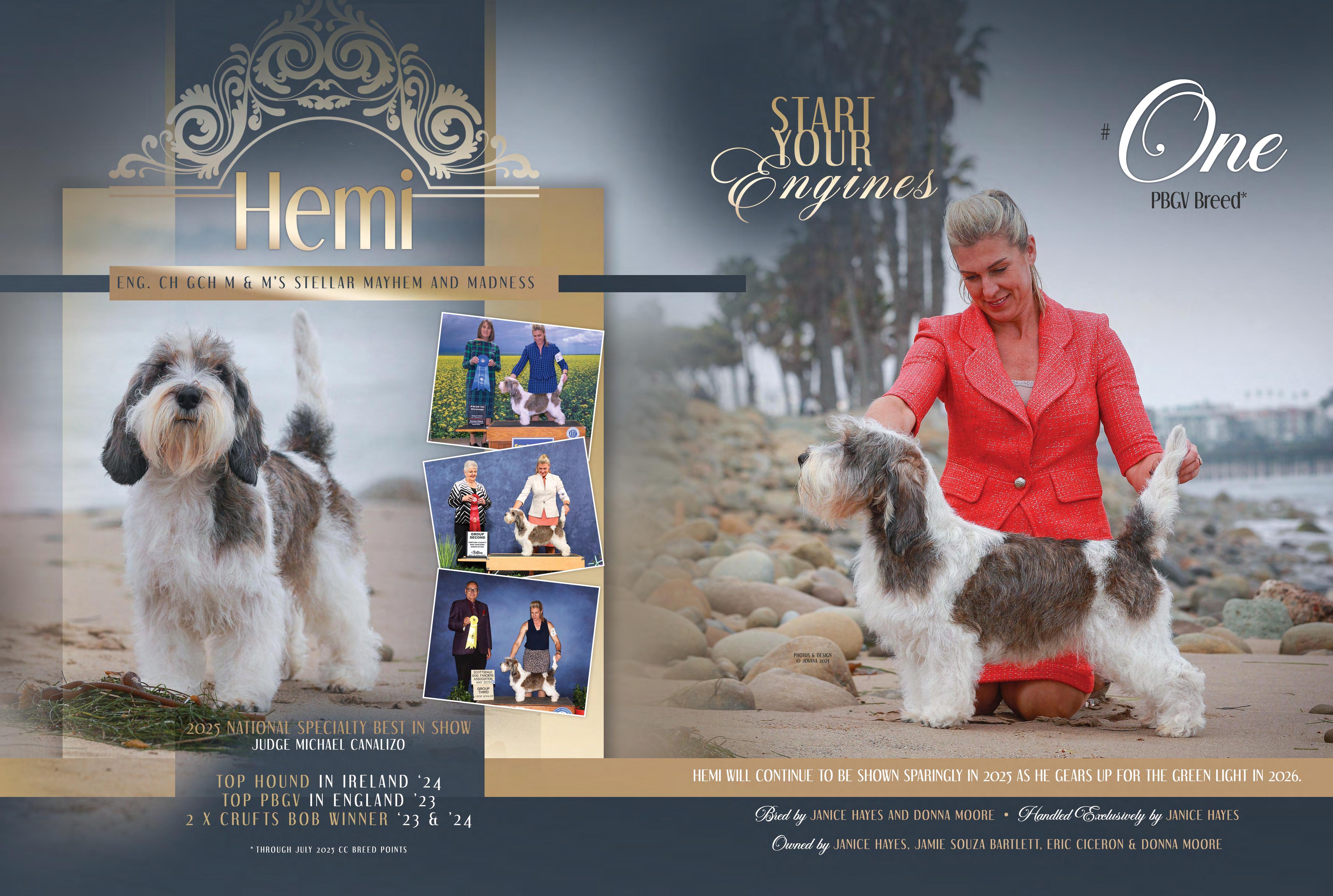

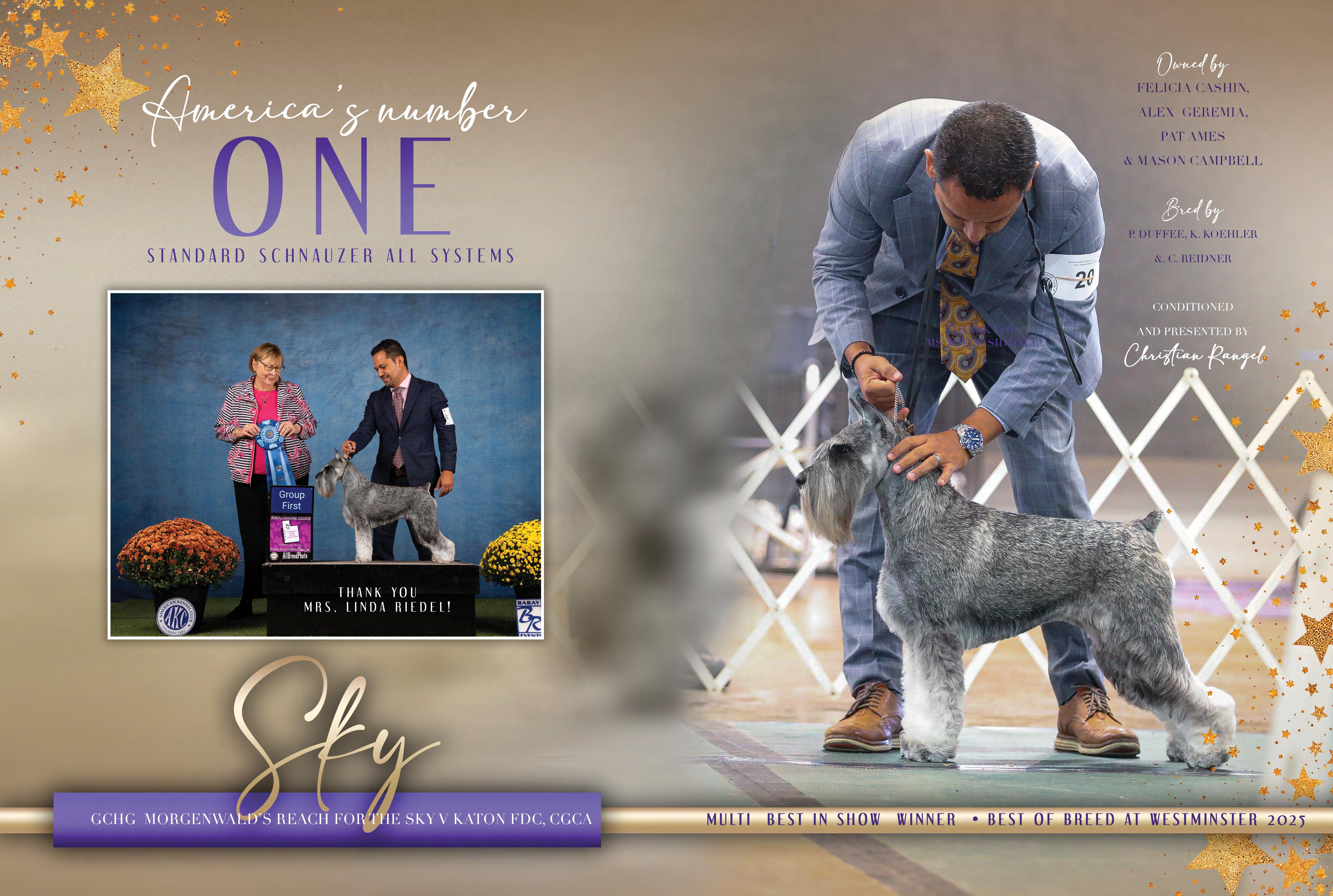

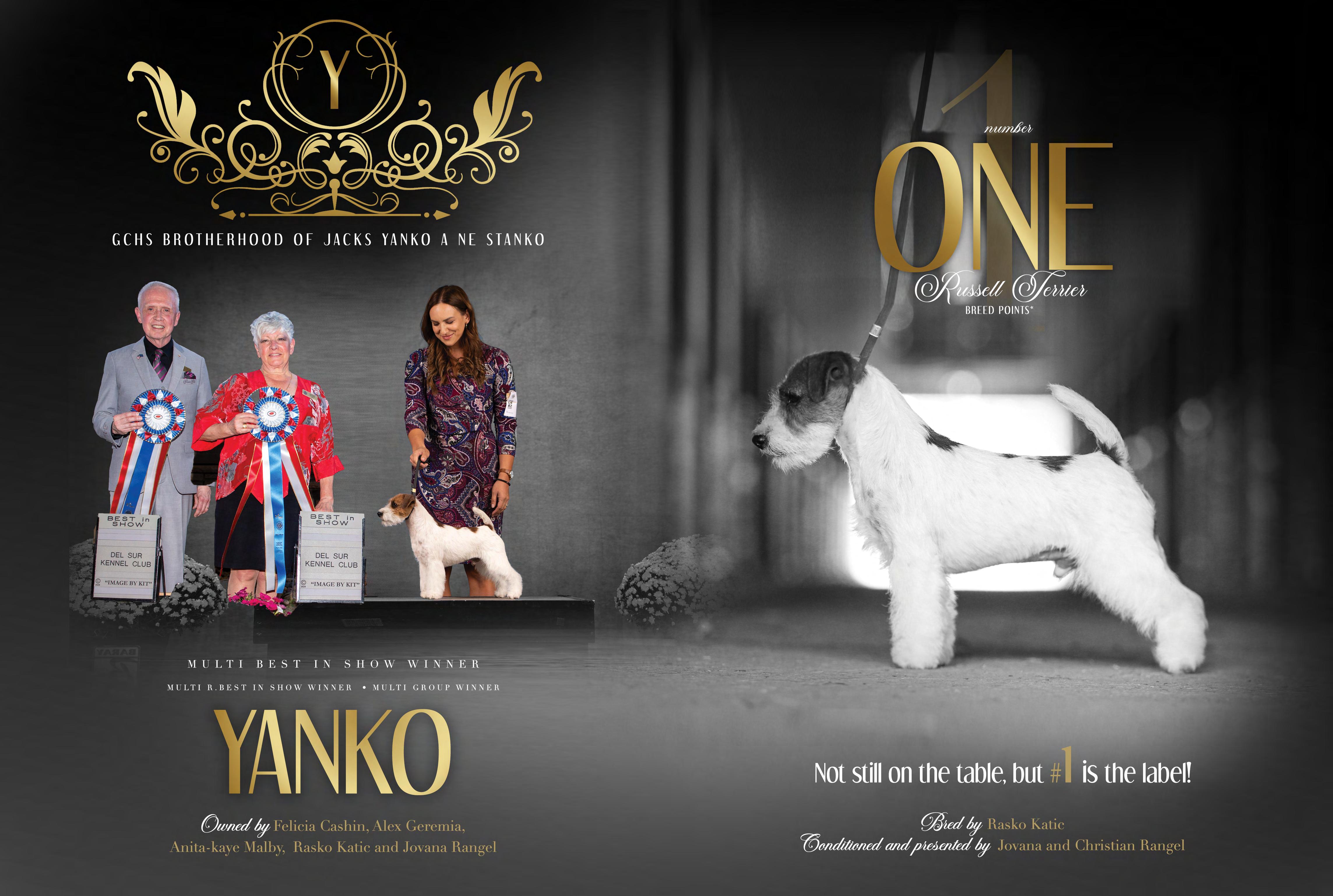

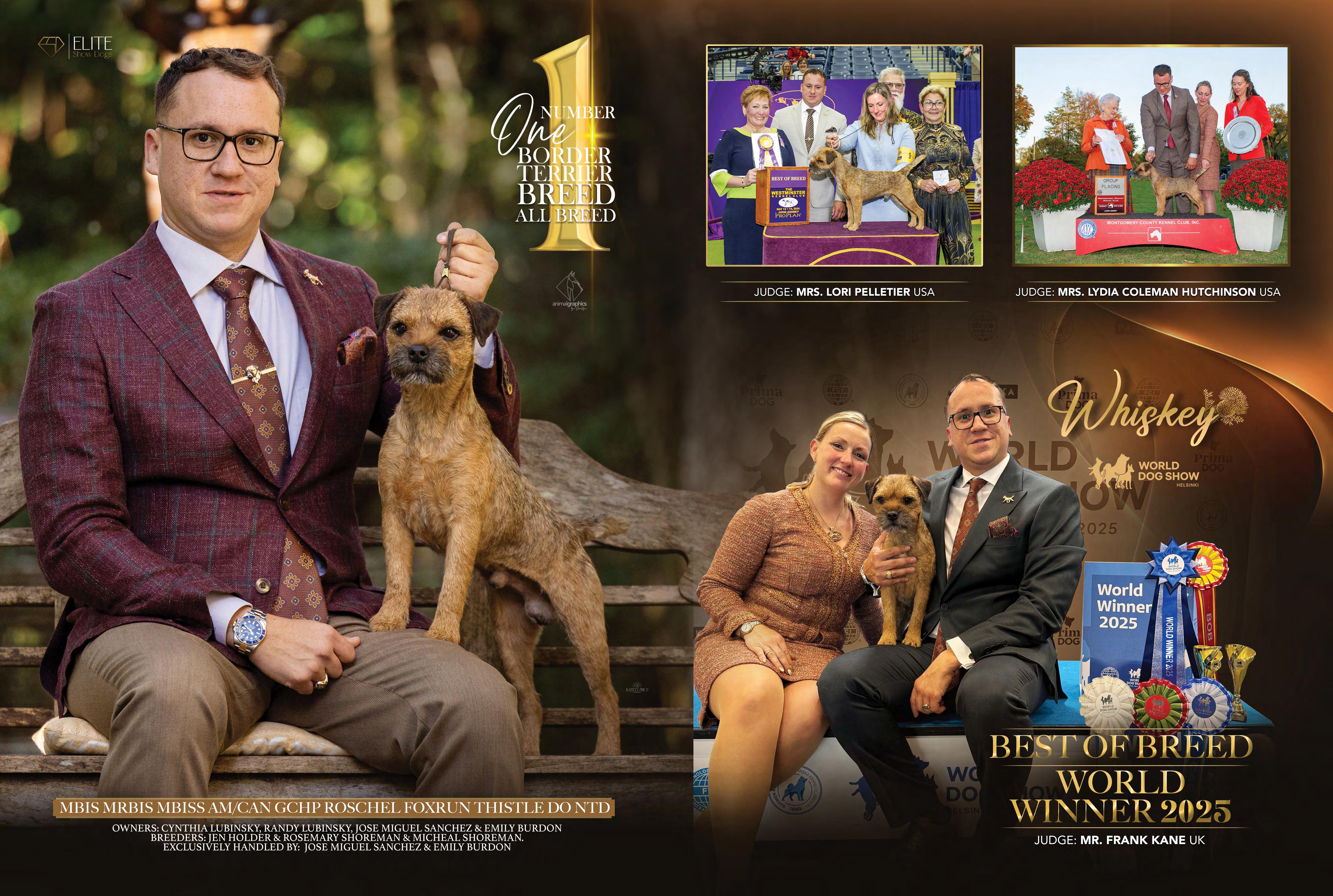

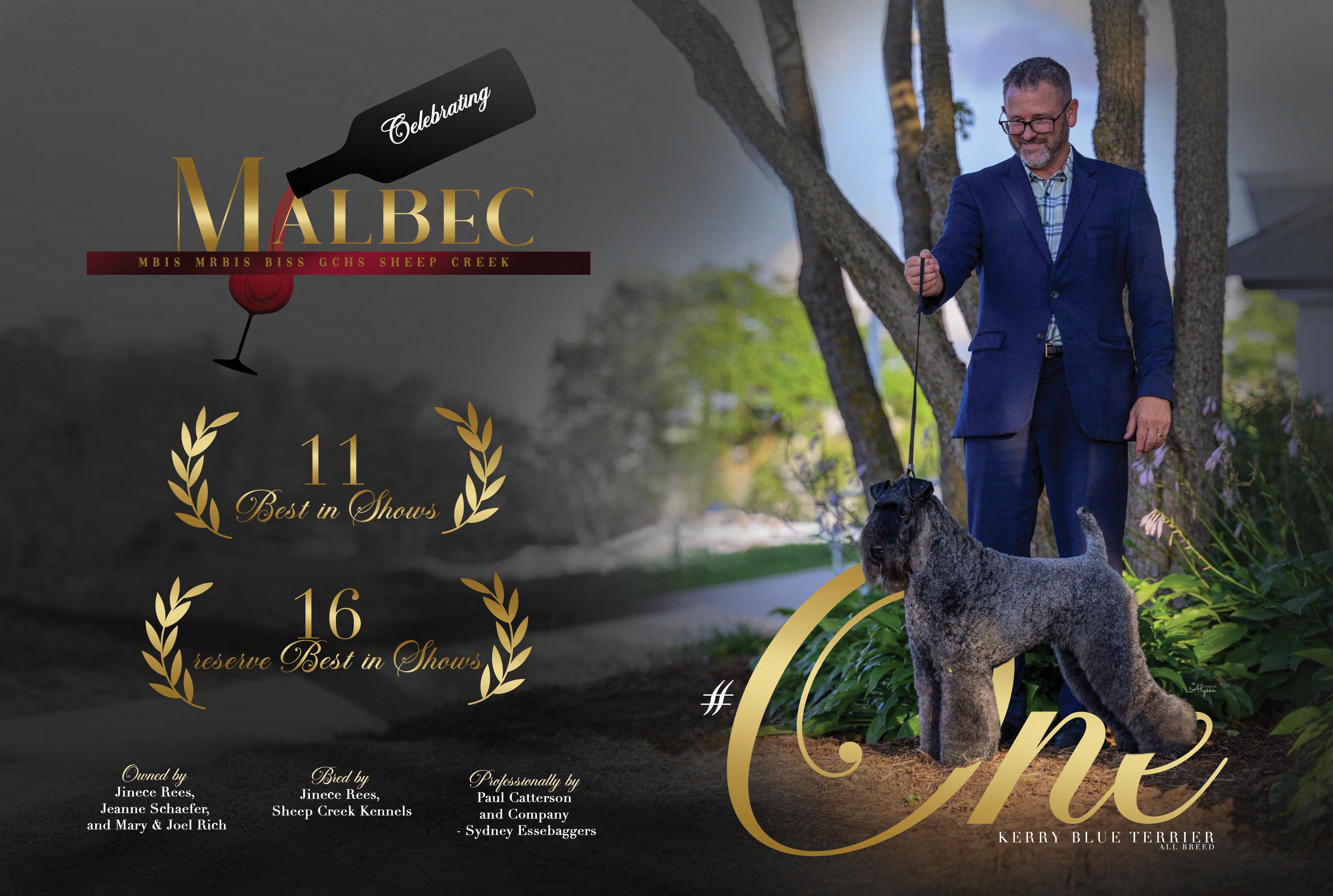

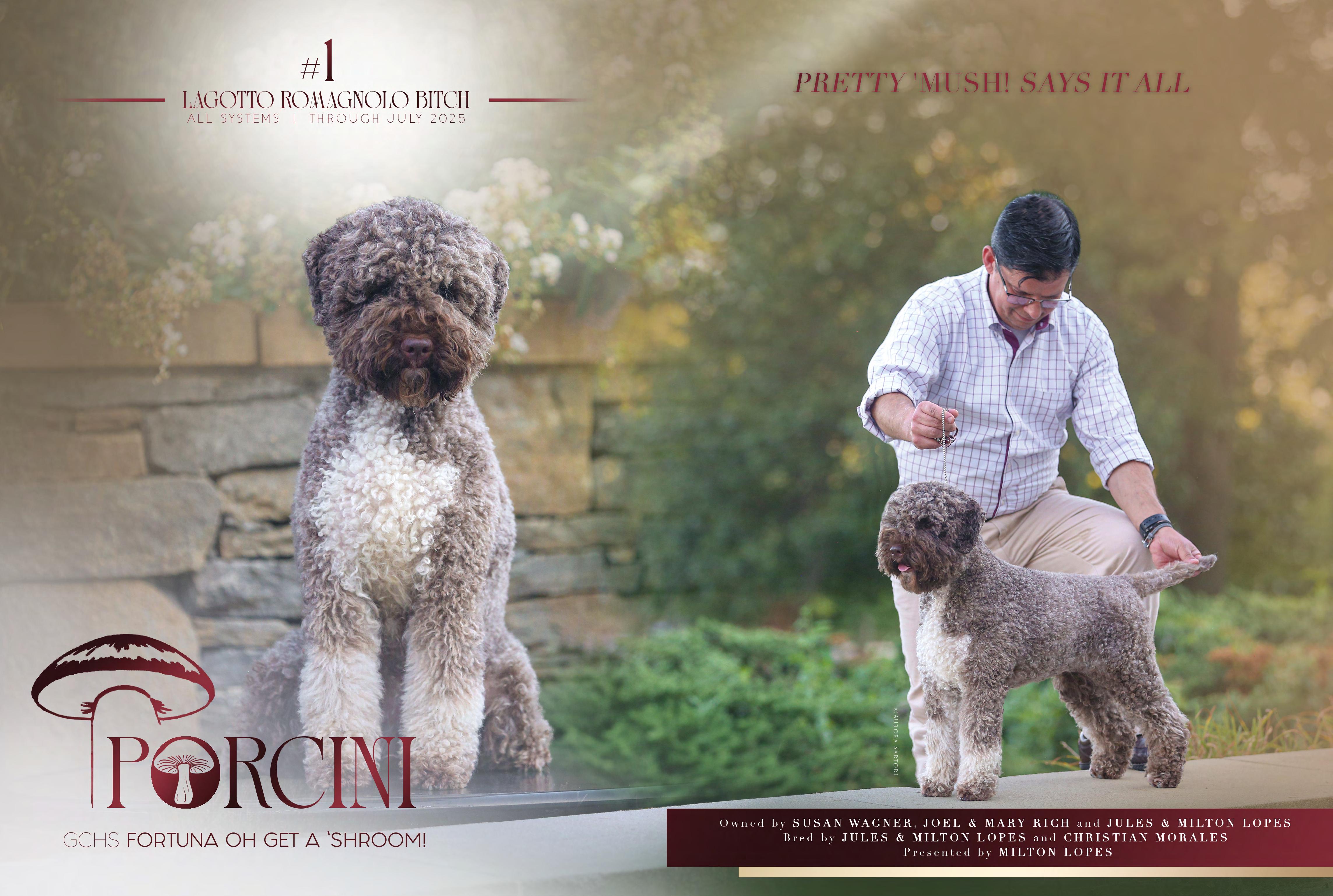

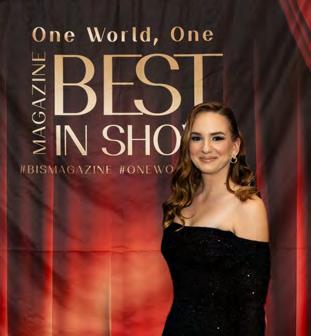















As the editor of Best in Show Magazine, it’s my privilege to reflect on the journey of 2024 and look ahead to all that 2025 has in store. Like everything in life, this past year had its share of highs and lows. But, as we all know, it’s our health that truly matters. As long as we’re healthy, we have every reason to be grateful and optimistic. The world continues to turn, and the most important lesson we’ve learned is that no matter the setback, it’s not about falling, but about rising again, stronger than before.
2024 saw a multitude of shows across the globe.Whether we won or lost, it was all part of the journey—a learning experience for every handler, breeder, judge, and dog lover involved. And through it all, we were reminded that the key is to keep pushing forward, constantly striving to be the best version of ourselves.
One of the highlights of the year was our very first Best in Show Magazine Gala, which took place in December in Orlando. And what a win it was! The event was a tremendous success, bringing together so many wonderful people from the dog world, and it truly marked a milestone in our journey.
We’re thrilled to share all the details and highlights from the Gala in this edition, so be sure to check out the coverage!
I’m also excited to share that Best in Show Magazine is officially becoming a monthly publication starting in 2025. Our first edition, which will coincide with Westminster, will
be a historic moment for us. Not only will we be covering one of the most prestigious events in the dog world, but we will also be publishing our very first World Annual in February 2025. This special edition will be a groundbreaking project, uniting the dog communities of the USA, Canada, and Europe like never before. For the first time, a magazine will be available across all three continents, bringing together handlers, breeders, judges, and dog lovers from every corner of the world. It’s a thrilling opportunity to build stronger connections and celebrate the global passion we share for these amazing animals.
In this upcoming February edition, you’ll find a wealth of new articles, captivating stories, insightful reports, and, of course, all the exciting details from our first Gala event. You’ll also enjoy beautiful, eye-catching ads crafted by our talented BIS Magazine team. We are more excited than ever to showcase content that speaks to the heart of the dog world.
As we prepare for the cold New York winter, remember to stay warm if you’re attending Westminster, and don’t forget to take some time to relax and recharge. There’s always something special about taking a moment for yourself, especially amidst the hustle of such an exciting year.
Here’s to 2025 and all the amazing experiences yet to come!
Thank you for your continued support and for being a part of this incredible journey.




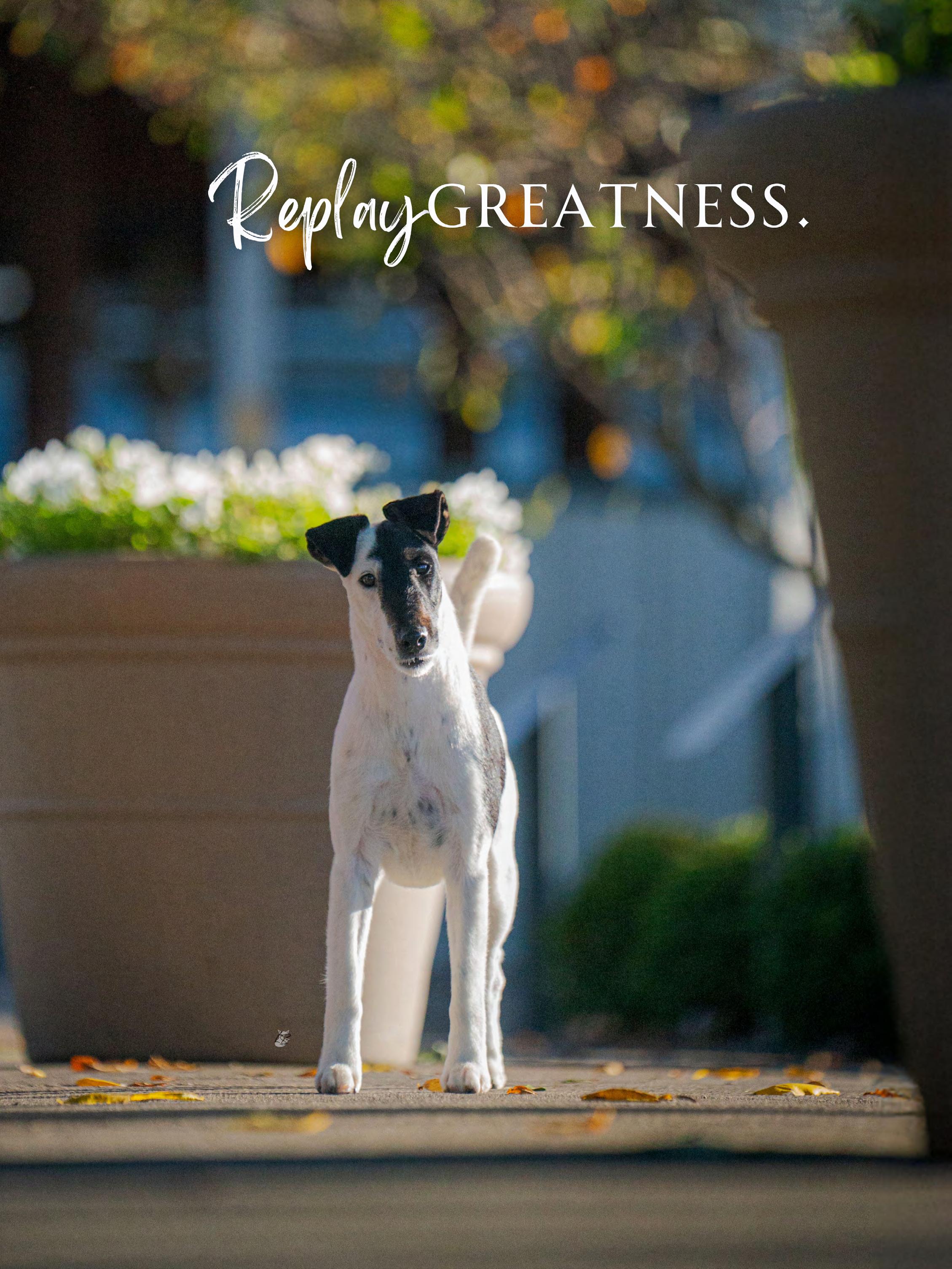
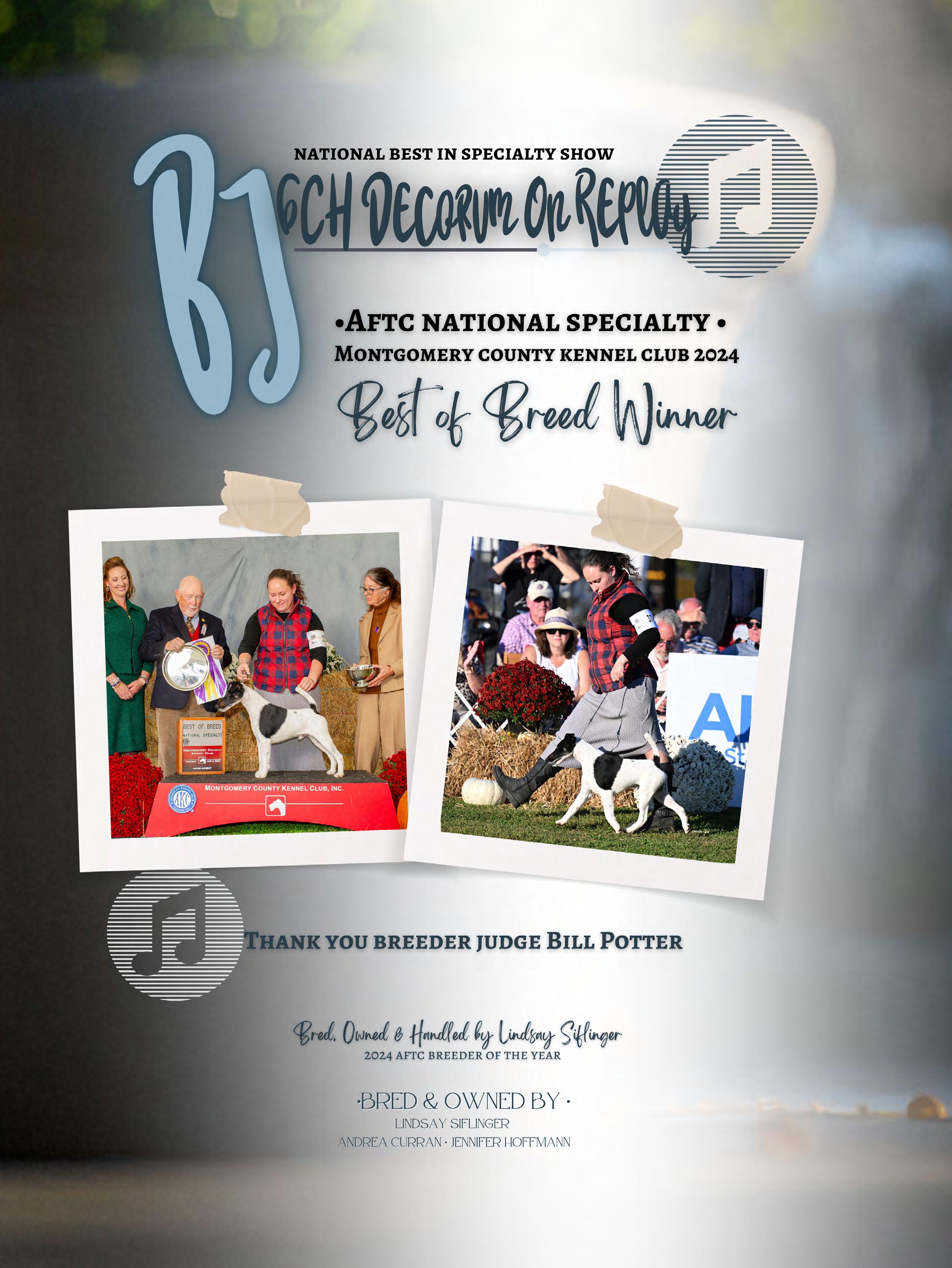





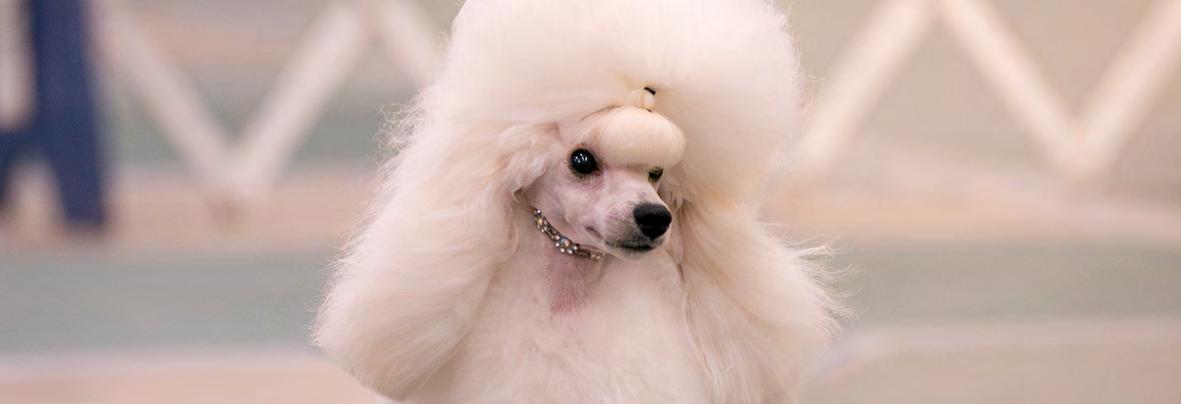



REPORT AND RESULTS
68 WAUKESHA
REPORT
82 MONTGOMERY
MEET THE BREED
102
MEET THE BREED
108








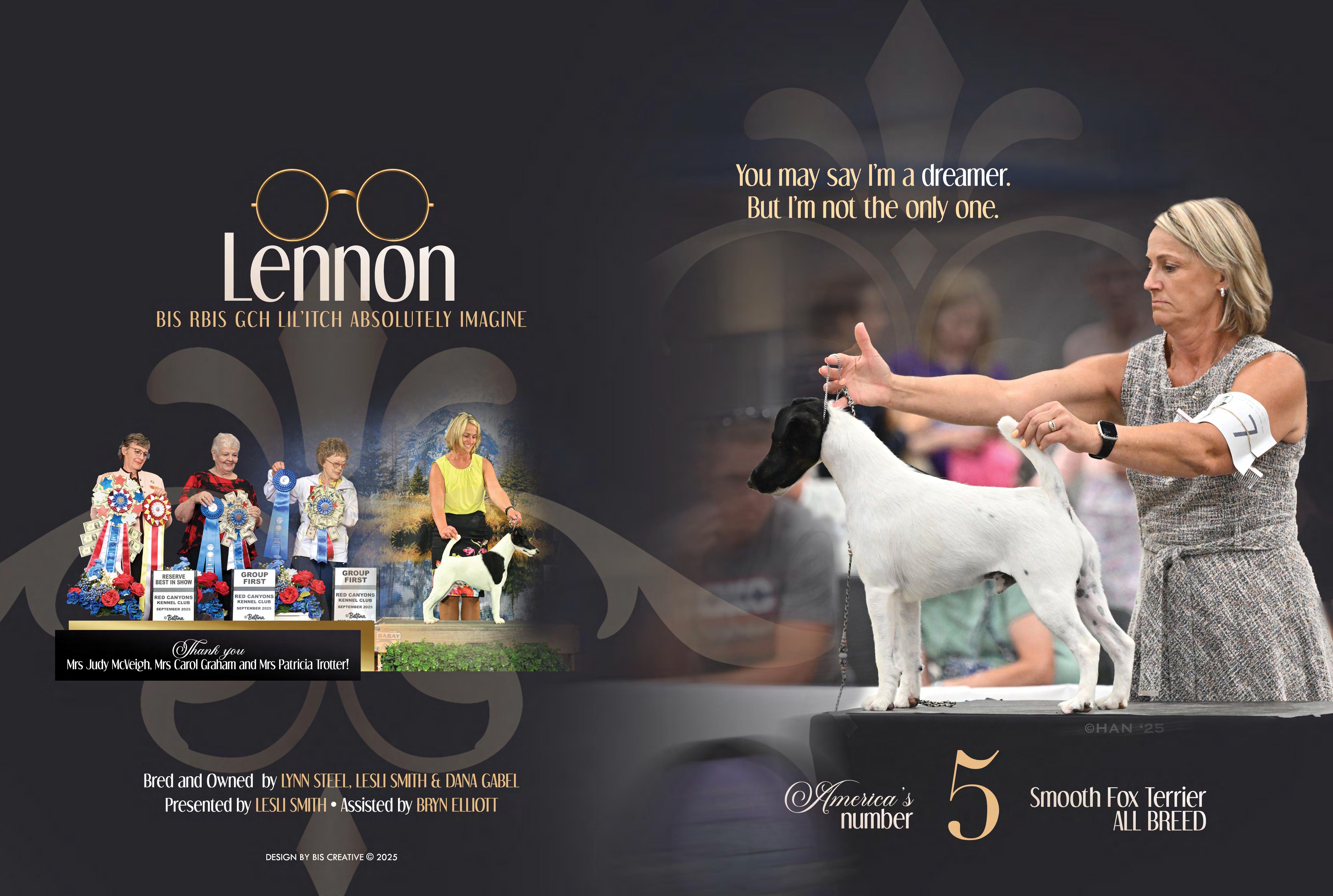



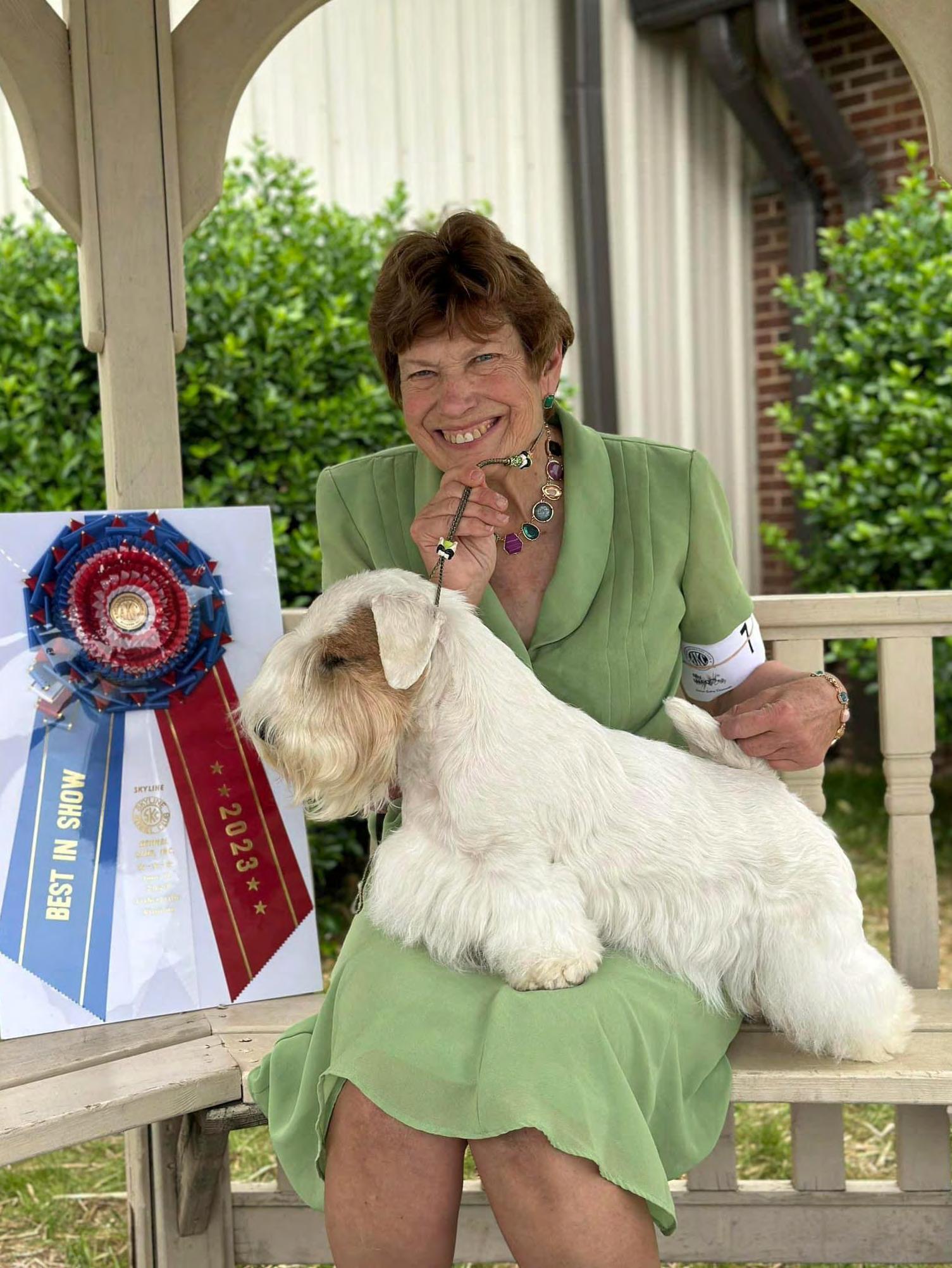
LIVING LEGEND
Please share with our readers the breeds you raise and the breeders you have previously and currently work with today.
Please tell our readers how you became involved in the world of pedigree dogs.
Our family got a Kerry Blue Terrier puppy and he was wild and crazy so he needed obedience training. I enrolled in a 4-H dog training class whose instructors were from the local obedience club. I met Ken Nagler who eventually took me to dog shows and I was fascinated. Our next dog, a German Shepherd Dog, I showed in obedience to her utility dog title.
What is the meaning behind your kennel name, “Good Spice”?
My last name is Good and terriers are spicy!
I am best known for my Sealyham Terriers. I worked with Patsy Wood of Penllyn fame for many years. I still work with France Bergeron (Efbe) as we co-own many dogs and she is the breeder of Charmin.
I have bred Kerry Blue Terriers for over forty years and involved my mother, Josephine Good, in breeding them too. I have worked with Scott and Billie Kellogg, George Wright, Lynn Duckett, Chris Brill-Packard, France Godbout, and Terry Russo to produce better Kerry’s.
I have owned and bred Airedale Terriers, influenced by my first kennel employer Edna Dobbins. I worked with Susan Tiller and Anne Curtis and a number of other breeders.

Wish a busy showing schedule, do you find it difficult to find the time to have litters?
I am very fortunate to have Sally Hawks (Thunder Rd Sealyhams) as my housemate and she looks after the whelping and rearing of puppies so that I am able to continue breeding litters. I do spend time grooming and socializing puppies when I am home,
What breeders, handlers and mentors have inspired you throughout your lifetime in dogs?
So many, I could write a book! My first employer Edna Dobbins had worked as an assistant for Tom Gately and she taught me to do trimming as a purist, do not take shortcuts as the hair won’t grow in right and it will be more work later!
Patsy Wood (Penllyn Sealyhams) taught me so much about looking for virtues in breeding stock.
Damara Bolte inspired me to be a gentle woman and to keep dog shows in proper perspective and to “smile”.
Peter Green— I spent much of my time at dog shows just watching him trim dogs, finishing touches, and then go in the ring and win!
George Ward— In the summer I worked for him taught me a lot about kennel management. He had a gift for finish trimming a dog and for taking a lead and magically a wild terrier became perfectly behaved. I had to figure out how he did that!
France Bergeron— If I had $10,000 to buy a dog, she’d be the one I would chose to select it!
You have had tremendous success around the world over the years. Not only have you won Best In Show at AKC/Eukanuba invitational, Montgomery County Kennel Club, Crufts and the World Dog Show with the beautiful Charmin, you have also topped the Terrier group at Westminster together. Please tell our readers about each experience. Was it difficult getting Charmin around the world?
Charmin’s BIS win at the AKC/Eukanuba Invitational in 2007 was I think the most important win ever. The numbers of dogs were not as great but the quality of the competition was spectacular. I didn’t expect to win, but when Maxine Beam pointed at Charmin it was the thrill of a lifetime.
In the 2007 Montgomery Co KC group, I was so blessed with seemingly thunderous applauds for Charmin but he won second. Then in 2008 Charmin was victorious! He was such a proud stallion of a show dog, alway gave me at least 100% regardless of the conditions.
In 2008 we went to Stockholm for the World Dog Show and were wonderfully treated to hospitality by our Swedish friends, Ninna Odehag’s family. Ninna was

so helpful to me in the right place at the right times in our first European show. There was so much noise and lights and glitz that I hugged Charmin and told him we were in this together and asked him to trust me and do his thing. He did! BIS at the World Dog Show, over 22,000 dogs. Amazing.
Crufts 2009. In February Peter Green judged the Terrier Group at Westminster and awarded Charmin second behind the Scottie with Gabriel Rangel. I doubted the good sense of even going to Crufts where Peter was judging BIS. I decided to go and have a good time, win or lose. I was extremely honored that Harry O’Donohue, a terrier man I have great respect for, gave Charmin the Group 1 over the same Scottie of Gabriel’s. There were 22,000 dogs entered including the Pharaoh Hound who won the group at the WDS and the Standard Poodle who was Top Dog in the UK. As Charmin and I were going into the BIS ring, I asked Charmin for a composure and more sedate performance than was his inclination. It was the exact performance Mr. Green was looking for and Charming won Crufts! WIth these wins and the 97 All Breed BIS’s I contend that Charmin is the winningest dog in the history of show dogs.





How do you compare/find showing outside of the USA with showing in Europe?
I would say that grooming and presentation is less important to the judges in Europe as they are in the US.
A little closer to home, you have also achieved tremendous success at the world famous Terrier mecca, Montgomery County Kennel Club. What does Montgomery mean to you as a terrier breeder/owner handler. Please could you share the feeling that just taking part in Montgomery brings to you.
For terrier folk, Montgomery is the most important show of the year. I have won BIS 4 times. 3 with sealyhams and one with a lakeland terrier. The quality of competition is high, the competition is fierce! On the other hand, it’s a time to see friends from all over and see different fogs and upcoming stars.
Your dog Charmin made me take notice of the Sealyham Terrier (as I am sure he did for many eyes that saw him), as odd as this sounds, his name always made me think of toilet paper. I have never shared that story with a soul, but while researching you for this interview, I recently read one of your past interviews. Please could you share with our readers how Charmin got his name?
Charmin’s first co-owner, Judy Carter, named him. She had Parson Russells and Border Terriers and when Charmin came to her as a puppy, he seemed “squeezably soft” in comparison. So Charmin is after the toilet paper. Out first ads for him feathered a roll of toilet paper with a sheet of paper representing each BIS. Fun. “Charmin’s on a Roll!”
‘Charmin’ also had a very successful brother, “Hidalgo”, please could you tell our readers about Hidalgo?
While Charmin, Ch. Efbe’s Hidalgo at Goodspice, was winning in the US and around the world, his older full brother was Top Dog All Breeds in Canada. CH Goodspice Efbe Merci Pour Le Poive, Merci. France Bergeron and I were so excited one day in 2008 when Merci, Charmin and Valley (our Montgomery Co KC 2011 BIS winner) all won BIS’s!
As someone who has shown around the world, do you think the American dog show fancy would benefit from adopting the FCI grading system?
I think better use of judges critiques of exhibits couple improve US dog shows.
What breeds are some of your most favorite to show?
I have handled dogs in all variety groups and have enjoyed learning about each breed and their fanciers.
What do you wish all judges knew about the Sealyham Terrier before they judged the breed?
I expect judges to know that Sealyhams are a big powerful dog in a small package, they are square within a rectangle. I wish judges knew their hair absorbs moisture out of the air and curls quicker than any other breed.
Do you judge, if not would you like to?
I don’t particularly want to judge as I love the hands on preparation for exhibiting and the thrill of partnership with the dog I am presenting.



How do you feel the dog show scene has changed since you first started?
There are not the big kennel settings for judges or handlers to be immersed in learning breeding, raising, managing large numbers of dogs for a broad base.
The effect of dog magazines I print and online I think have concentrated the top winners.
What are some of the greatest pieces of advise you have been given over the years?
It’s just a dog show, it’s not life of death!
“Smile”
Don’t take your losses out on your friends around you!
If you could go back in time, what would you tell your younger self?
I would tell my younger self, don’t work so hard!
Do you have any other hobbies or pastimes outside of dogs?
Horses! I love to ride, both trail rides and dressage. I have a fabulous Dutch Warmblood mostly retired from high level dressage and I ride almost everyday I am home. It is great for my soul. I enjoy the beauty of nature and the good company of my companions.
Do you have any wishes or goals for the future, both personally and in the world of dogs?
I am currently campaigning Charmin’s great grandson Stache (GCHG Goodspice Efbe Money Stache) who is CC #1 Terrier and #11 All Breed. I plan to complete his platinum grand champion title, the first in the breed. I hope to keep him in the top spots for this year. I want to bring along the quality puppies I am breeding and bring new younger people into appreciating the enchanting character of Sealyhams. I hope to surround myself with good friends and great dogs!



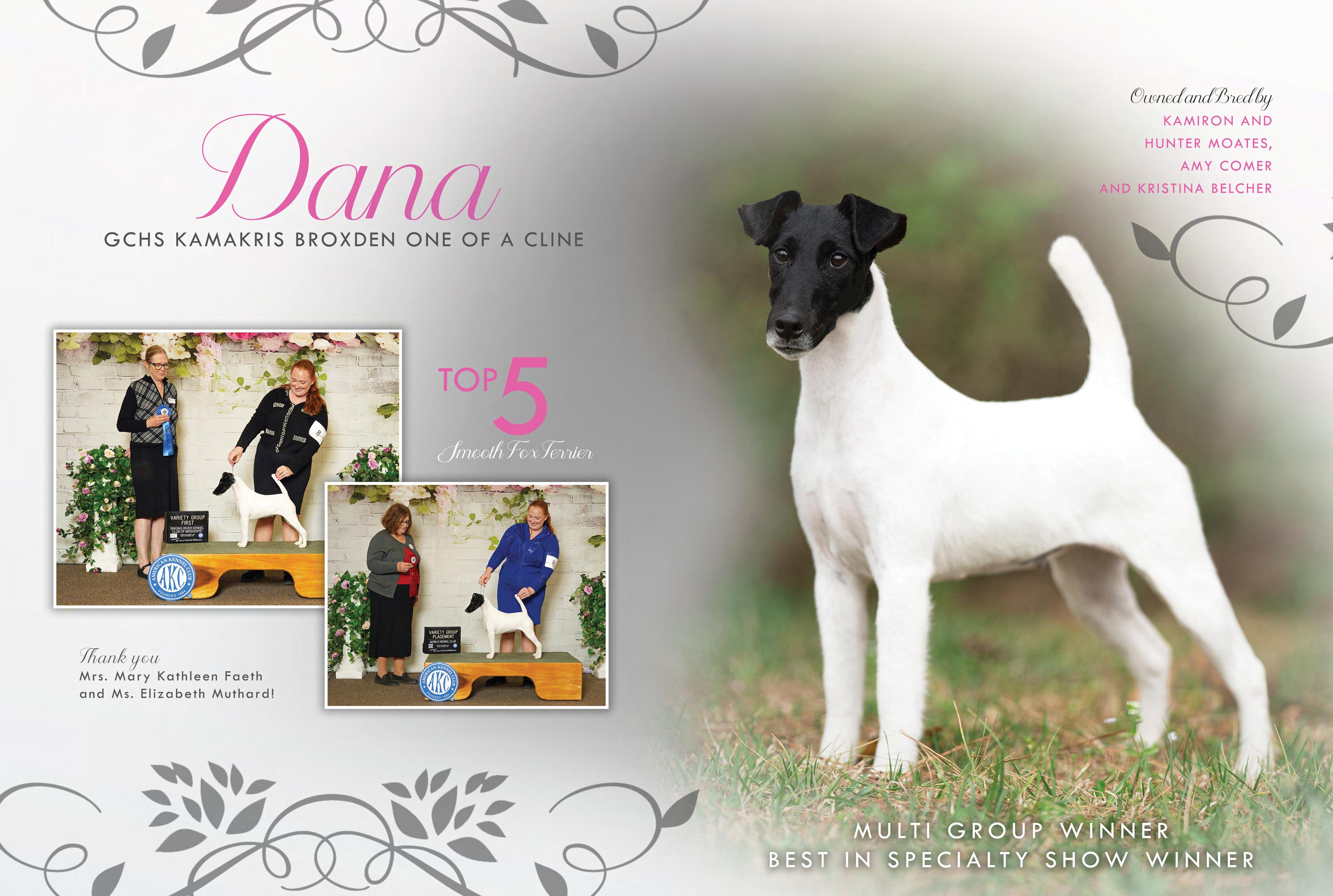

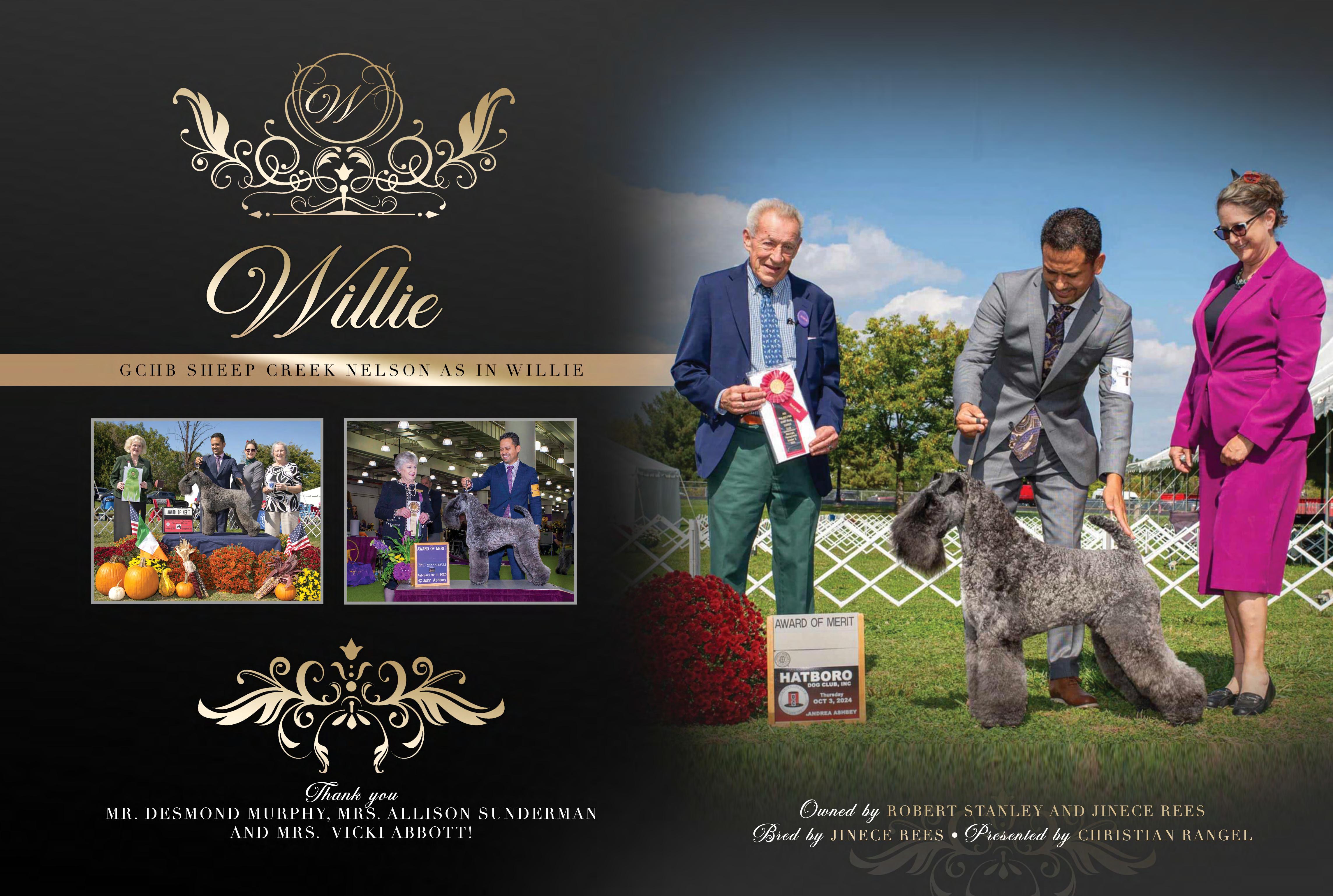


by Mary Marshall
Retired handler Edward Boyes has enjoyed an exemplary career as a professional in the competitive sport of dog showing for over sixty years. He has compiled numerous best in show wins and multiple group victories at specialties and the world’s most prestigious dog shows during his prolonged career.
One of the standouts that Boyes handled was the Lakeland Terrier bitch Ch. Cozys Mischief Maker who won the Terrier Group at the Westminster Kennel Club Show in 1979-80. Boyes also handled the personable Smooth Fox Terrier GCH Slyfox Sneaks a Peek, nicknamed Adam, to a coveted win in the Terrier Group at Westminster in 2013.
Throughout the “only job he has ever held” Boyes and his wife Lesley traveled throughout the country with family in tow showing the best dogs in the sport. Boyes has an eye for conformation, presence, and breed quality. On many occasions if he saw a dog that he liked, he would buy it for a client, add it to the show string, and finish that dog at the top of the sport when others failed to see the star quality. As Boyes said, “he was a natural” and blessed with the ability, eye, finesse, and know-how to get the job done right.
Boyes tried his hand at judging but felt that ultimately it was not his calling for one very succinct reason.
“I couldn’t give everybody the win,” he said. “When you are in the ring judging a group of dogs you want to give them all the prize. They are all deserving.”
In addition to handling, Boyes has also bred terriers for over 50 years. He currently breeds Smooth Fox Terriers under the Tregoad kennel prefix with partner and kennel manager Jenna Orvos. In addition to showing and breeding Boyes also runs The Kennels, a boarding and grooming facility near Grass Valley, California, that he has operated for nearly 30 years along with the help of a great group of “dog people” who kept the business running smoothly when he was on the road.
Many successful handlers have worked with Boyes as an apprentice throughout the years and have mirrored his technique with their own success in the sport.
“I enjoy sharing my knowledge,” said Boyes. “It is something you have to love and requires dedication and a true love of dogs and the sport to get it done right.”

Tell our readers about your early beginnings in the world of showing pedigreed dogs. How did you get started?
My mum bred and showed Airedales, and I began working for Ben Brown when I was 17, and only being paid $50 a month. I was a natural and it was great fun, so the small amount of money at the time didn’t mean very much. I was doing what I loved to do, and that made all the difference.
What breeds did you handle as a junior handler, and which dog stands out as a favorite?
I did not show in juniors. Keep in mind that I am 82 years old. One of my favorites to show was the Wire Haired Fox Terrier Fallstaff Ladyfaire. She was my favorite at the time.
Who were your early mentors in the world of showing dogs and how did they influence what you do today?
Ben Brown, Jimmy Butler, and Anne Stephenson. I really taught myself and I ran on my ego, but was fortunate enough to have Ben and Jimmy to tell me I can go out on my own. You must understand that.
I was a natural, it was what I was born to do. I have never held another job than handling dogs, and if you love it (the job) then it really isn’t work. Although I can tell you that there are other ways to make a lot more money than showing dogs. But if you do what you are meant to do in life it rarely seems like work.
You have had a legendary career as a show handler with an amazing resume of BIS wins, which victory stands out as your most memorable win.
Jamboree Jubilee, known as Judy, winning Best in Show at Montgomery County in 1982 from the classes. I guess winning the groups at the Westminster Kennel Club show were good wins too with Ch. Slyfox Sneaks A Peek in 2011 and 2013.
You have handled some of the most famous terriers in the sport, who are your favorite dogs that you have handled and why?
Molly, Ch. Raybills Limoges Crystal (Smooth Fox Terrier), she was something else. Of course, Misty,
Ch. Cozees Mischief Maker, the Lakeland Terrier bitch, she was in a whole different league. Adam, Ch. Slyfox Sneaks a Peek (Smooth Fox Terrier), he was outstanding, such an athletic dog and gave his all every time.
What was your favorite breed to show and why?
I was fortunate to show some amazing Lakeland Terriers, but would have to say that the Wirehaired Fox Terrier is probably my favorite. The have a ton of presence, and don’t respond as much to the bait as to the other dogs in the ring. The good ones don’t need a handler; they stack themselves and own the ring from the moment that they walk into it. That is the thing with a terrier; they focus less on the bait and more on the other dogs. Other breeds would be the Irish Setter, Standard Poodle, Doberman, and every other member of the terrier group.
What is one of the funniest things that ever happened to you at a dog show?
When a young Bill McFadden was working for Les and I and he had to pull me off Woody (Wornall). Back in the day the dog shows could get a little rowdy. When egos clashed you never know what might happen. It might not have been funny at the time but looking back on it is humorous.
What is your favorite dog show and why?
The Santa Barbara Kennel Club show. It is a very classy show and well put together. It is right up there with Montgomery weekend and the Garden but east coast people don’t support west coast shows like we do for them. It is a show worth attending, and is held in the





picturesque backdrop of Santa Barbara, California. Beautiful dogs, beautiful people, a stunning setting by the ocean. It doesn’t get any better than that.
How do you prepare for a dog show?
I make sure the people working for me are on it. Organization is a main concept to successfully get ready for a show.
As a career all-breed handler what, if anything, would you change about showing dogs?
Make it so more owner-handlers win, which sounds crooked, but you’ve got to spread wins around or there will be no one to compete against. Many ownerhandlers have dogs that are just as good or better than the dogs that the recognized handlers are showing. Some judges will give the win to a professional with a recognized face and name, and the dog who isn’t as good may win over the owner-handled dog who is the better of the two. We need more owner-handlers recognized for the quality dogs that they own, show and breed. If it doesn’t change, there won’t be anyone to attend these shows. I have seen many ownerhandlers who are just as good, if not better, than the professionals because they know their dog and it matters to them if they get the point. Ultimately it is still a face and recognition game and it is hurting the sport.
What advice would you give an owner-handler-breeder?
Get out there and show your good dogs. Eventually it will pay off and you will be glad you did. Learning the ropes takes time, and even with the best dog you are not going to win all the time. You must be smart, have perseverance, and dedication to your breed and
be willing to sacrifice the time, effort, energy, and inconvenience of traveling to shows with your dog after working all week long.
What advice would you give young aspiring handlers just starting out in the world of showing dogs?
Get the best dog you can get and find a good breeder and a handler who will mentor you. Stay at the show after your class is finished and watch all through breeds, groups and best in show. Learn from the best and soak up all the knowledge and experience you can.
Do you have a favorite breed or group you specifically like to show or prepare for shows?
All hard coated terriers and Brussels Griffons. Preparing them for show is an art form.
What advice can you give to mentally connect with a dog in the show ring for the best performance?
Have that dog’s attention before ever stepping foot in the ring and just let them be. I see handlers making too much of a fuss over a dog in the ring when they should just leave it alone. A good conformationally correct dog will appear at its best if it stacks itself as he naturally stands. Posing it this way and that way is not going to change its conformation, and a good judge can pick up on an illusion that a handler may be trying to create by positioning a dog a certain way. If a dog has great conformation he will naturally stand and show himself off to his best advantage with very little extra positioning. Just let him be.
How much time does it take to prepare a puppy or young dog for shows?
None. We don’t even leash break them. Let them go in
and have a great time and think it’s all their idea. How has the pandemic affected the world of dog showing? Do you think it will resume with the same enthusiasm?
It put a stop to them for a minute but now they’ll be back and bigger than ever. I would just really like to see more participation from owner-handlers. It is more important than ever to have them involved to keep the sport and the continuation of breeding purebred dogs moving forward.

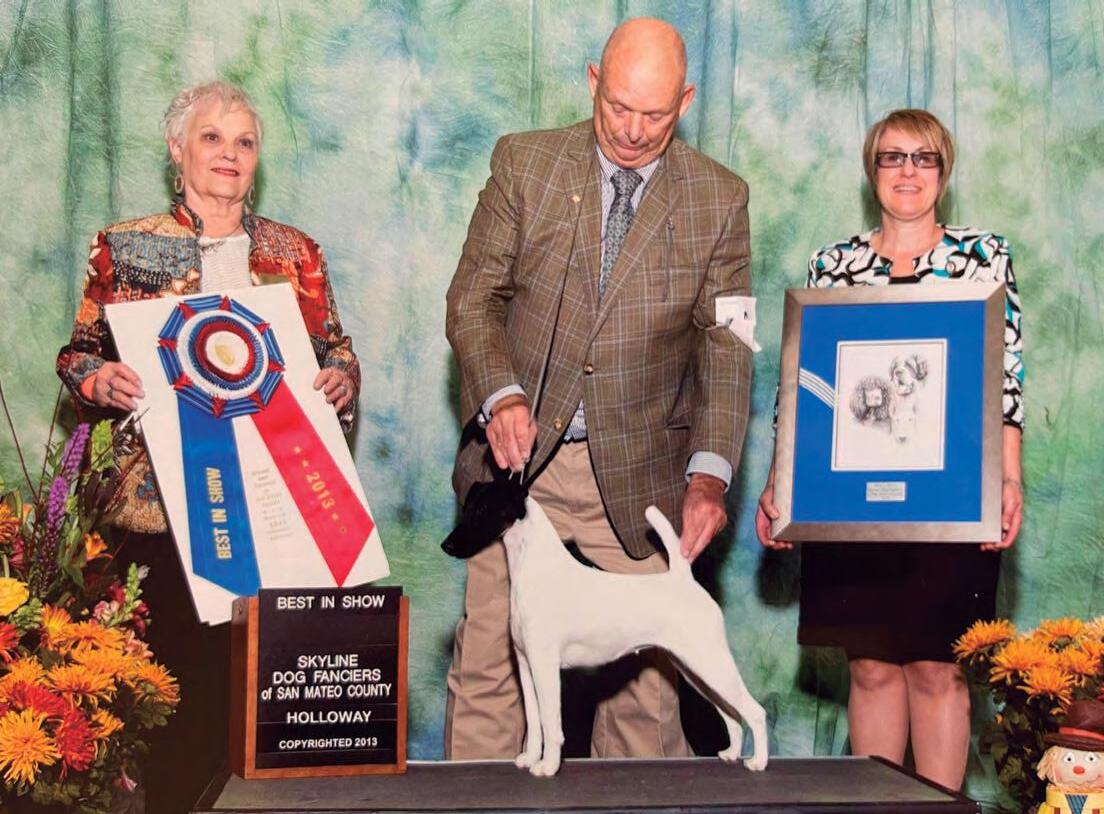
Now that you are retired what are your current pursuits?
I breed smooth Fox Terriers with Jenna (Orvos) who has worked for me for 13 years and spend a lot of time with my grandkids. I live in a beautiful country home in northern California surrounded by nature and dogs.
How do dog shows influence your life? Were there a lot of sacrifices you had to make over the years?
Dog shows were my life. You don’t have to make sacrifices if it’s what you love to do.
Have you ever considered becoming a breeder? What breed would you choose for yourself?
Lesley and I started breeding smooths in the 1980s and in the 1990s went into partnership with Jim Smith of Absolutely Smooth Fox Terriers. We co-bred some nice dogs and were very successful up until his death in 2018. Since then, Jenna and I have bred smooths under the Tregoad kennel prefix.
Have you handled at any shows outside of the USA? If
not do you wish to visit some of them? What is the main difference in European dog shows?
No and no. It is a business here in the states, and it is a hobby/sport over there. An amateur can win at big shows over there easily, not saying it can’t happen here but it’s not likely. It is a much more casual affair at most shows, and they seldom use professional handlers. Owner-handlers show their own dogs and accomplish a lot with them.
When you have some free time, what else do you like to do?
Work on my wax figurines that eventually go to bronze.
Were there any special dogs for you along the way with whom you had a special bond and connection?
Molly, Judy, Misty, and Adam. They were all unique in their own way, I don’t know how to explain it. They just had their own personal qualities that made them in exceptional in addition to their breed conformation.
What are the most important personal qualities to have that helps to make a handler successful?
You must have a big ego, want the win, and love dogs. It is a nomadic life, so you must enjoy traveling to new places, and have an understanding family who either travels with you or has the patience to handle the lifestyle. It isn’t for everyone.
For those who are interested in showing their dogs what advice would you give?
Get the best dog you can, stop talking, observe, and listen. Research and do the hard work, you won’t always win but work hard and it will happen. Maybe.

Basically my family was non-doggy, but I was an animal-loving child who used to take dogs for walks, buried dead birds, looked after cats and much more, all connected with animals. “ “


My paternal grandmother was however a dog lover and had had various breeds including Giant Schnauzers and Kerry Blues and I was fascinated by her stories about the dogs. She persuaded my parents to let me have a dog and she was the one who suggested a Scottie. I knew very little about them and had only seen a couple of Scotties ever, but was very happy to have a dog of my own, so any breed would have done, I think! I remember that my father wanted a Pug by then, but once a decision had been made, I sat about trying to find out everything I could about Scotties. Quickly, I discovered that most show winners were bred by Mrs. Westerström of Ferox fame or sired by her impressive team of stud dogs. She was the first lady of the breed at that time, another top person was Sven Sundquist. They never got on, but both had good dogs and imported some very valuable stock from England. I rang them and expressed an interest, and in hindsight, I am surprised that they had such patience with a schoolboy who must have been very trying! Mrs Westerström’s top sire at the time was Ch Gaywn Marquis (Ch Bardene Bingo – Ch Gaywyn Viscountess, thus litter brother to Chs Gaywyn Emperor and Gaywyn Titania), bred in the UK by her good friend Muriel Owen. Marquis had sired a litter locally at the Torslochs kennel of Birgit Norman. This was in the winter of 1970 and I still remember when we set off to look at the puppies in heavy snow. The only bitch in the litter was to become my foundation bitch and later Ch Torsloch Terzette. She was a big bitch, very hard-coated and correct but could have had a bit more overall quality. By this time I had become very friendly with Birgit Norman and spent all my school holidays at her kennels working there from early morning until I collapsed in bed , and I loved it! I could not get enough of dogs and I gradually started trimming and showing
her dogs, many of which became champions. Her best dog was Terzette’s younger brindle brother Ch Torsloch Torture, who later sired one of my first top winners, Ch Raglan Red Rarity (ex UK import Ch Reanda Ravita). His younger sister Raglan Rambling Rose produced the beautiful brindle bitch Ch Raglan Regatta, sired by Ch Raglan Rolls Royce (Ch Gaywyn Macalister – Ch Raglan Rio Rita, the kennel’s first homebred champion).
It was not easy for me to keep more than a few dogs at home, so many of my early dogs lived with Birgit Norman. She was always very fond of Elsa Meyer’s Reanda dogs, so I eventually wrote to her in my halting school English asking her if I could possibly stay with her one summer to help with the dogs. Much to my surprise, she immediately answered and said I was more than welcome. I stayed with her for six weeks the first time – in 1971 or 1972, I am not sure – and she opened up a new world to me! She ran a very busy famous kennel and bred on a fairly large scale. Many of her clients were from other countries and through her I became acquainted with a lot of well-known people in the breed, not least from various overseas countries. Early on, I bought a brindle puppy from her sired by Miss Penn-Bull’s Ch Kennelgarth Knight Errant (sired by the famous Ch Kennelgarth Viking ex a Bardenebitch, Bingotessa) out of a daughter to Ch Reanda Ringold, one of her famous dogs sired by Ch Bardene Bingo. Ravita was an immediate success in the ring and won BIS once at the Swedish Scottie club show under Alan Gill, but she was also a group winner. I think it would be true to say that she was my 2nd foundation bitch, and most of the Raglan dogs over the years trace back to either her or Terzette.
I was of course very influenced by Elsa Meyer and like her, wanted a prefix beginning with an R. My first choice, Rockford, was denied by the KC, so I choose Raglan, which I thought was short and had a British connection. More than 160 champions have since carried the prefix. My contact with Elsa Meyer continued uninterrupted throughout her life and she was a very close friend who in many ways treated me as a son. Through her I got to know German-born Bergit Coady-Kabel, famous Scottie handler in the USA, having previously come from Germany to work with the Reanda dogs. It was almost as if we were the two Reanda kids and when Elsa Meyer died at the grand age of over 90, Bergit and I donated a trophy to The Scottish Terrier Club (England) in her memory.
Elsa Meyer was a born breeder and was an expert on rearing puppies. In all, I think she owned 36 UK champions – quite an achievement! Through her I also came to know the other great Scottie breeders of that time: Betty Penn-Bull, Muriel Owen and Maureen Micklethwaite in particular. They did not always agree, but there was mutual respect and they all knew that the others knew too, which made them respectful. I call it healthy rivalry, and the breed prospered! Sadly, most of these breeders are no longer with us, or do not breed anymore, which accounts for the overall decline in quality and quantity.
On one of my early visits to England, I visited Nellie Holland (Noonsun) up in the north. She introduced me to many of the famous breeders in that area including the Gills, parents Willie and Elsie plus son Alan. Their prefixes were Gillsie and Gilllson and I remember how very impressed I was with their dogs, all kept in wonderful condition showing like stars. One of their


young dogs, Gillson Grand Monarch (Bardene Blue Steptoe – Ch Gillsie Highland Lass) had just been sold to Sweden, and I immediately decided that I must use him on my first bitch Terzette, who carried much of the same bloodlines through her sire Ch Gaywyn Marquis. The result was beyond expectation and from that mating my first homebred champion emerged, Ch Raglan Rio Rita. A repeat mating produced several more winners including Ch Raglan Rough Tweed and Ch Raglan Rich-and-Rare, who mated to the Kennelgarthbred dog Ch Noonsun New Generation produced Ch Raglan Royal Commander, one of the kennel’s top dogs of all times and twice Top Terrier in the mid 1980’s. A
little later I saw Ray & Ava Platt’s Tamzin-dogs whose type reminded me of the Gillsie/Gillson dogs, so it was perhaps no surprise that I also admired them a lot. Ch Tamzin Toy Soldier (Ch Wildermist Clifford ex Tamzin Total Era) came to me as a promising puppy and he became a valuable stud dog and is behind many top class dogs all over Europe. Tamzin and Raglan-lines have proved to be very compatible and some of the best European dogs today trace back to a combination of these bloodlines. Later on I was lucky to able to purchase the black bitch Ch Tamzin Annabelle who produced two good litters which included several champions that are now winning in the show-rings.
By now I had become very friendly with Betty Penn-Bull having visited her many times when staying at Reanda. It took a little time before we “found” each other, but she too became a lifelong friend and I think of her every day. I admired her in every way and found her endlessly knowledgeable and inspiring. She could spot correct type at a glance and had that unique ability of being able to distinguish between faults and minor failings. Her life was Scottish Terriers and I miss her more than words can express. Looking in the show rings and at people’s dogs at home, I quickly realised that almost all winners of note had one common link – Kennelgarth. Her dogs were always of a certain type and great producers, and I was keen to incorporate this. I was lucky inasmuch as both my foundation bitches carried strong Kennelgarthlines and I have always tried hard to keep within that line in order to safeguard breed type. I was lucky enough to purchase Ch Paddington Bear of Kennelgarth from Miss Penn-Bull as a young dog. He was sired by Ch Kennelgarth Toyboy, whom I liked a lot ex Stuane
Gypsy Queen and bred by June and Maurice Marshall.
To say that he was a good sire is an understatement! He sired top class Scotties in virtually every litter and in particular good bitches of which six different ones become group winners and general championship show BIS-winners. His daughter Ch Raglan Royal Serenade, Top Terrier in Sweden in 2006, is one of the best bitches bred here and she was a great favourite with most judges, all-rounders and breed experts alike. She won BOB under Miss Penn-Bull in 1996 here in Sweden and this was to become Miss Bull’s last judging appointment.
Following a series of health scares, Miss Penn-Bull decided to cut down on the number of dogs and offered me Here’s Wallace of Kennnelgarth as a gift. He was also by Toyboy and all Kennelgarth-breeding on his dam’s side, bred by Miss Wallis. Wallace was not a great dog, but, as always, of excellent breed type, and mated to some of the best bitches here, proved his worth at stud producing a string of winners including the groupwinner Ch Raglan Rockport and his sister Ch Raglan Rowena, the dam of Ch Rhum Tea for Two who came to me as a baby and had a spectacular career winning at every level at the height of her career. Miss PennBull died at the age of 93 leaving a gap which can never be filled. I miss not being able to speak to her about Scotties more than words can express.
Muriel Owen’s Gaywyn dogs played a very important role in the development of the breed here in Sweden and she was another legendary breeder whom I got to know well. They ran a large boarding kennel and grooming business alongside their famous kennel of primarily Scotties, although a few top class Westies and Sealyhams were kept and bred. The success of their dogs, always immaculately kept, trimmed and presented by
either husband Chink or daughters Catherine or Susan (later to become Susan Gaskell) was astounding, all of a certain lovely type teeming with quality. Muriel’s expertise is much missed today and she was a strong force in the breed in every way ensuring the future of Scottish Terriers. Their home near St Albans was a constant source of inspiration and hospitality and it was like heaven talking to her about Scotties too! Ch Gaywyn Venturesome, sired by Ch Gaywn Adventure Story ex Gaywyn Vogue) and brother to the lovely Ch Gaywyn Victoria, joined the Raglans as a 5 months’ old puppy and I was very lucky to be given the chance to buy him. He won well at every show and was a multiple

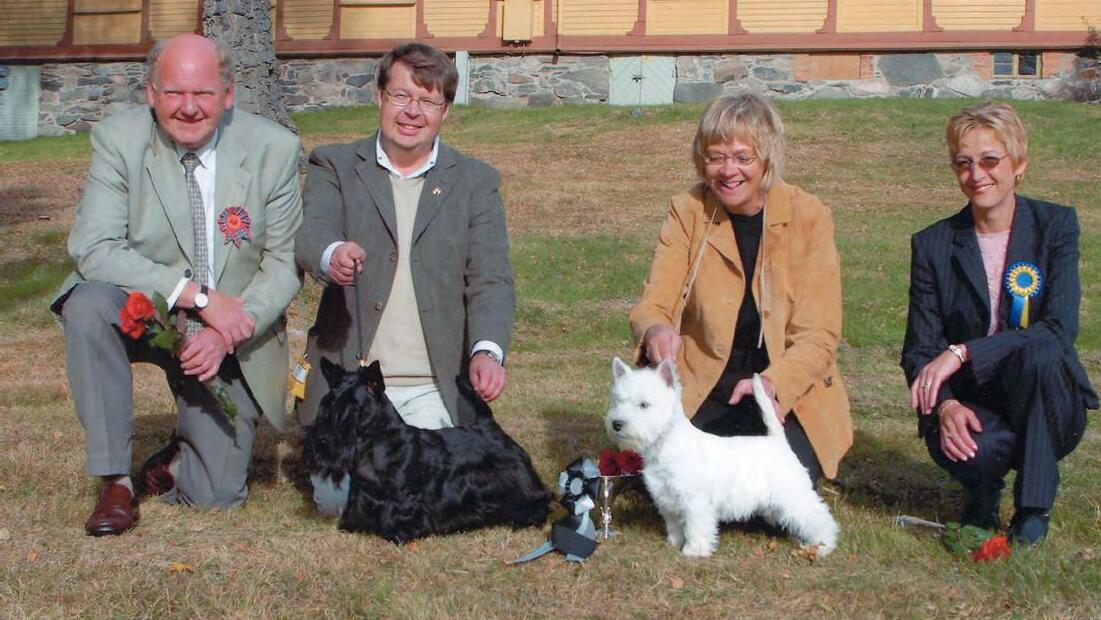
group winner, but more importantly a very good sire producing particularly well when mated to stock by Paddington Bear. Venturesome was one of the great favourites at home and lived a long healthy life with his kennel mates. The influence of the Gaywyn line has been very beneficial to the breed worldwide and their stud dogs are sorely missed today.
Over the years, I had admired Jane Miller’s Brio Scotties and one of the first dogs to make a huge impact on me was Ch Brio Pickpocket, exported to Sweden in the early 70’s and a major winner here. Jane Miller seems to have an enviable knack of constantly producing top class dogs and her dogs have always been a source to be reckoned with. On my first judging appointment in the UK in 1983 at The Scottish Terrier Club (England) Centenary Open Show I made Ch Brio Once Upon a Time BIS and I rank her as one of the best Scotties I have ever known. Gradually, I got to know Jane more, but it was a huge surprise to me when she via Muriel Owen expressed an interest in having one of my dogs, and I wondered if I would ever be able to breed one
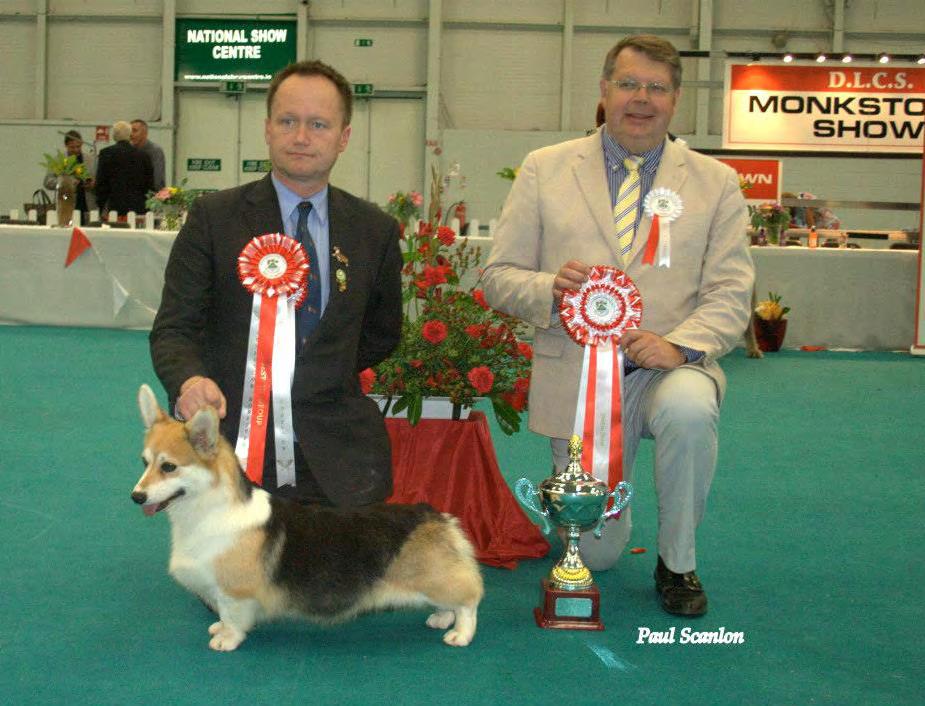
that was good enough. However, Raglan Rose Maiden, seemed to fulfill her early promise and came to live with Jane. The rest is history and in the capable hands and expert care of Jane, she blossomed into a real star crowning her career with res BIS at Crufts 2004 plus Top Terrier in 2003- a dream had come true, none of which had been possible without Jane, who has since become a close personal friend. Rose Maiden was followed by the export of the brindle male Royal Connection, who won two resCCs, but, more importantly, made a very valuable contribution as a sire with no fewer than eight UK champion . His champion tally include RoseMaiden’s two daughters Ch Brio Exquizite and Ch Brio Inquizite plus Stuart Plane’s Ch Stuane Florette, who won the coveted Puppy of the Year competition in the UK.
Rose Maiden’s first litter consisted of only males sired by the wheaten dog Ch Sweet Romeo du Moulin de MacGregor, bred in France by Ruth O’Connor and the only wheaten male ever to be kept at Raglan. Over the years I had admired her dogs and wanted to show people that wheatens could be good Scotties also, not just wheaten in colour, so managed to import him.
He was shown sparingly, but produced well to good bitches. His best progeny was perhaps Ch Raglan Rufus, top terrier in Estonia and a good producer of winners for his owner. From Rose Maiden’s litter, the black dog Brio French Connection came to live with me. He was a very outgoing ultra showy dog who was shown twice winning each time including topping the Terrier Group. Sadly he died very young from a nasty tick disease. This was a hard blow, but despite very limited opportunities, he produced several good Scotties including the lovely Ch Raglan Rival Queen, also a group winner and a champion mum. Her most successful son is Ch Raglan
Rocket Science who has had a an excellent career n Norway, but also won well in other Scandnavian countries.
Sweet Romeo’s black daughter Raglan Roman Empress (ex Ch Floreo Watercress, by Ch Here’s Wallace of Kennelgarth) was exported to Pam Pagram of the wellknown Torcraig kennel in the UK.
Empress was never shown in the UK, but mated to Ch All Shook Up at Torcraig she became a champion mum producing three UK champions, two Wheatens and one black. It has given me enormous pleasure and pride to see Raglan stock winning well in the UK, all thanks to knowledgeable breeders and judges of integrity and expertise.
The best Raglan dog ever has so far been omitted, namely Ch Raglan Rory, Top Dog All Breeds in Sweden in 2001 and Top Terrier of All Times in Sweden with 25 group wins. Rory was a wonderful dog in every way: a great joy to have around, never aggressive always on his best behaviour, very obedient and not quarrelsome, always showing and a top-producer of truly outstanding Scotties including UK Chs Raglan Rose Maiden at Brio and Ch So What Excalibur plus the big winning Italian -.owned Ch Raglan Roslin Williams. He returned to me after his owner Marina Guidetti’s sad death in 2009 after an illustrious career all over Europe.
Rory was the sort of dog one dreams of and I still feel a lump when his name is mentioned. He was a source of daily joy. His breeding was basically British being sired by the lovely black Ch Kantorns Johnny Walker (Ch Balgownie Brilliance ex Ch Raglan Rather Posh, by Ch Gaywyn Venturesome) out of another very good bitch imported from the UK, Ch Brueik Spellbinder (Ch
Wiljoy Wizardy ex Bruiek Tapestry), bred by the Misses Bradley and Herd. She was a difficult bitch to get in whelp, and despite many attempts only produced one puppy – Rory! Through him her name will go down in the history of the breed.
Ch Raglan Royal Serenade was now coming up to 7, but in fine form, so I could not resist the temptation to mate her to Ch R Rory. The litter consisted of 3 puppies, and it was obvious from the start that one of them was going to be special. Her name was Ch Raglan Royal Prospect, a lovely bitch and very difficult to fault. She had an illustrious career winning BIS at club shows as well at general championship shows. Her biggest achievement must however be to win BIs at the Swedish Terrier Club Centenary Show in 2003 under Harry O’Donoghue, the breed had been judged by Jane Miller. Prospect also



turned out to be a very prolific brood bitch producing three sizeable litters and when mated to Ch Dundee Cool Trooper (by Ch Gaywyn Venturesome ex a daughter of Ch Balgownie Brilliance) she produced the group winner Ch Raglan Royal Lady and Royal Connection, who was such a good producer in the UK. Prospect’s virtually unshown daughter Raglan Ruccola (sired by Ch Raglan Ricardo, who was a dominant sire living in Finland with Pia Wind of Rhum Scottie fame) carried on the family tradition as a good producer and in each of her litters champions emerged. C h Rosemary Smart is one of her very best daughters, also Ch Raglan Ready to Smile who had a big career from puppyhood and she is also a group-winner like her sister Ch Rachel Rose and brother Ch Receiver Back home in Sweden, I continued to live a busy life, and still do, graduating from school and later moving on to university where I graduated with a Bachelor’s and Master’s degree in English and French concentrating on a teaching career, which I still pursue, although various commitments now make it impossible to work full-time.
At my very first show in Sweden as an exhibitor, I got to know Monika Knutsson-Hall of Floreo fame and we instantly became friends, a friendship which has now lasted for more than four decades without any hiccups whatsoever. We share a common love for the breed and mostly see dogs similarly sharing the same visions and ideal. This has been a very fruitful and important friendship on a personal level, but also when it comes to breeding and showing Scottish Terriers. We have often used each other’s stud dogs and sometimes exchanged puppies, all bred similarly, and this has resulted in some very good dogs. Ch Raglan Rebecca was a lovely bitch owned by Floreo who mated to Ch Raglan Royal
Commander produced many champions including BIS winners Chs F Musseron, Mirabell and Mistletoe, the dam of Ch R Royal Serenade (sired by Paddington Bear). One of the best bitches that I have owned was my special favourite Ch Floreo Althaea, a truly beautiful bitch, a good shower a fantastic brood bitch with heaps of top winners in the ring including Chs Royal Scot, Rafflesia etc. In hindsight, I would say that Althaea probably was the most correct bitch ever to live here. I still value the friendship and exchange of views with Monika whom I like so very much, in fact I think she is probably the wisest and best person that I have ever known. Early on in the 70’s, Elsa Meyer introduced me to Maureen Micklethwaite, “Glenecker”. She took me under her wings as a young boy and we kept in touch ever since. I must have travelled the length and breadth of the UK together with Maureen driving, always up early and one of the first to arrive at the shows! Looking back, Maureen’s influence on me in dogs was phenomenal. She was the one who taught me the importance of good neck and shoulders which virtually all of her dogs possessed, but her overall interest in dogs and various breeds was very inspirational. In years gone by, she used to go around her area in Worcestershire delivering dog food to various kennels and thus became acquainted with many famous personalities in the world of dogs. Unlike most of the other great Scottie personalities, Maureen Micklethwaite’s interest was not limited to Scotties and through her I became friendly and interested in many more breeds, including Labradors. I remember well visiting Sandylands and Gwen Broadley in connection with a WELKs committee meeting, but also visiting Miss Mayhew of Peke fame and the Riu Gu Japanese Chins plus many more. I loved all this and looking back, I think this was very educational for me during what must
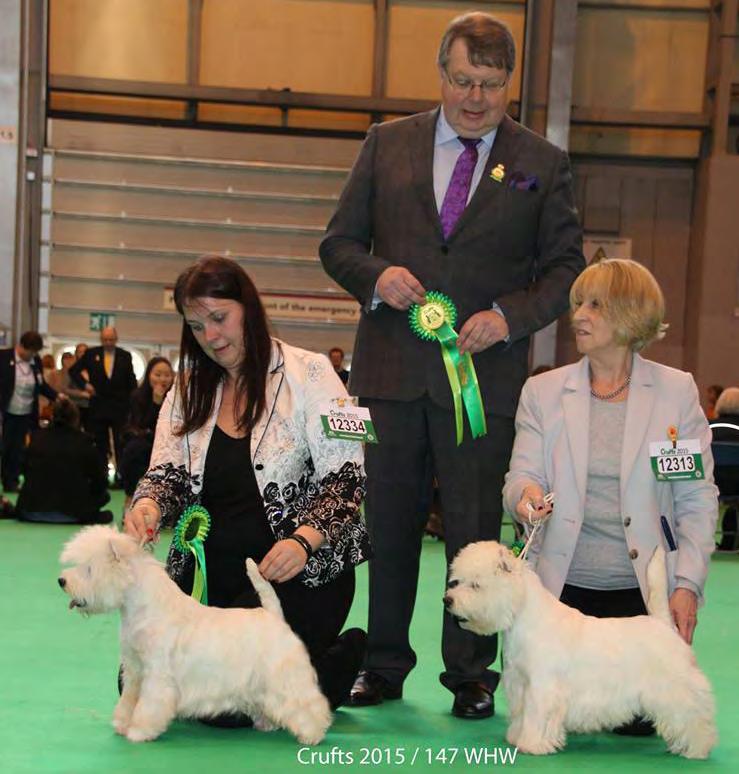
surely have been my formative years in dogs. Labradors had always fascinated and I have followed the breed for many decades through various friends and by attending shows etc, and they now share my life too and I have been lucky with my breeding having produced ten show champions, mainly from my foundation bitch Ch Guideline’s Eden Wall. She produced three champions from two litters, Mastermind, Morning Rain and the favourite, Ch Braveheart who did well at every level. I now have half a dozen Labradors at home including Ch R Nickname, multiple BOB winner and group placements plus some good younger dogs.
For some ten years I also kept a few Pekes, another favourite breed, and managed to produce one homebred champion. My greatest achievement in Pekes was however to win BIS at the club show underFiona Mirylees (Beaupres) and later also BIS under Ulla
Segerström, the famous Swedish allrounder, and Eve Bentinck with the English-bred dog, Ch Lien Rus Boi of Hyldewood, whom I had spotted in the ring shown by his owner Hilda Garwood, who was another great character that I got to know well. Gradually, I realised that it was impossible to do two coated breeds justice simultaneously so I stopped breeding Pekes in the 90’s.
I often think longingly of the years when the breed was the crown of the toy group and often wonder what has gone wrong?
I started judging very early and had my first appointment to judge Scottish Terriers was in Sweden in 1976. BOB was the lovely Ch Gaywyn Bow Bells, bred in the UK by Muriel Owen, but owned by the Jernhakes who had by then returned to Sweden after a short spell in the UK. Since then I have had the pleasure of judging
many breeds in most parts of the worldon numerous occasions and have met some wonderful people and seen some outstanding dogs. This inevitably means that my own breeding and showing activities have had to take a back-seat, but I still have about 10 good Scotties and half a dozen Labradors at home, all making sure that the days are never dull!
Laughingly, I often say that it is a humbling experience for judges to have to clean out kennels and look after dogs on a daily basis – I hope to be able to continue this for many more years to come!!
On top of other commitments, I lecture on different aspects of dogs here and there, as well as sitting on various KC committees. I enjoy it all very much, but often wish that there were more than 24 hours in a day!



by Anne Tureen
I first discovered the charm of illustrated books when I was about 20 years old and I ran into a copy of Humpty Dumpty, a story for children. I didn’t understand the tale until a couple of years later when I was in the USA, but I thought the drawings were delightful. I am still collecting such treasures all these years later, especially books centered on my lifelong passion: dogs.
A drawing can express so much more than real life. Compared to a photograph for example, which shows you how something looks, a drawing can express what the subject is thinking or feeling. Look at this book about a group of Dachshunds by Neue Folge for example, it is from 1923. I take this one down and page through it occasionally and I never tire of these wonderfully expressive figures. Dachshunds are an excellent subject for a drawing because they are exceptionally expressive dogs. They are perfectly comfortable in their strange little bodies and they feel a natural command in any situation. We can’t train them, they simply decide to humor us, more often than not they invite their humans to join in their plans rather than the reverse. Another dog like this is the Scottie. I would say I fell in love with Scotties through a book , The Scottish Terrier by Betty Penbull, here is one of hers about grooming the Scottie (foto 2). This is not exactly an illustrated book though there are a few illustrations. The text is magnificent, full of knowledge and love for the breed, and it is able to bring to life the essence of the Scottie.
Here is a very good demonstration of how to trim the ears.
Yes she has plenty of specific information, not just how to trim the ears or tail, but how these details come to be essential to what the Scottie really is, something even beyond type.
Neither the Scottie nor the Dachshund is ‘your breed’.
Yes, I would say I’m really a Wire person, but after reading this 200 page book, I fell in love with the Scottie, in fact I would say that this breed could be the emblem
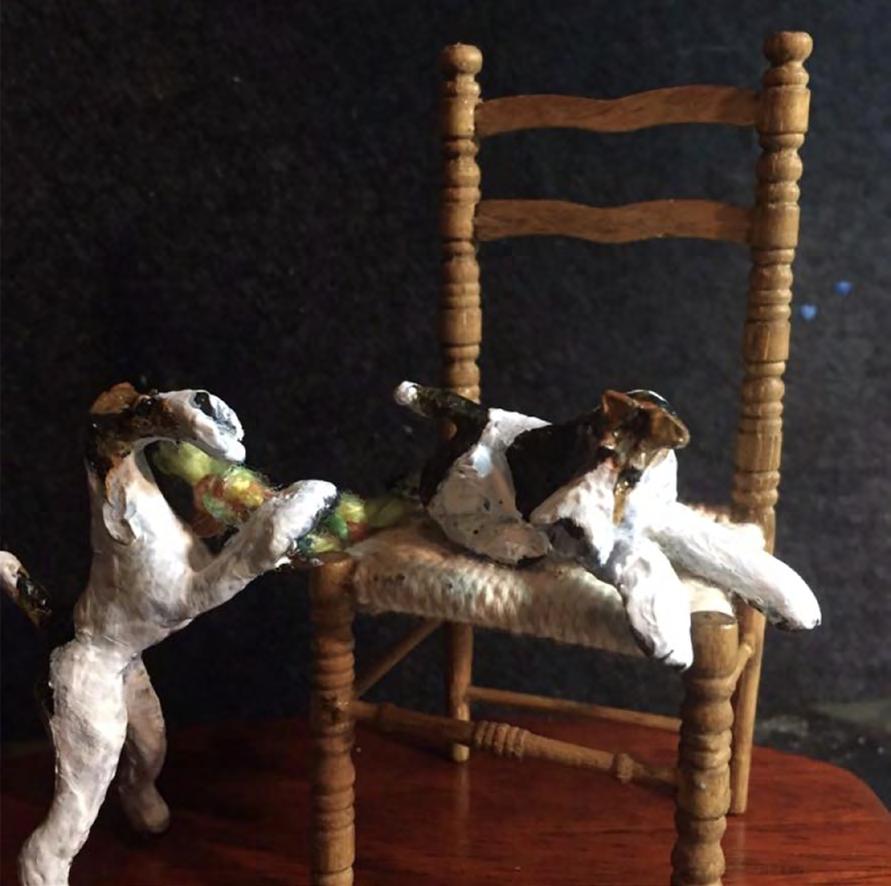

of ‘dogs’ in general. I’ve done a lot of work with West Highlands, and I was asked to write a breed book for the publisher De Vecchi on that subject, but I was the one to ask the publisher to write about the Scottie, I really


wanted to take on that project! These books published in the 90’s in Italy were something of a breakthrough, because before that, the publishing houses just found someone and gave them a number of breeds to write about. This series however was written by experts or breeders of that specific breed, so there is some quality content, it isn’t just a general book for the public with lots of photos. In fact I wish the Westie book had better pictures, someone in the publishing house just put in whatever they thought looked attractive, they aren’t pictures for experts to enjoy.
Lovely this watercolor on page 103 from your book The Scottish Terrier.
Yes, I did that, also all of the illustrations in the book I wrote with Alberto Marengoni on grooming. A breed book has a different objective compared to a ‘How To’ book like the grooming one. If a breed book cannot show you the essence of the breed it has no purpose. Plenty of times I have met someone who’d picked up a book on a certain breed, and afterward they acquired a dog of that breed, and another, and another.
Look at the Folge book again, it is almost completely an illustrated book, and you can see that the artist loves Dachshunds. He so beautifully captures all that a Dachshund is, that is what a breed book must do in words. Look at this drawing, in Shakespeare in the Kennel, by Persis Kirmse, the way the dog is lording over all he surveys, with his short little legs, yet he is the King more even than an Airedale who is so much more qualified as King, yet that is what a Scottie is all about, and you can see it in this little drawing.
Look at this darling little volume.
Yes, sooner or later it is going to break because I open it at least once a week.
It’s from 1902, nearly a century and a half...
I love the effects obtained with just two colors, very expressive. One thing about an illustrated book is that it has no confines, I mean this Dachshund book is in German, and, unfortunately, I don’t speak German, but I love this book, and it speaks to me quite plainly through it’s many illustrations. Anyone from Japan to Brazil can love this book. That is what draws me into my little statues (you choose the foto from dropbox) too. I start with the clay and try to obtain in miniature with all the detail possible, I try to capture a characteristic moment of a certain breed and then I cast them in bronze. Rick Chashoudian was my great master in this art. I have met so many dog people who are as crazy about this sort of collecting as I am. What is it that delights us in a little figurine of a dog? When we find one we like, we would never sell it, not for any amount!
That is absolutely true. One of the first Terrier people I met in Italy ushered me into his living room and said, ‘Now let me show you something fantastic’, and he had a glass case with his collection of dog figures, most of which you had made. They were his prize possessions.
Perhaps something like a figure or an illustration is so precious because it is a little spark of inspiration. In that sense Dogs by Rien Poortvliet is one of my most important books. I have to meet this man, he is a genius. His illustrations are also an integral part of the anecdotes he recounts in the text. He has fabulous books on other subjects, ‘Forest life’, and ‘Hunting’...the ‘Farm’, quite a large number of titles.

Where do you find all of these unusual books?
I spend entire evenings, and I confess- nights, prowling on ebay.
I had no idea.
I’m afraid it’s true I have an extensive collection of objects of all sorts. If someone comes into my home, it is very difficult not to stumble over something. It is all grist for my mill, I have my first show opening in about a month’s time in the city of Gubbio, there will be about 64 pieces, some of my little statues, drawings, some objects from my collection. It will be an eclectic sort of event with several themes. Gubbio is where San Francesco had his encounter with the she wolf, and where I discovered dogs, and the native city of one of the most important friends I’ve had, so I’d say this show will tie those threads together.


RINGSIDE CLICK
by Eddie Baute



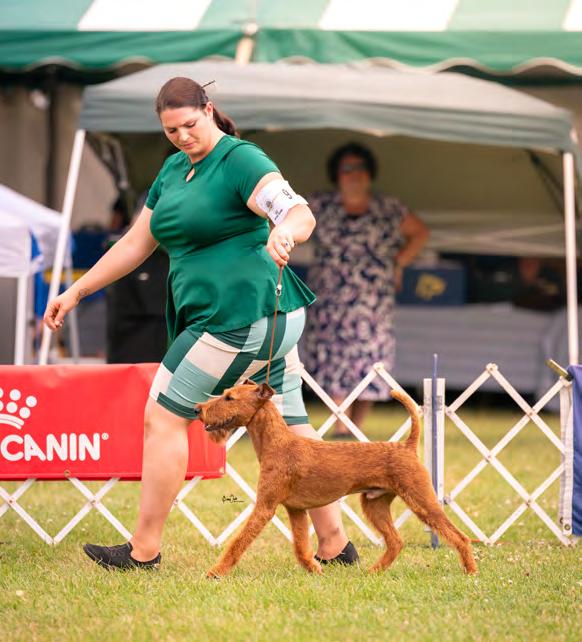
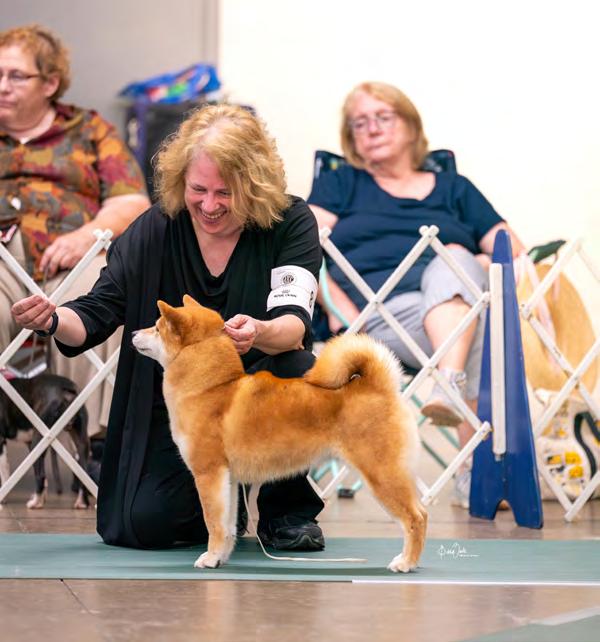


#1 - GCHP Next Generation’s Accelerate
Breed: Retriever (Chesapeake Bay)
Owner: M Schumann, A Levy, D Bleifer DVM, K Scribner & T
Gerardi-Miller
Breeder: A Levy
#2 - GCHS Clussexx Crowned King TKN
Breed: Spaniel (Clumber)
Owner: A Sedberry
Breeder: D Johnson & J Hubbard
#1- GCHG Daybreak’s Makers Mark W
Breed: Dachshund (Wirehaired)
Owner: D Kreig, C Puig & A Ferris
Breeder: D Krieg
#2 - Mason Hill Midnight Rain
Breed: Whippet
Owner: B Mason & S Dycha#3 - GCHB Lex Ayur-Es-Sahel
#1 - GCHB Crystal Fountain Tanqueray At Snoebear
Breed: Siberian Husky
Owner: H Shimizu & T & M Terella
Breeder: H Shimizu
#2-GCH Epic’s Rockets Red Glare CD RE OA OAJ
Breed: Doberman Pinscher
Owner: K Backues DVM & E & L Glofka
Breeder: E & L Glofka
#1- GCHP Monamour Beyond And Above [Dog]
Breed: Russell Terrier
Owner: P Howard, P Malvar, J Ferrera, A Hargrave & V
Swarowski
Breeder: K Miichi
#2- GCHS Spindletops Courtesy Of The Red White And Blue
Breed: Airedale Terrier
Owner: A Barlow
Breeder: A Barlow
#3- GCHB Top Pride’s Tuff Stuff
Breed: Retriever (Golden)
Owner: M Song
Breeder: M Song
#4- GCHS Killara’s Adventures In the Dark TD CGC TKN ATT
Breed: Spaniel (Field)
Owner: J Iorii & M Johnson
Breeder: K Balinski & G Krofron
#4 - CH Renegade Swamps Hitch Hiker
Breed: American English Coonhound
Owner: C & M McDonald & K Gordon
Breeder: K Gordon
#4 - CH Trio’s Bridgerton At Rosewood
Breed: Petit Basset Griffon Vendeen
Owner: M Rose, K Livingston & T Cannon
Breeder: K & C Livingston & P Opperman
#3- GCHS Blackjack Livin’ The Dream
Breed: Bullmastiff
Owner: V Allenbrand & E Rush
Breeder: V Allenbrand
#4 - Creos Hidden Tresure
Breed: Bernese Mountain Dog
Owner: U & J Corpataux
#3- GCHS First Class Delta Of The Raptor Squad
Breed: Bedlington Terrier
Owner: J Fogel & A Rich
Breeder: J Fogel & A Rich
#4- GCHB Abberann Michael Dwyer
Breed: Glen of Imaal Terrier
Owner: M Leahy & Dr. T Nesbitt
Breeder: M Zingler, S Hampton & Dr. T Nesbitt




#1- GCHB Heritage Ebony Eyes
Breed: Poodle (Toy)
Owner: T Zhao & J Kinsey
Breeder: T Zhao
#2- GCHB Tessier Wyntuk Anytime At All
Breed: Silky Terrier
Owner: S Mesmer & K Huey
Breeder: S Mesmer & K Huey
#1- GCHG Master Rock Calaco (Alonso Tojo)
Breed: Xoloitzcuintli
Owner: S Tojo & M Alonso
Breeder: S Tojo & M Alonso
#2- GCHB Lakeridge Secret Agent
Breed: Poodle (Standard)
Owner: D Ferguson-Jones & C Petrie
Breeder: D Ferguson-Jones
#1- GCHG Valkyrie’s Canadian Bacon
Breed: Swedish Vallhund
Owner: M & J Hennek & T Garwacki
Breeder: T Garwacki
#2- GCHG Riverside Boss Is Bets On CA FCAT
Breed: Cardigan Welsh Corgi
Owner: G Street & D Shindle
Breeder: D Shindle & C Bossi
Breeder:
#3- GCH BCR Pardon My French
Breed: Chihuahua (Smooth Coat)
Owner: H Maxwell & S O’Connell
Breeder: H Maxwell & S O’Connell
#4- GCHB Tauro Davinci
Breed: Pomeranian
Owner: J Januskauskaite Plunge & T Plunge
Breeder: J Januskauskaite Plunge & T Plunge
#3- GCHB Cedarhills-Shamrock Wheel Of Time At Daimle
Breed: Keeshond
Owner: T & D Benz
Breeder: T & B Cook & S Kelly
#4- GCH QB’s Grand Perfection
Breed: Boston Terrier
Owner: C Bosley & J & D Koon
Breeder: D & J Koon
#3- GCHS Copperridge’s Believe It Or Not FDC CGC ATT
Breed: Australian Shepherd
Owner: S Diaz Martinez & J Miller
Breeder: J Miller & S Blanco
#4- GCHS RPK3 La Brise Violet Celestial FDC
Breed: Pyrenean Shepherd
Owner: P Princehouse & R Krieger
Breeder: P Princehouse & R Krieger

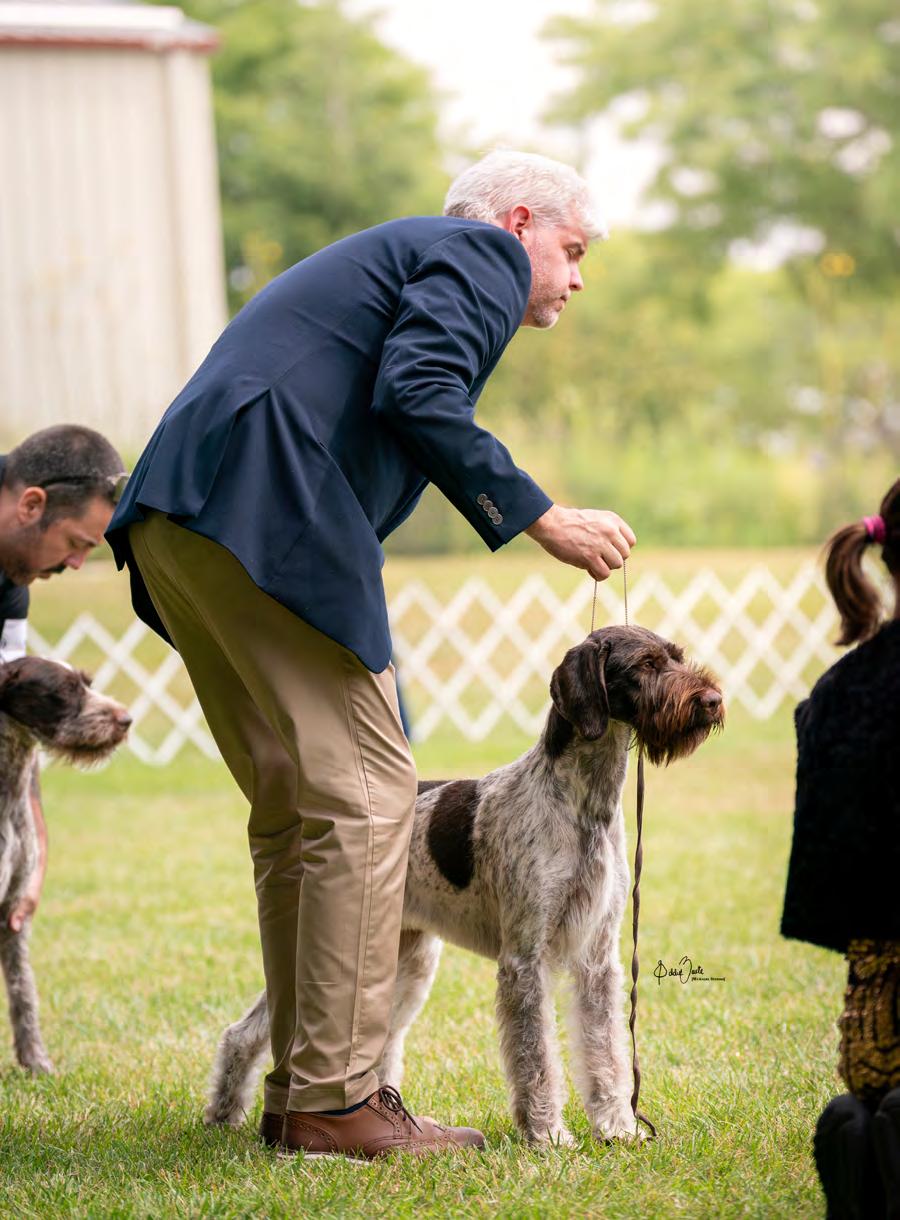

#1 - GCHP Next Generation’s Accelerate
Breed: Retriever (Chesapeake Bay)
Owner: M Schumann, A Levy, D Bleifer DVM, K Scribner & T
Gerardi-Miller
Breeder: A Levy
#2 - CH Cora Di Cortelara
Breed: Bracco Italiano
Owner: K & T Libertore
Breeder: M Roffia
#1- GCHG Averson Rock N Roll FDC BCAT
Breed: Portuguese Podengo Pequeno
Owner: S Carter & S Souza
Breeder: S Souza
#2 - Mason Hill Midnight Rain
Breed: Whippet
Owner: B Mason & S Dycha#3 - GCHB Lex Ayur-Es-Sahel
#1 - GCHS Blackjack Livin’ The Dream
Breed: Bullmastiff
Owner: V Allenbrand & E Rush
Breeder: V Allenbrand
#2- GCHB Crystal Fountain Tanqueray At Snoebear
Breed: Siberian Husky
Owner: H Shimizu & T & M Terella
Breeder: H Shimizu
#1- GCHS Spindletops Courtesy Of The Red White And Blue
Breed: Airedale Terrier
Owner: A Barlow
Breeder: A Barlow
#2- GCHS First Class Delta Of The Raptor Squad
Breed: Bedlington Terrier
Owner: J Fogel & A Rich
Breeder: J Fogel & A Rich
#3- Corlyn’s Diamond Dream
Breed: Spaniel (English Cocker)
Owner: R & P Vesely
#4- GCHB Top Pride’s Tuff Stuff
Breed: Retriever (Golden)
Owner: M Song
Breeder: M Song
#4 - CH Vitrina Miss Phryne Fisher
Breed: Borzoi
Owner: V Trantanella
Breeder: V Trantanella
#4 - GCHG Daybreak’s Makers Mark W
Breed: Dachshund (Wirehaired)
Owner: D Kreig, C Puig & A Ferris
Breeder: D Krieg
#3-GCH Epic’s Rockets Red Glare CD RE OA OAJ
Breed: Doberman Pinscher
Owner: K Backues DVM & E & L Glofka
Breeder: E & L Glofka
#4- GCHS Heart Mountain’s Bodacious At Sapphire Mountain BCAT
Breed: Saint Bernard
Owner: J Butler, T Ebert & W Bratcher
Breeder: W Menning
#3- GCHP Monamour Beyond And Above [Dog]
Breed: Russell Terrier
Owner: P Howard, P Malvar, J Ferrera, A Hargrave & V Swarowski
Breeder: K Miichi
#4- GCHB Abberann Michael Dwyer
Breed: Glen of Imaal Terrier
Owner: M Leahy & Dr. T Nesbitt
Breeder: M Zingler, S Hampton & Dr. T Nesbitt



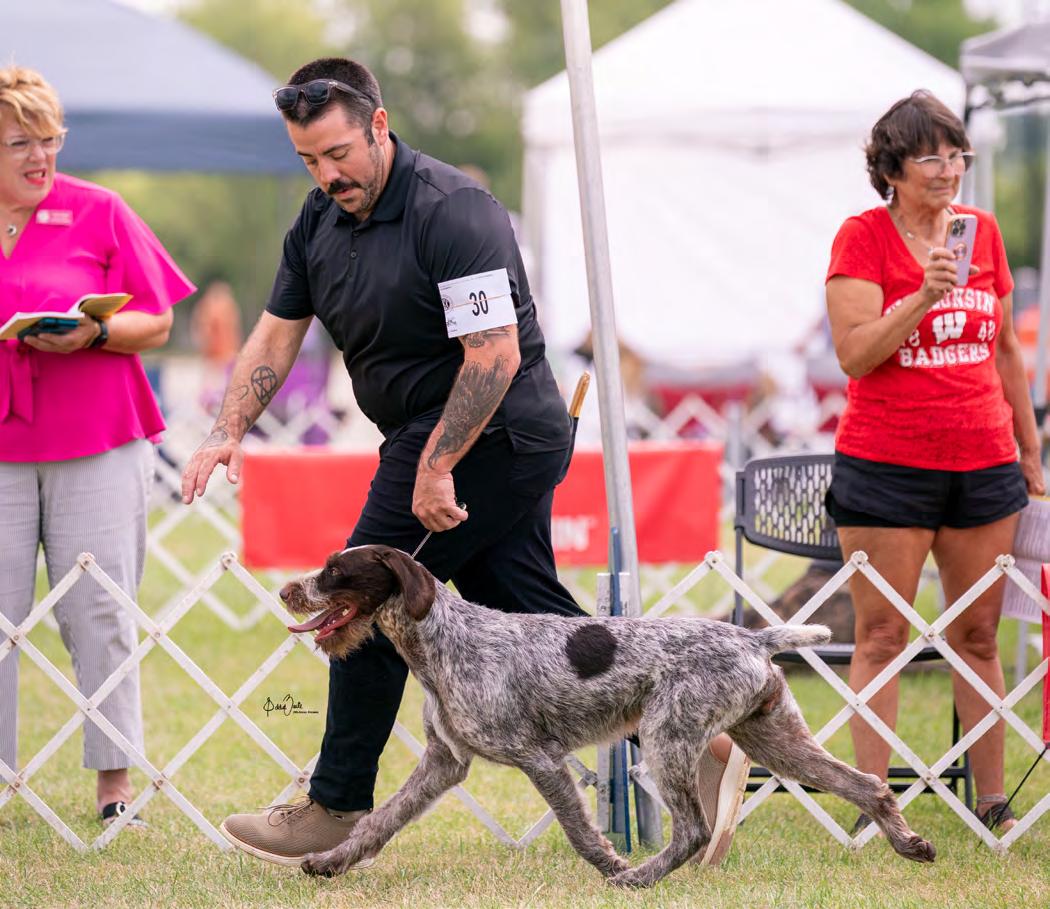


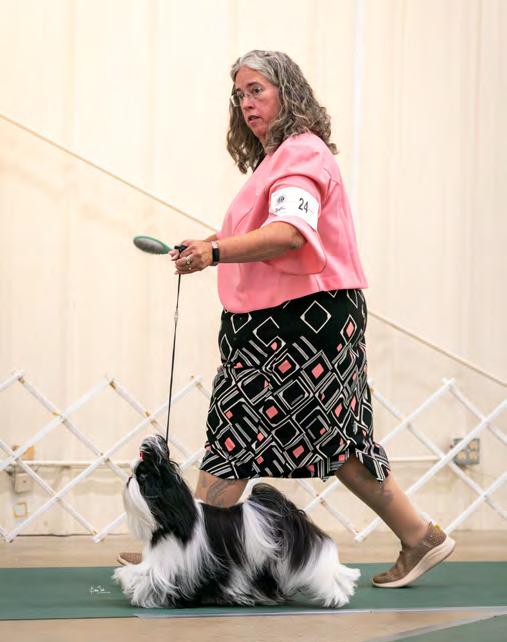
#1- GCHB Heritage Ebony Eyes
Breed: Poodle (Toy)
Owner: T Zhao & J Kinsey
Breeder: T Zhao
#2- CH Martin’s I’m A Dynamite-Time Bomb Puff
Breed: Maltese
Owner: P Bullard & D Martin
Breeder: D Martin
#1- GCHG Bosart’s And Gilja’s Royal Commander
Breed: Boston Terrier
Owner: M Estell & J Cole
Breeder: M & D Estell
#2- GCHG Master Rock Calaco (Alonso Tojo)
Breed: Xoloitzcuintli
Owner: S Tojo & M Alonso
Breeder: S Tojo & M Alonso
#1- GCHG Valkyrie’s Canadian Bacon
Breed: Swedish Vallhund
Owner: M & J Hennek & T Garwacki
Breeder: T Garwacki
#2- GCHG Affinity Flyhigh Hit Me With Your Best Shot
Breed: Australian Shepherd
Owner: M & K Taylor & C Kindle
Breeder: J Treadwell & C Kindle
#3- GCHG Candela Myangel Hola Papi
Breed: Chinese Crested
Owner: S Fox, E Baute & U Mencia
Breeder: S Fox, E Baute & U Mencia
#4- GCHB BCR Explicit
Breed: Chihuahua (Long Coat)
Owner: H Maxwell & S O’Connell
#3- GCHB Lakeridge Secret Agent
Breed: Poodle (Standard)
Owner: D Ferguson-Jones & C Petrie
Breeder: D Ferguson-Jones
#4- GCHG Prestige Westview’s Storm’s A-Brewin
Breed: Dalmatian
Owner: D Bennett, B A Johnson & A Henderson
Breeder: B A Johnson & S Buse
#3- GCHS RPK3 La Brise Violet Celestial FDC
Breed: Pyrenean Shepherd
Owner: P Princehouse & R Krieger
Breeder: P Princehouse & R Krieger
#4- GCHP Blue Heaven’s Orange Crush
Breed: Shetland Sheepdog
Owner: J Perusquia & J Roche
Breeder: L & L Graser
Owner: S Carter & S Souza
Breeder: S Souza




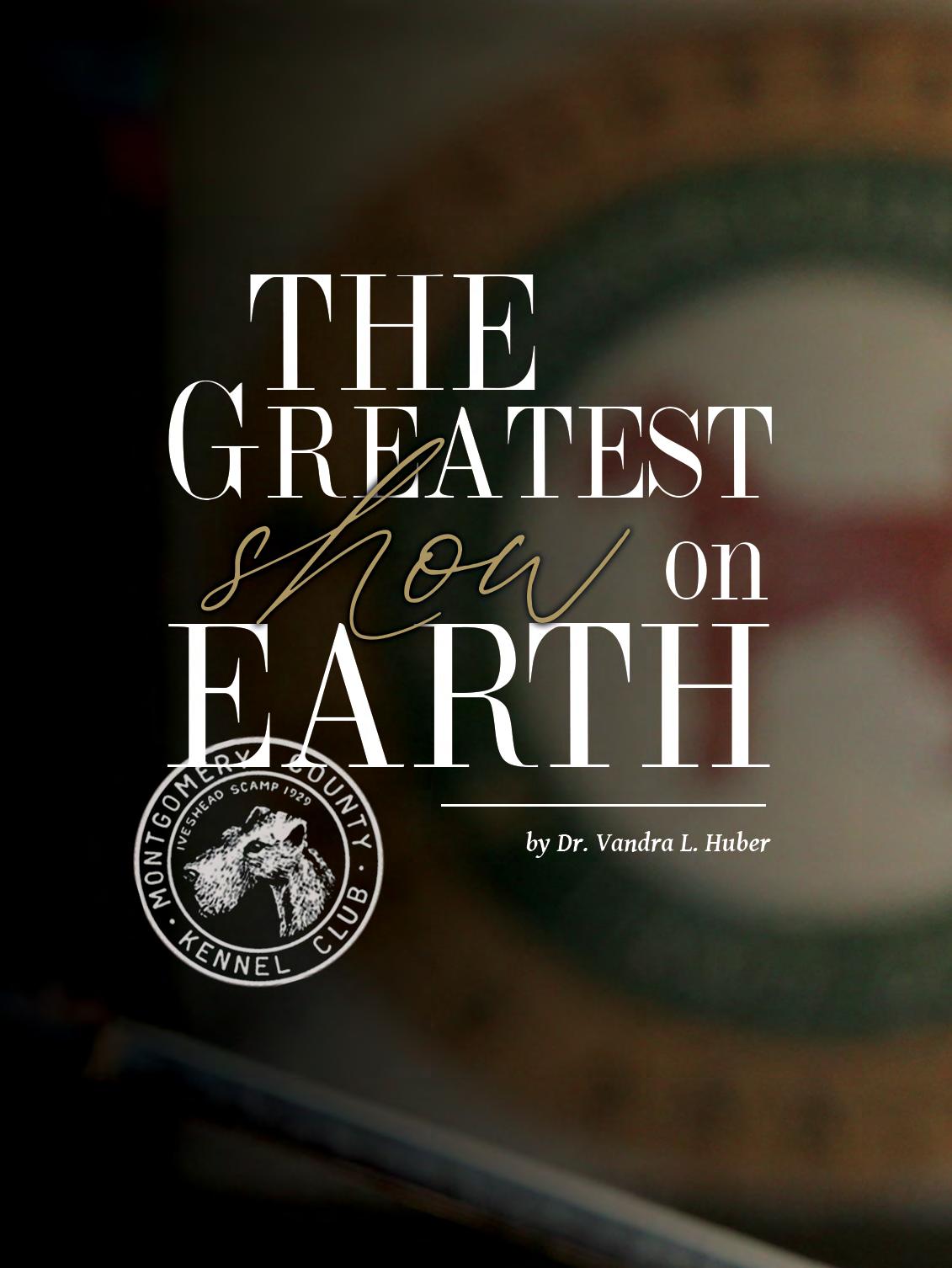
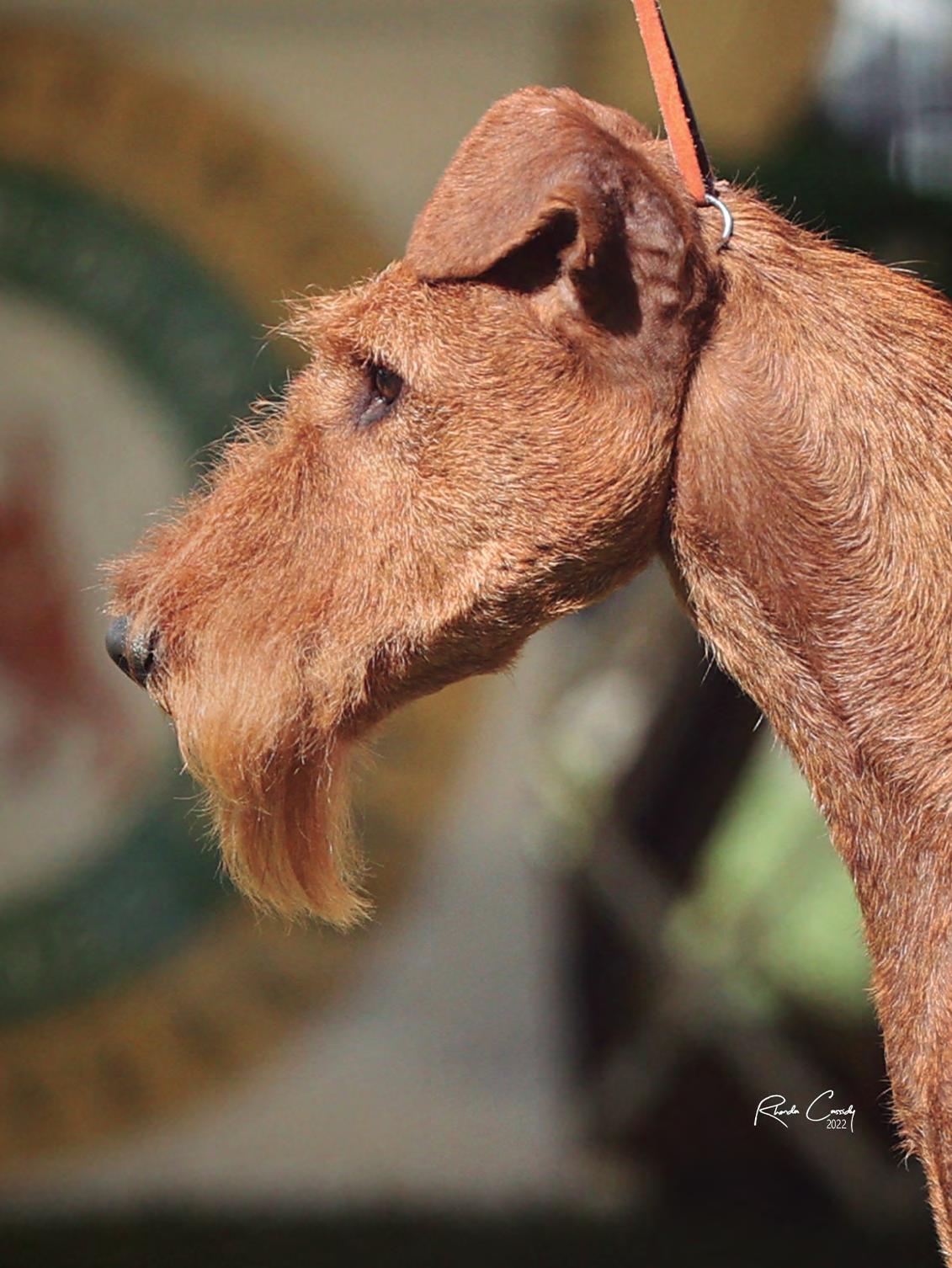

Ringmaster: We bring you Montgomery, a pied piper whose magical tunes of barking dogs and human chatter draw enthusiasts of all ages, from birth to 90, from the States to Europe, and around to Asia, into the pre-dawn darkness filled with marching autos and RVs, and onto the past-dusk world of exquisite canine beauty and awe. We present, for your pleasure, meticulously hand-plucked Wires, silver-gray waves of Kerries, heads-and-tails-up diehards, regal Airedales, mischievous Russells, scruffy Cairns, and so much more. We direct your attention to the humble and hard-working Borders, plucky little Norfolks, goofy and playful Bullies, and clever and sly smooth Foxes. Pay attention to the antics of dancing terrier puppies, the tightrope tension of sparring Irish, or the dancing Dandi Dinmonts. Gather round, folks, for the excitement of the Best of Breed adjudication. Hold your breath in anticipation. Will it be the high-flying Sealyham or the upstart Welsh, whose daring audacity makes him a contender? Will it be the group judge’s
familiar breeds of West Highland, Scottish Terrier, or Miniature Schnauzer?
Behind all this is a hard-working machine whose very life depends on the discipline, dedication, perseverance, sportsmanship, and guts of breeders. Watch out for the mechanized army of vans and motor homes slinking around like a caterpillar, slowly and mostly patiently in the early morning light. Watch the crates being unloaded under the big top in the pre-dawn darkness. Follow the trolleys rolling over any and all obstacles with the precision of a ‘wind-jamming’ circus band. Stay clear of the circus backyard. Here, RVs and tents; performers and support staff hover over table after table of canine athletes. Exercise the Irish; clean the kennel of the Lakie; wash the furnishings of the Irish; brush the Glen; and powder the Westie. The Big Show is about to begin. Like lion trainers, Handlers crack the whip in the setup area. Now, get out of the way. Handlers and assistants run from tent to tent, attempting to tame ring conflicts again and again.”
”Sit down, folks, and stay awhile. There are ringside seats available for you to watch it all. Witness the daring tension of sparring Scotties. Hold your breath! Are they too close? Feast your eyes on the wondrous parade of Wires entering the breed ring. Spot that one weak link, or a trace of backing down that turns hope into defeat. It’s a world of spectacle, wonder, and awe. It’s a place where inring trickery is diminished under the watchful eye and stern words of a judge. Who’s made the cut? Who’s out of the limelight? Then, suddenly, someone or some dog relentlessly pushes forward against impossible odds, surprising us all with a class or breed win. This is the Montgomery County weekend. Yes, siree. This is the story of terriers, and the women and men, the handlers and fanciers, who come together once each year for ‘The Greatest Terrier Show on Earth.’

Dr. Vandra L. Huber has been breeding Scottish Terriers for over 40 years and is an AKC Platinum Breeder of Merit. Under the McVan® prefix, she and her husband have bred more than 150 AKC champions. Her Scottish Terriers have won Best in Show at Westminster, Crufts, and the Benelux World Show. She is licensed to judge 90 breeds, including all 31 terrier breeds. A frequent contributor to dog-related publications, she primarily writes about terriers, dog show decision-making, and preservation breeding. Among terriers, she has owned Borders, Cairns, Russells, Parsons, Miniature Schnauzers, and both Smooth and Wire Fox Terriers. She has attended the Montgomery County [Kennel Club Show] almost every year since 1982. Her Scottish Terriers have won the Scottish Terrier Club of America’s (STCA) national specialty at Montgomery County seven times. Her Scottish Terrier, Am. Can. Ch. Gaelforce Postscript, holds the record for winning six national specialties in a row, three of which were at MKKC. In 2005, she judged the STCA’s national specialty at Montgomery County amid conditions of ringladen mud, straw, and cardboard. Considering herself a stoic terrier diehard, she braved the mud on a new knee that had been replaced only six weeks prior to the show. She has experienced Montgomery County in all conditions – rain, shine, and yes, mud – every year she has attended

Montgomery County is a time and place where adventure, laughter, and wonder mix to create pure joy and lasting memories. When Montgomery was at Temple University’s Ambler campus, LaRae Shafer of Chyscott’s Scottish Terriers recalls with a laugh how she and a couple of her terrier friends were driven to get a steaming cup of morning coffee at WaWa before breed judging began. Once their mini-van was unloaded, the three women, dressed in lady-like plaid skirts and sweaters, piled into the back seat. The driver kept waiting for a break in the cascade of cars circling the campus drive. Finally, seizing her chance, she merged into the steady traffic with a jerky start, unaccustomed to the stick shift.
Newton’s third law of physics notes that for every action, there is an equal and opposite reaction. In this case, there was a chain reaction. The sudden movement caused the bench seat to swing forward and then tip over backward, taking the women
with it. All that could be seen moving down the road were the driver and six legs dangling in the air. In their haste, these dog show and coffee enthusiasts had forgotten to lock the seat in place. They literally flipped out, but not until they reached WaWa and could finally stop. Heads turned even at that early hour as the trio ungraciously tumbled out, smoothed their skirts, pulled their sweaters down, and trotted into the store.
“We didn’t even try to fix our hair, nor did we look either way. People were already staring and smiling,” Shafer continued.
“We got back in the van, headed back to Ambler, and circled around the drive, laughing the entire time.” They righted themselves and have had a story to tell ever since.”
Another time, Shafer and this author were running late to Hatboro. Upon arrival, the two dedicated women slowly
meandered around the dirt road until they found the right ring. They hastily opened the rental car doors, jumped out, grabbed their Scotties from their crates, and ran to the ring. Arriving just in time to show, with ribbons in hand, the duo immediately took off – Sweepstakes started at 1 p.m. elsewhere. Everything had been planned with military precision: they would leave the car for Shafer’s Skye Terrier friend, who had a later ring time and would return the car to the hotel that afternoon. Since time was crucial, Shafer’s daughters, Krissy and Whitney, were ready to whisk LaRae and Vandra off to the sweepstakes in a second car. Everything went smoothly; they arrived on time, showed their dogs, and even won some ribbons. However, there was one small oversight: Shafer and Huber forgot to actually park their rental car. Left with its doors wide open, it remained ringside until the parking officials moved it to the farthest corner of the horse pasture parking lot. Shafer’s friend, without the aid of cell phones or key fobs, spent hours searching for the car, eventually finding it half a mile away in the farthest corner of the lot, with the keys still in the ignition.
Given the hectic pace of Montgomery County, even the most accomplished handlers can sometimes face challenges. Darle Heck recalls hiring Peter Green to show a wire fox terrier bitch in the classes for her and her co-owner. Heck had discovered a ‘sound wire fox terrier bitch with an awesome pedigree’ while judging in Saskatchewan, Canada. She described the dog to her terrier friend as ‘really nice and of good breed type.’ After convincing her friend to join the venture, they exchanged pictures of Kabodes Prairie Tumbleweed, better known as Tweed, and the photos sealed the deal. Excited to showcase Tweed, they decided to hire the renowned Peter Green for the Montgomery weekend.
That weekend, the enthusiastic duo sat outside the wire
ring at Devon, eagerly waiting for Tweed’s class to start. The American co-owner, in particular, was anxious to see ‘Tweed’ in person. Finally, the time came for the Open Bitches class. Wearing a jaunty plaid cap, wool suit, and tie, there was Green with a definitively female Wire Fox Terrier. The judge instructed the class to circle around and wait under the tent for their turns to be examined on the table. When it was Tweed’s turn, Green placed her on the table, set her feet just so, and waited for the judge. The American co-owner commented that Tweed looked different from what she had expected. Heck leaned forward for a closer look, then suddenly stood up, exclaiming, ‘That’s because it’s NOT Tweed!’ Shocked, Heck sprinted between and around the rings. Unable to catch Green’s eye, she hurried off to his setup. On her way, she spotted one of Green Team’s assistants casually walking another bitch towards the wire ring. Fortunately, she arrived before Tweed’s table examination was completed. The bitches were swiftly swapped. It appeared that the special’s bitch had been brought ringside too early, and Peter had simply grabbed the one that was there. Unfortunately, we did not place in the class that day. At the end of the day, Beth Sweigart approached the duo to inquire how things had gone. After hearing the story, she shook her head and remarked, ‘That explains why he said nothing when I asked him how it went. Men!
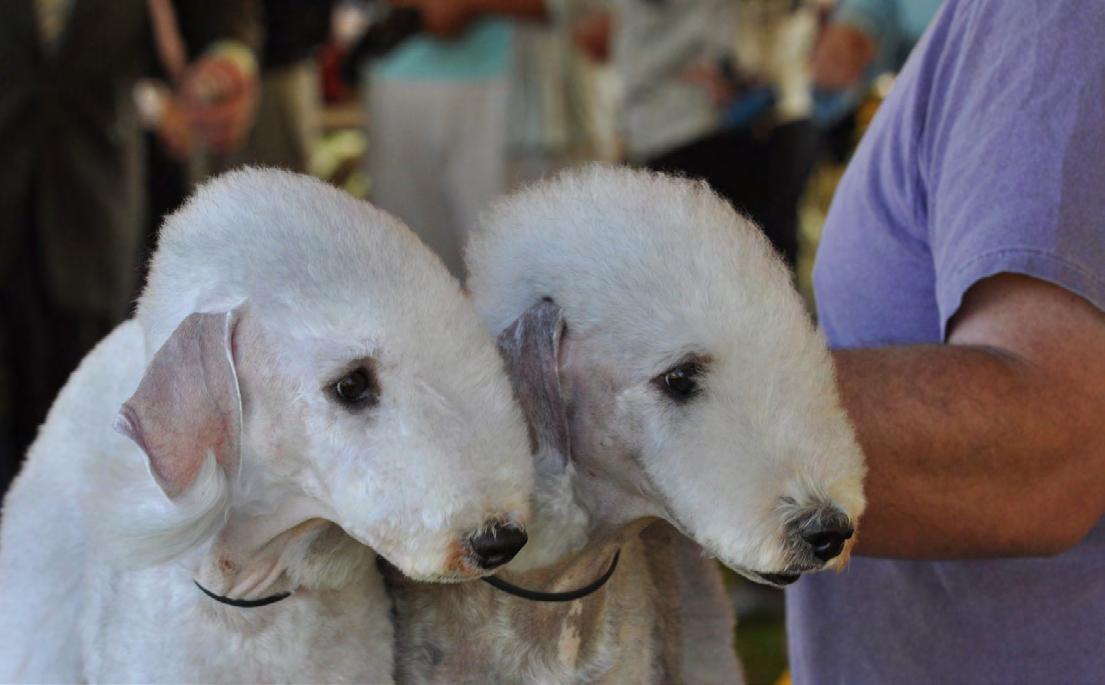
In conducting interviews for this article, numerous people shared special moments of awe and wonder from past magical Montgomery County shows. These included many firsts – their first time at the show, first win in a class, first victory over their handler, first group placement, and the first time meeting individuals who would become lifelong friends. The list goes on.
Bruce Schwartz of Bruhill Welsh Terriers, and the current president of the Montgomery Kennel Club, fondly recalls when Ch. Anasazi Billy the Kid, bred by Nancy and Michael O’Neal (Windsong, then Anasazi) and owned by Schwartz, won Best in Show at Montgomery County. The memorable year was 1996; Wood Wornall was the handler; Michelle Billings was the breed judge; and the Group and Best in Show Judge was Jim Reynolds. Billy went on to become the top-winning Welsh Terrier of all time with over 100 all-breed best in shows and sired 33 champions. Schwartz reminisced, ‘Nothing, absolutely nothing, can top going Best in Show at Montgomery County – particularly with a dog you truly love.’ He added, his eyes shining as he recalled the clear blue skies on that victorious day.
Canadian Breeder-Judge Marq Moran McQuinn from Hopscotch Scotties proudly remembers when Am. Can. Ch. Hopscotch Heads We Win, also known as Lucky, won the American Scottish Terrier National under Dora Lee Wilson on Montgomery day. ‘I’d won a lot of Best in Shows in Canada with this bitch. Her success wasn’t just due to her outstanding showmanship. Like many Scottie bitches, she usually walked with her tail and ears up. However, she had days when she was utterly uncooperative. Despite that, her impeccable breed type and soundness took her far,’ McQuinn explained.
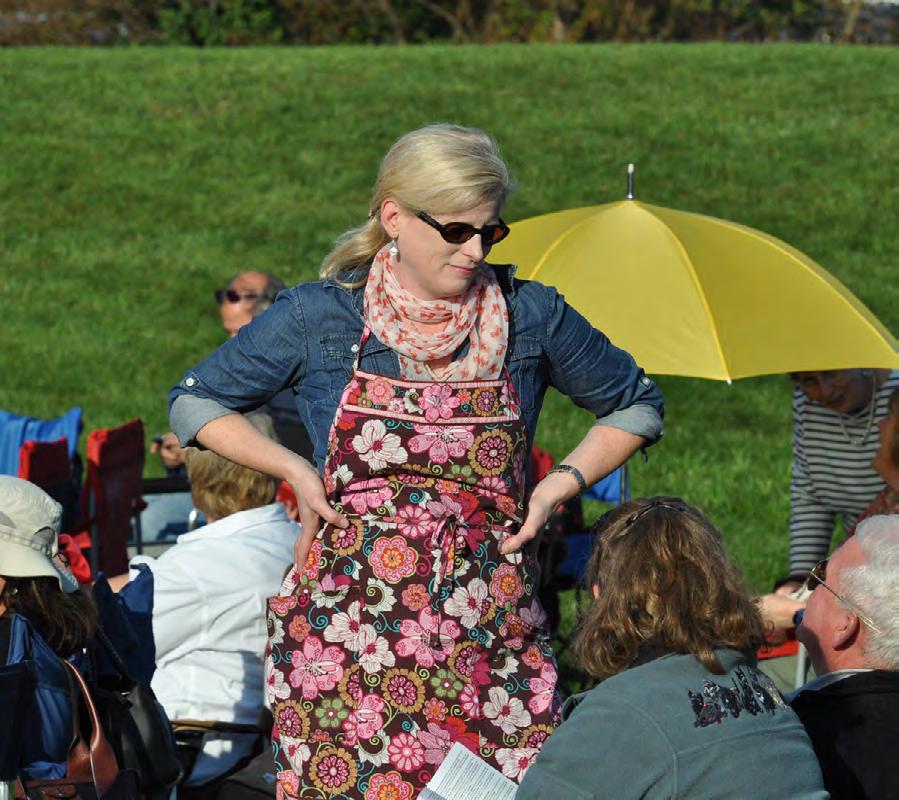
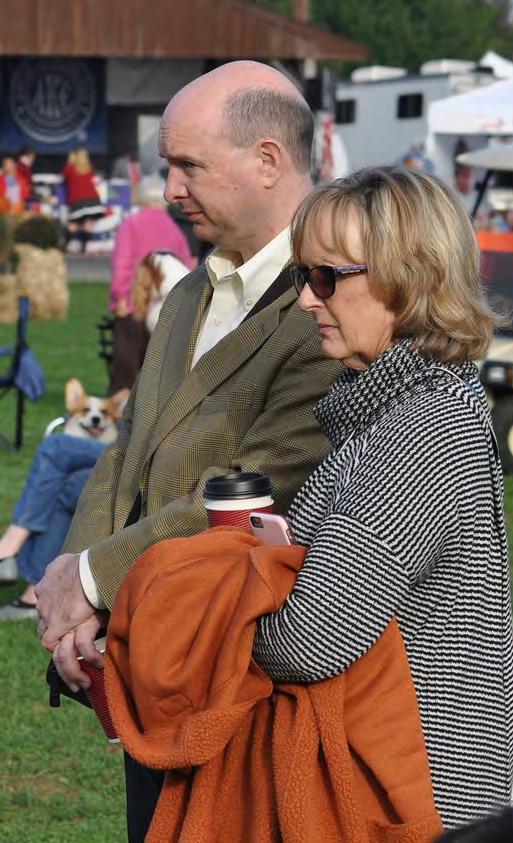
She noted that she couldn’t afford a U.S. handler to campaign Lucky, so she made an agreement with Bergit Coady-Kabel. Bergit showed her only during specialty weekends, flying her back to Canada afterward. McQuinn continued showing her at home until the next important U.S. weekend. McQuinn added that for an outdoor show on grass like Montgomery, they modified Lucky’s trim so she wouldn’t look like a caterpillar. The change paid off, and she won the breed.
McQuinn recalled, ‘Lucky was generally quite amiable and could hold her own with any dog. However, we were fortunate when Lou Auslander selected a Smooth

Fox Terrier for her to spar against in the group. There was a particularly snarky one being shown in Canada at that time, which Lucky detested. So, when she saw a Smooth approaching for the spar, she let out a warning roar, thrilling the crowd. In the end, only Peter Green’s Norwich, which I believe finished as the top dog of all breeds that year, stood ahead of her.
“The doggy press asked Bergit who she was showing. I had only bought one ad for Lucky that year in the US (after she won the National Rotating Specialty under the late breederjudge Jerry Roszman), so Lucky was mostly unknown to them” she recalled. At that time, no Canadian-bred dog had ever placed as high in the Group at Montgomery. Lucky was sired by Am.Ch. Perlor Playboy and was out of one of my Glenby Gallant Lad’s daughters. I think Lucky was the best Scottie I ever bred. Her Group 2 placement that year was the icing on the cake. At BWI, Clay Coady was not very happy that his Lakie took Group 3, behind the Scottish Terrier shown by his ex-wife Bergit.
Lauren Sorbes fondly recalls her first and only Staffie Bull, BISS GCH CH Manorview’s Lucky Charm BCAT, CGC, TKN. In 2018, Bucky, co-owned with Toni Pawson, garnered his first Select Dog title at just 14 months old under Staffordshire Breeder Judge Judy Heller. It was Sorbes’ first Montgomery and her first time ownerhandling ‘her pet’ under the Montgomery Big Top. Bucky and Sorbes followed up this win with repeat Select Dogs in 2019 and 2021 under Breeder Judges Dayna Lemke and Jason Nicolai, respectively. Bemoaning the fact that she won’t be showing or watching this year, she stressed that the show is about more than just the dogs. It’s about the people, the friendships you make, and yes, even being the Best of Breed runner-up.

Montgomery is a place where breeders, owners, observers, and even judges are dreamers with the grit, perseverance, and courage to turn their dreams into reality. Geraldo Reyes of Reydale Airedales has walked the Montgomery tightrope many times. In fact, this year, celebrating his 40th anniversary as a breeder, Reyes recalls two special Montgomery moments. The first was owner-handling his homebred Ch. Reydale Executive Decision, aka Russell, to Best of Breed in 1999, with judge Dorothy Taylor. Twenty years later, almost to the day, all-breed Judge Darle Heck (of Beinnein Scottish Terriers and Wires) awarded Reyes another first: Best Bred-By Exhibitor in Show to his
Airedale Terrier, Reydaleterrydale Rangel The Great Gatsby. Gatsby, bred by Reyes and co-breeders Gabriel and Yvonne Rangel, had earlier garnered the Airedale Terrier Club of America’s Best in Sweepstakes, judged by Mrs. Jean Surfus (Darbywood Airedales). Gatsby went on to have a significant show career and prove his worth as a sire. Heck returned this year, attempting to judge amid the winds at the 2023 Devon dog show.
Roxanne Huckstep attended her first Montgomery in 1997. “I convinced my husband, Jim, to take me to the dog shows in Pennsylvania. Without GPS and hotel reservations, we knew no one. We packed a cooler of drinks and food and headed north from Virginia on a Friday night,” she explained. “Following exhibitors from a parking lot to the Hatboro show site, we navigated the Pennsylvania Turnpike and backroads, unaware they didn’t know we were part of their caravan. I noted the roads for our return to the hotel.”
At dawn, Huckstep found Ring #15, designated for Scottish Terriers. She set up her chair in the front row just as the sun rose. Soon, Jane Phelan (Caevnes), wearing giant red glasses, set up her chair next to Huckstep and introductions were made. “I received a thorough education about the breed standard, grooming tricks, and pedigree analysis. Thankfully, I knew my Scottie’s dam and sire’s names and some pedigree details. That Sunday morning in 1997 was transformative,” Huckstep continued. “I met Julie Hill from Arkansas, Jacki Herron Forkel and Monica Madore from California, Arlene Brice from Pennsylvania, Julie Lockett and Linda St. James from Canada, whom I had previously encountered online through a Scottie email list. Canine artist Marion Krupp and her husband Fred were also there. Inspired by these connections, I joined the STCA in 1999.”
Like a traveling circus, Montgomery is a world unto itself. Behind the scenes, it is filled with its own rules and customs – some written, others unwritten but part of the code nevertheless. In 2006, the American Kennel Club first approved a Code of Sportsmanship. The first tenet states, ‘Sportsmen and women respect the history, traditions, and integrity of the sport of purebred dogs. Breeders, owners, handlers, and caregivers commit themselves to values of fair play, honesty, courtesy, and vigorous competition, as well as winning and losing with grace.’ It is with great respect that one observes these gentle – and yes, feisty – terrier fanciers congratulating one another following vigorous competition.
Showing dogs has always been a very civilized sport. Proper attire is one of many unique features of the weekend. Women and men plan their Montgomery wardrobes for weeks, if not months. While fashion has changed over the years, an occasional kilt still shows up. The challenge is versatility – particularly for women. ‘We have to bend, get down on the ground, and into the mud to bait our dogs. After grooming our terriers, we move them down and back to determine if the coat is sitting right; if not, we groom some more. It’s the same with a woman’s attire. They need to bend forward to ensure that the “girls” are where they should be. And we want to wear dark hosiery to assure ourselves that nothing is showing. Thank goodness, wearing pants is acceptable nowadays.’
Peggy Beisel-McIlwaine, who began with fox terriers, recalls an incident where she made ‘a poor choice’ of attire. It was her very first Montgomery County back in 1978, working for legendary handler George Ward.
Knowing the importance of the day, her mother had gotten her a ‘lady-like and suitable’ new wool skirt and sweater outfit from Saks Fifth Avenue for her debut at Montgomery County. McIlwaine wore it all day, crossing dogs, washing out set after set of dog legs, darting from ring to ring, following orders, and helping where she could. But the show ran late and into the dark of the night. As the sun sank and the air got fall crisp, she changed into a pair of warmer chinos. When cars with their lights on high circled the group ring, judging continued. To keep warm, McIlwaine was ushered into the car of Bob and Jane Forsyth. After introductions, Mrs. Forsyth, a sporty fashion maven, didn’t mince words: ‘You didn’t go into the ring wearing those pants, did you?’ Forsyth blurted out. ‘I wanted to crawl under the seat. It took years, lots of years, before I could even think about wearing pants at Montgomery County or any other show for that matter. And it took even longer before I could judge in a nice pair of pants,’ the fivegroup judge added.
In 1988, the legendary Anne Roger Clark awarded the Montgomery Best of Breed honors to Ch. Finlair Tiger of Stone Ridge. The kingly Airedale, coming out of retirement, was owner-handled by the late Bob. In Terrier Type magazine, editor Dan Kiedrowski reported, ‘After handing Bob the big plum, Annie Clark commented, ‘Now maybe he’ll get a haircut!’ And so Bob got a haircut – just not right away.’
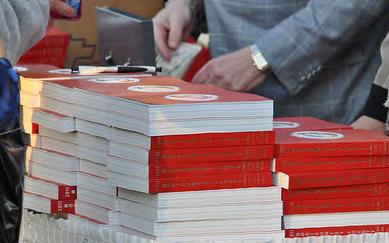
At first glance, maintaining decorum in the ring may seem easier for men. Not necessarily. There are a lot of guys walking around with mud on the knees of their pants. A long-term attendee at MKC recalled with a laugh the effects of mud on the guys. ‘I saw this one handler dash from one ring, maybe it was Cairns, in an attempt to make it to the Scottish Terrier ring on time. It was muddy, really muddy, wet, and cold that day. Running to the ring, he first lost a shoe in the grime. Next, his plaid cap fell off. Continuing forward, he sprinted into the ring only to trip on the tent ropes. Undaunted, he slid into place with an old-fashioned belly flop on the grass. The guy locked his arms and pushed the Scottie out in front of him. The handler was a muddy brown mess, but his Scottie looked good, really good. No mud anywhere!’ he chuckled. ‘The handler then set up, spread his raincoat on the ground. With care to keep the dog’s four feet on the coat, the handler tidied up and brushed his Scottie charge on top of his coat. Meanwhile, the handler continued to drip; the dog did not.’
For the brave, the feisty, the fun, and the colorful fashionistas, Montgomery also means hats. This is particularly true every four years when the Morris and Essex show coincides with MKKC. Hats are as individualized as the exhibitors at MKKC. This author uses the show as an excuse to buy a new hat or two, or even three, every year. One year, she brought an entire suitcase full of hats and plopped them atop the heads of exhibitors. And don’t think for a minute that headwear is restricted only to female exhibitors. Men don chapeaus just as often as women.



With a graphic designer as a husband, Karen Prokopetz (Gyverscots) commented that art adds to the grandeur of Montgomery County. She recalls watching Ric Chashoudian sculpt a Wire Fox Terrier. He would pluck one hair, maybe another, step back, look, then pull another hair. The process continued for more than an hour. ‘Ric was a true artist,’ she said.
Focused on past terrier shows, Prokopetz recalls the wondrous terrier garden by the now deceased artist Denis Springer. ‘Set up near the judges’ tent, it was magical to see life-size bronze sculptures of various terriers,’ she remembered. Staffordshire fancier and judge Dayna Lemke said it was fun and wondrous to help Springer’s partner, Judy Keller (now Felding), set up the garden.
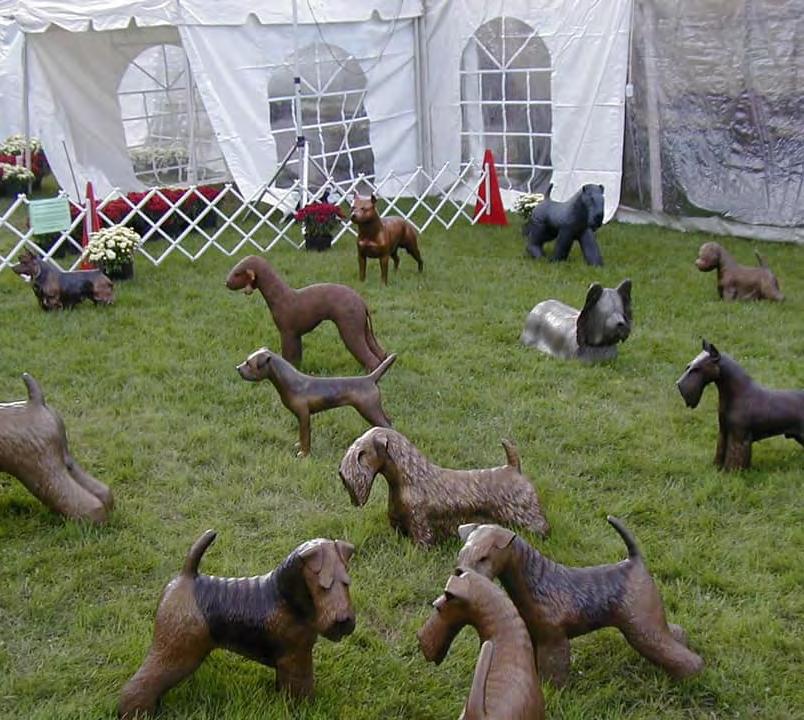


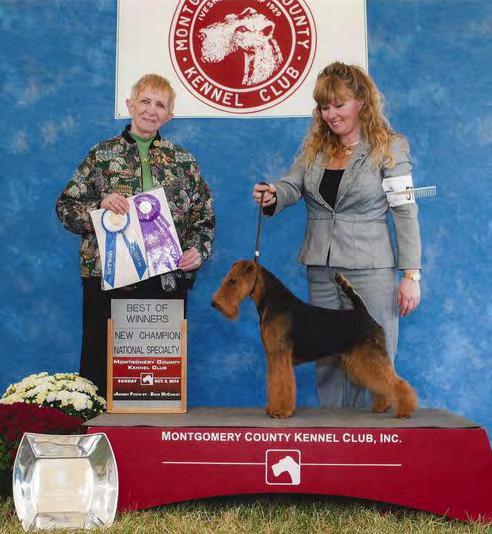







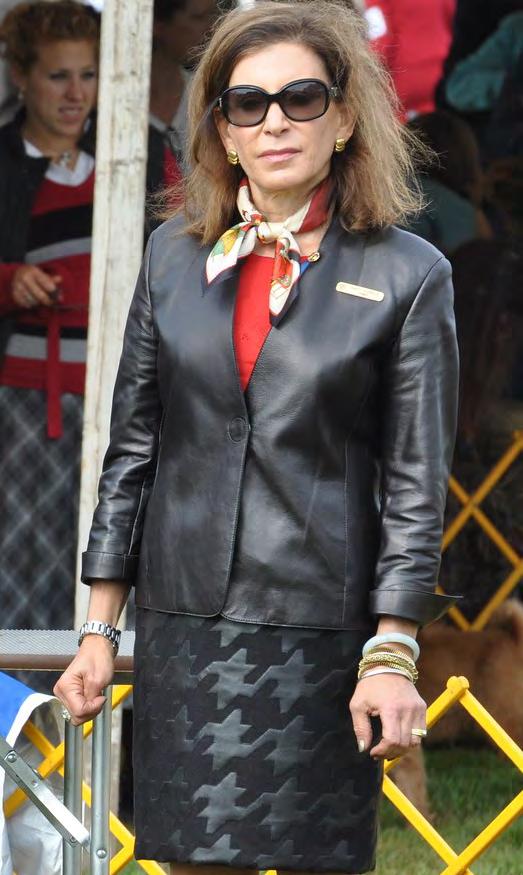




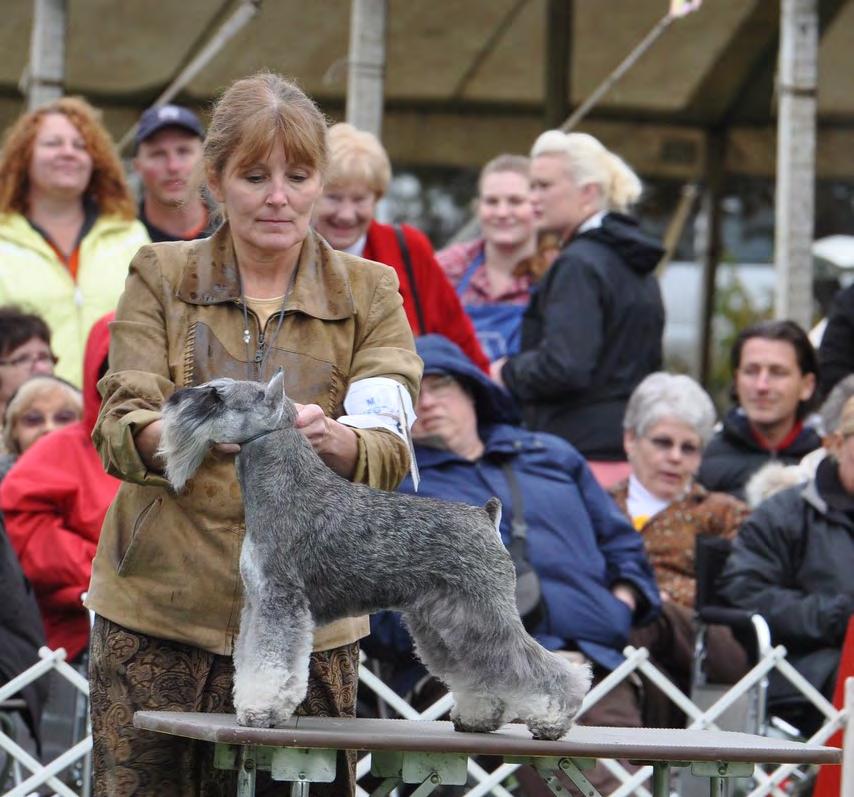
As I scanned the internet for memories about Montgomery, one stood out regarding the guiding principle of good sportsmanship. Sportsmanship is an understanding of and commitment to fair play, ethical behavior, integrity, and general goodwill towards an opponent. It affirms that the owner is disciplined enough to maintain perspective, poise, and focus on the bigger picture, doing what is best for the sport of purebred dogs. Sportsmanship is an absolute necessity during an important show weekend such as Montgomery County. As an owner-handler, Kathy McMillan (Minuteman Miniature Schnauzers) has piloted numerous Schnauzers to BOB at MKKC. This past year was no exception. She not only won the breed but also placed fourth in the group with Ch. Cherry Fields Super Fly, who was sired by one of her stud dogs.
In 2015, McMillan finished a Schnauzer named ‘Minuteman’s Up with the Birds’ at the Hatboro show. As she describes, she failed to move the dog up to the Best of Breed Class for Montgomery. Rather than show the dog in the classes anyway, she left the dog in its crate.
‘HE STAYED IN HIS CRATE. He wasn’t shown again in the classes on Sunday, so we might have a shot at bragging rights to “Winners at Montgomery County,”’ McMillan emphasized. (Recall that under AKC rules, it’s legal to keep the dog in any class until the champion certificate
is received by the owner; it’s also legal to leave a dog in the open class at any time.) The question is whether it’s ethical.
‘To this day, the practice of leaving finished dogs in the classes at Montgomery occurs in Miniature Schnauzers. But it also occurs in almost, if not all, breeds shown at the prestigious show. It has for years and likely will for many more years unless the rules change,’ McMillan continued. ‘But it should stop. It’s deeply disrespectful to other competitors and violates the spirit of good sportsmanship. If you’re confident that your dog is good enough to finish at Montgomery, then hold it back. If you aren’t, and it attains the points needed for a championship before the prestigious day, then move it up. Your choice - JUST PICK ONE. And don’t justify your actions by saying “everyone else is doing it.”’
She further states that the sport of purebred dogs needs to expand, not contract. The decline in the number of terriers generally, and specifically in the number that are breeding stock, must stop. ‘We need to encourage new people, along with our infrequent exhibitors, to engage more often and tackle competition at these higher levels. A big win – first place in a class of 10, a reserve winners bitch, a placement in the Bred-By Exhibitor Group -- on such an important day can sustain someone’s enthusiasm for years,’ she continued, adding that they certainly need to earn those wins. But they
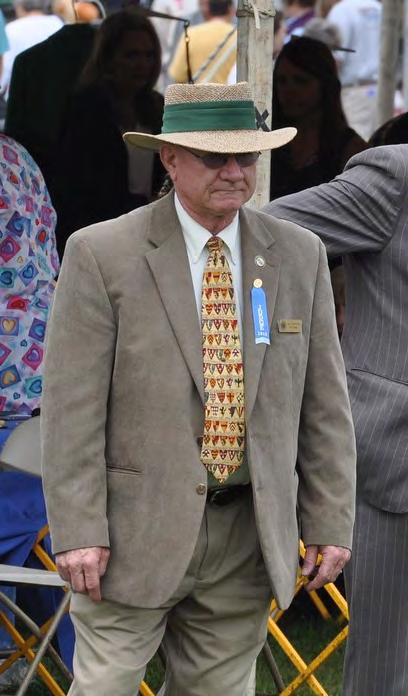
should not have to defeat a professional handler with an already finished dog or a breeder who remains mute, knowing but not saying that his terrier actually finished the weekend before, and keeps the dog in the classes anyway. ‘Handlers adding “bragging points” to dogs who finish at Montgomery may be a small factor in the great scheme of things. But it adds to the drip, drip, drip of negativity that’s wearing the sport down.’
Nora Lanning attended her very first Montgomery County weekend this year. It was a really big deal for her, something she has dreamed about. She planned to show her young Scottish Terrier and just maybe finish him on the magical weekend. As his points crept closer to the major number of 15, she stopped showing him and waited. For Montgomery, she entered her dog in the classes for each show, including the parent club sponsored sweepstakes and independent specialty. She was ready to go.
But she and her mentors counted wrong. The AKC Championship certificate came two days before the shows closed but after she had made her Montgomery entries. Yes, he was already entered in the classes. She could have left him there. Since she was relatively new to the sport, no one would likely be the wiser. But she decided to move him up. ‘I’d hate it if someone took points away from me. And I couldn’t live with myself if I took points from someone else. It isn’t right, and I couldn’t do it,’ she explained. ‘I love my dogs; but I also love the friends I’ve made in the sport. I want to play the game right. So I moved him up. He likely won’t win, and I can live with that. I couldn’t feel good if he took points away from another deserving Scotsman. I’m still looking forward to seeing firsthand one of my dogs being shown at Montgomery. That’s good enough for me – for now.’
The Munchies Under the Big Top
Circus employees and day help worked hard setting up and taking down tents, tending to animals, and exerting themselves physically, whether flying high on the trapeze or clowning around. Workers’ contracts – particularly during the Great Depression – guaranteed three square meals daily. And we’re not talking about processed foods like today. Nope, it was lots of protein, healthy breakfast fare. There were always circus ‘grab joints’ with free-flowing coffee and sandwiches available to snack on between meals. Today, we call them food trucks. Concomitantly, circus attendees always looked forward to beloved concessions, including Cracker Jack, popcorn bricks (brick-shaped popcorn balls), spun cotton candy, roasted red peanuts, stretchy taffy, and pink lemonade.
Food at Montgomery County is equally important –when there is time to eat it! After all, you need energy to unload, exercise, embellish, prepare, and show a terrier. For many years, Montgomery offered a proper sit-down lunch under a big top tent. Officials, owners with time to spare frequented the MCKC Food Tent. But as costs have risen, the ‘civilized eatery of Montgomery’ has gone the way of so many other traditions. With graband-go dogs, bottled water, chips, cellophane-wrapped pastries, and morning java, the silver-plated food trucks were all that were offered for many years. Scottish Terrier enthusiasts look forward to Marg Rosa’s tiny, homemade shortbread cookies. She’s been bringing a tin to the show since the mid-80s.
Many years ago, Michael Krolewski (McVan® Scottish Terriers) and a few doggie friends decided that the sitdown Montgomery lunch took too much time and the food trucks left the taste buds wanting. To fill the gap,
he searched out a pizzeria near the Ambler campus. In addition to Italian food, the family-owned restaurant also offered Philly Cheese Steak sandwiches that were tasty and could be delivered. Since then, his favorite activity has been selling tickets and having the Philly Cheese Steaks ‘with’ or ‘without’ onions delivered to the show ground. ‘We’ve been doing this since the mid-1990s,’ he explained. ‘I think the most we ever had delivered was about 100 sandwiches.’
To ensure that no one could accuse Krolewski and his team of foodies of competing with the on-site vendors, the cheesesteaks were delivered curbside at the show and passed out on the ‘public’ sidewalk. For the behindthe-scenes workers (handler assistants still fluffing up furnishings or exercising dogs), to setups – steak sandwiches with the works (steak, cheese, mushrooms, peppers, onions, and red sauce), chicken and cheese, beef or chicken and mushrooms, pizza with beef, marinara and mozzarella, and the plain Jane – just the beef, were available. Filled with thinly-sliced ribeye steak and cheese on a hoagie, the tradition continued this year, albeit on a smaller scale. ‘I tried a new one –Steak, grilled salami, fried onions, 1000 island dressing, mozzarella and provolone cheese (never Swiss), lettuce, and tomatoes. It was a lot, but I ate it with gusto,’ Krolewski continued, smacking his lips.
‘For the past few years, breed clubs have been free to bring in their own smorgasbords of goodies,’ Montgomery Kennel Club president Bruce Swartz noted. It depends on whether exhibitors have time to enjoy the food. Handlers usually do not. This year, MKC offered free-of-charge sandwiches, chips, and cookies – fresh from the local 24-hour WAWA. Attendees could munch on these snacks as they watched the various groups.
The prepackaged food went fast, very fast. ‘There will be hors-d’oeuvre sandwiches at the group ring.’ By group time, show tensions had lessened for most exhibitors, and hunger set in. The finger sandwiches went fast, very fast.
Devon, Hatsboro, and Montgomery are virtual cities of canvas tents strung together like a multi-ring circus. Being outdoors, the shows are subject to the ravages and beauty of nature. There are frost-snapped oaks in yellow and red. Sugar maples add notes of gold and scarlet as the thermometer drops. The weather is fickle, seesawing between sunny blue skies and torrential downpours. Showing coated terriers in this weather mix is challenging to downright impossible. When the shows were held on the Ambler Campus of Temple University, the Westies, Norfolks, and Norwiches were lucky. They had a sidewalk crisscrossing their ring, making it relatively easy for the dogs to go down and back. The Kerries, Airedales, and the author’s breed of Scottish Terriers were not so fortunate. One year, handler Denis Springer sprinted to the Scottie ring, but the grass was slick with rain, and he slid backwards. Soaked from head to foot, he still managed to keep his dog from landing in the mud.
On his soaked belly and with his arms straight out in front, he held the silver brindle Scottish Terrier he was showing a few inches off the ground in front of him. Grinning the entire time, he bellowed, “Behold my Scottish Terrier entry No. XYZ.” That same day, another famous handler showed up with his wheaten Scottish Terrier. The dog was definitely a contender for the breed – except in the rain the dog dripped daffodil-red color.


In 1999, Reyes, who had won the Airedale breed, was covered in mud. While he could wipe clean the legs of his Airedale before heading to the group ring, his pants were not so lucky; they were splotched with mud. They remained that way for photographs of the win. Reyes explained with a shrug, “I just stood directly behind Russell, hoping the dried mud on my pants would not show in the picture.” Wire Fox Terrier Breeder-Judge Beisel-McIllwaine judged the Wire Fox Terrier breed
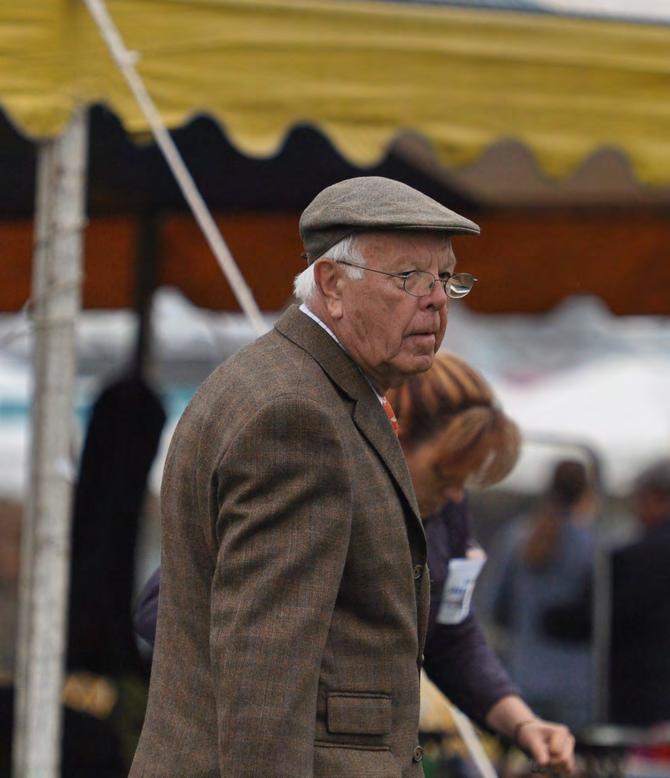
at the same show. Because she was a Wire Fox Terrier breeder-judge, she was really looking forward to getting a good picture of her BOB breed. “After the group, the late Bob LaRouech didn’t even rewash and dry his Wire for the photo. The dog looked like a brownsplashed Dalmatian,” she said.
The late Judge Ann Katona recalled one of her favorite memories of the weather at Montgomery. She was judging her own breed, namely Kerry Blues, at MCKC. “The weather gods were not really kind to us humans on that day. (The dogs couldn’t have cared less that it was raining—not just raining, but RAINING!). The rain had puddled just in front of me,” she recalled. “Michael Kemp was showing a young dog in the Best of Breed class. As Mr. Kemp was returning from the down and back, he lost his footing and slid into ‘home plate’ on his rear end as the dog stood in a perfect free-stack, looking at
him as if he were crazy! So, I yelled out as loud as possible, ‘SAFE!’
Many exhibitors and fanciers feel that the 2005 Montgomery Kennel Club Show was “THE Mudgomery.” Due to fast, heavy rain and thick mud, the Devon show was canceled the day before the Big Top show. The announcement declared the grounds unsafe for both dogs and humans, as either could break a leg in the deepening mud. The pastures, normally used for parking RVs and exhibitor cars, were impassable on foot, let alone for a 6,000-pound camper. Man and vehicle would definitely get stuck in the mud (pun intended) if they attempted to traverse the Devon show grounds. Rumor had it, and many, including myself, believed that the 2005 Montgomery show the next day would also be canceled.
This was particularly worrisome for me; I was slated to judge The Scottish Terrier National Specialty the next day. For a breeder-judge, the honor and reality of judging one’s own national specialty is a dream come true. In 2005, 167 Scottish Terriers were entered. It would definitely be a full day’s assignment—if the show was held.
Throughout that Saturday and into the evening, the weather took center stage. Unable to sleep due to worry, I persuaded my husband to drive me to the show grounds at midnight. It was a new show site, and I needed to get a “feel” for my ring—to ease my mind that the rings had actually been set up. Knowing me well, my husband, Mike, was a good sport and simply responded, “Yes dear, let’s go.” To my amazement, all the rings were set up, including the Scottie Ring. I stepped out of the car and stood in the ring for just a
moment. The grass was wet, but there it was—I swear, a few stars twinkling in the blue-black sky. We returned to our hotel in silence and finally slept. With judging starting at 8 a.m., we were up at dawn and at the show grounds shortly after. I didn’t want to be late, nor caught in the long, winding parade of dog-show vans en route to the show. Dressed in a monochromatic olive green outfit—coat, hat, gloves, sweater, and yes, a lady-like skirt—I was ready for my day of officiating. The only issue was my ring looked ready for dancing circus elephants, not spitand-polished Scottish Terriers. Bales of hay were ringside, and straw was haphazardly scattered over the grass, with cardboard laid out in the muddiest spots, already soaked through in places. In true Barnum and Bailey fashion, the show went on. To my amazement, no one, including myself (having had my knee replaced just 5 weeks prior), slipped or fell in the murky, straw-covered mud and grass. There was a lot of mud. But with a heads-up, tailsup, I-don’t-give-a-darn attitude, my Best of Breed winner trotted through the slushy muck that was Montgomery. That was my memory of judging Mudgomery under the Big Top, in the Scottie Ring, following torrential rains.
This year, Montgomery was relatively nice weatherwise. That was not the case the day before the Big Top Show. Bursts of wind flipped tents over, unbalanced x-pens, and flipped up the skirts of ladies who chose them over pants. Many feared this was only a precursor to bad things the next day. But that wasn’t the case. Chilled in the morning, the sky cleared to blue. Under the big top, the show went on with pizzazz.
Ringmaster: “That’s all, ladies and gentlemen. You came to the Big Top. You brought your family, your children. The old folks came on their own two feet or with walkers and canes. There were jaunty hats, long catch-up talks, and quick ‘how are you’s.’ The animals, ah, they were magnificent! The grooming was a feat of effort. And the on-the-day surprises were memorable. And remember, as you leave, you can scrape the mud off your feet, wipe the rain off your hat, or even leave without a ribbon, but you can’t shake ‘The Greatest Terrier Show on Earth – Montgomery Kennel Club’ out of your mind and heart.”

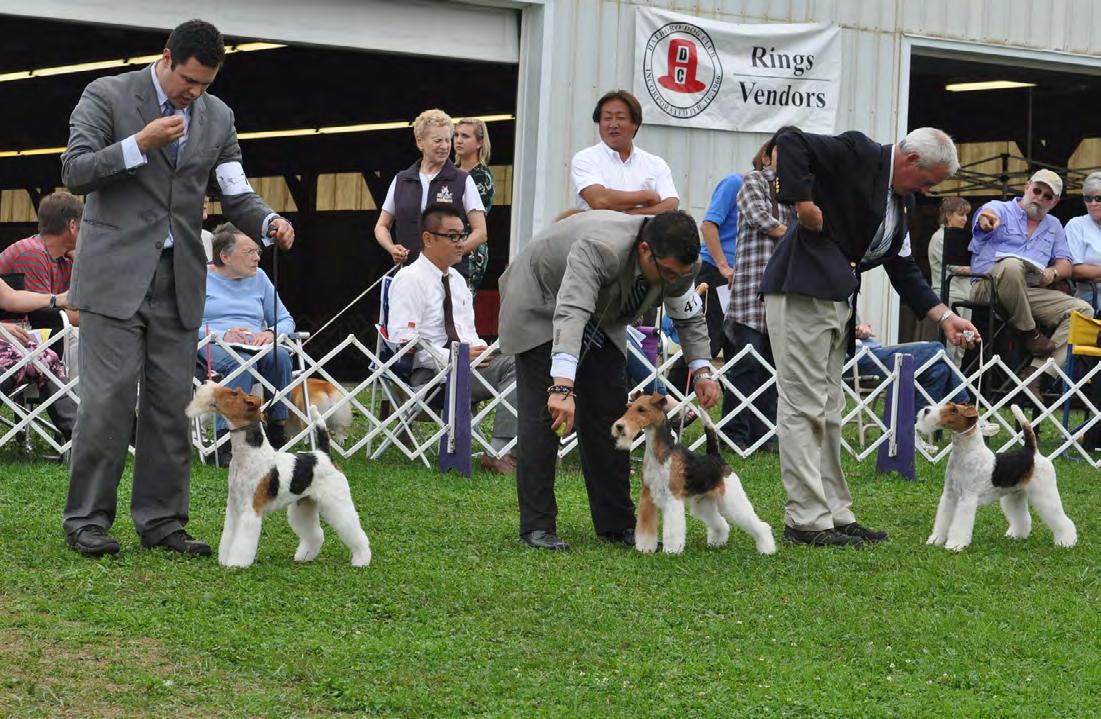
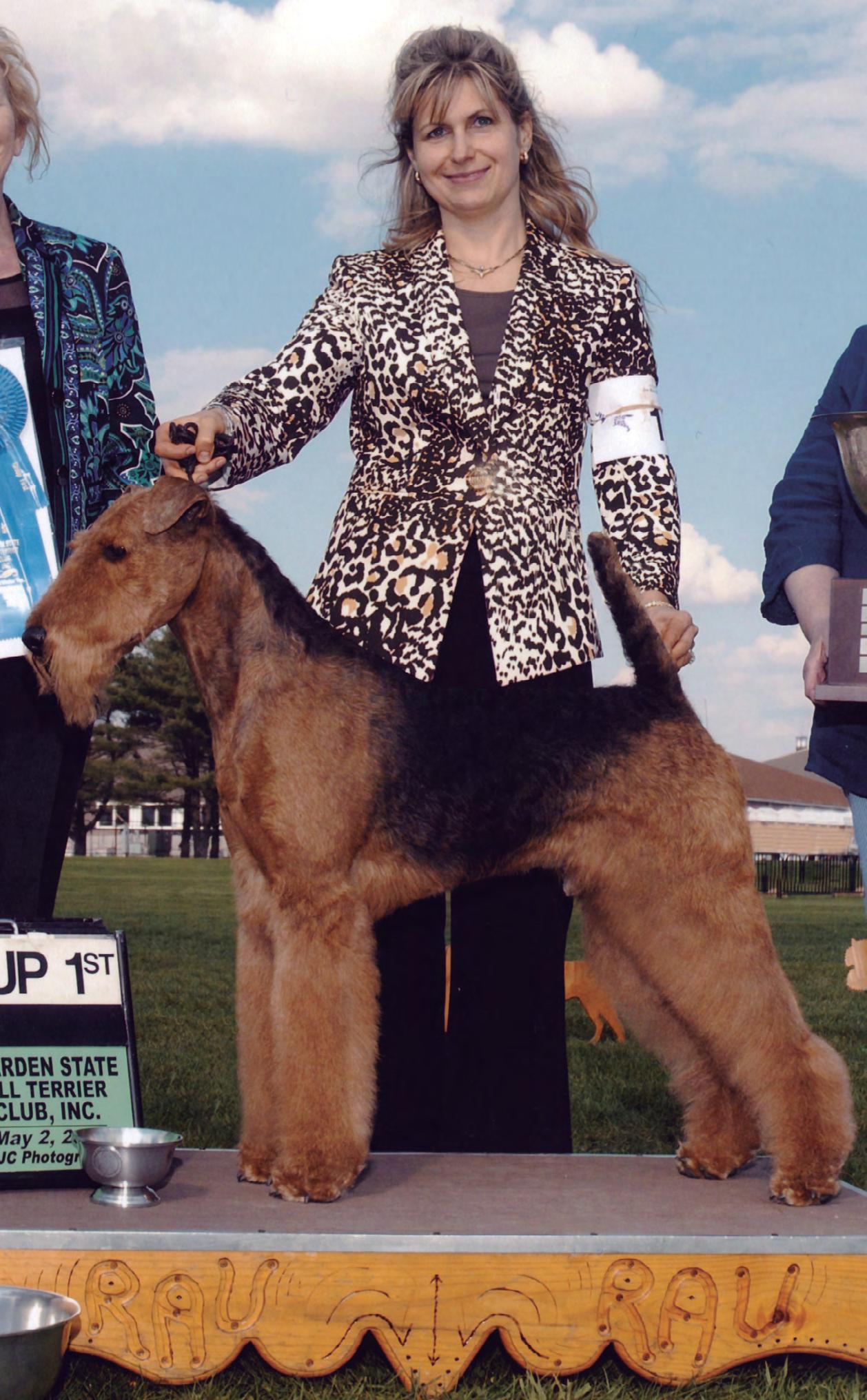
JOVAL ANGEL’S
AIREDALE TERRIER
MEET THE BREED AIREDALE TERRIER
Please tell our readers how you got involved in the world of pedigreed dogs and what attracted you to the Airedale Terrier.
We purchased our first purebred Airedale Terrier in 1985. At the time I was living in Russia and with that dog I participated in conformation shows, as well as obedience competition and protection training. His wonderful temperament and trainability, together with the majestic nature of the Airedale Terrier, was what drew me to the breed and quickly established my lifelong love for them. Shortly after we moved to the United states. Years later, in 1999 when I was finishing my veterinary education, I got more serious with showing and breeding. I
researched different kennels, invested into a strong foundation bitch, and focused on establishing our own kennel and breeding program.
Where did you get your foundation dogs and what other breeders do you like to collaborate with?
Our foundation bitch was Eng. and Am. Ch, Jokyl Flashback. Zeta came from the Jokyl Kennel in England. She was a granddaughter of the two famous dogs of the 1980’s – Ch. Jokyl Gallipants and Ch. Ginger Xmas Carol, who won BIS at Crufts in 1986. Zeta possessed many of the qualities that I was looking for in a foundation. She had a tight line bred pedigree, great conformation, soundness, and sweet temperament. We bred her three different directions and from then on, we focused on developing our line.
Did you have any mentors in the breed/dog world that helped you.
Honestly, I cannot attribute my current knowledge to one person, nor could I call any specific person my mentor. I consider myself a truly self-taught person when it comes to dogs. Through lots of research (books, old magazines, yearbooks, studying successful pedigree combinations, etc.), asking questions, visiting kennels, and watching shows all over the world - I have been able to learn from those bits and pieces what appeals to me the most, piece it all together, and from that I have developed my breeding program.
Airedale Terriers are often described as the King Of Terriers what makes the Airedale the king? We would love to read breed characteristics that create this prestigious title.
Airedale standard does not have a “general description”
section that specifically outlines the overall presence and balance of the breed. Therefore, in my opinion, besides being the tallest terrier in the terrier group, when an Airedale walks in the ring it is his presence that makes him the King of Terriers, owning the ground he stands on and staring down upon all the smaller terriers. The keenness in their eye, which is full of terrier expression, greatly contributes to the king’s presence and attitude. This attitude can be best exhibited when Airedales spar and pull themselves together. During this battle of wills and display it is truly an awesome sight to see that exemplifies what it is to be king or queen.
How has the Airedale changed since you first started showing/breeding.
Within the show ring, throughout decades there has been emphasis on differing styles but for the most part the breed and standard have remained unchanged. Different kennels have focused on different “parts” of the body over the years, creating improvements in conformation. Currently the breed has nice, long rectangular heads with good ear placement. The front construction has remained an issue over the years. Recently, the breed has moved away from being a square, moderate breed to be longer and more angulated in the rear variety.
What are points you wish all judges knew about the Airedale Terrier before judging the breed.
For the judge to be able to appreciate the breed and its qualities, they must first have a strong understanding of what the Airedale Terrier was bred for and the job they were intended to perform. It is not the type of terrier that was meant to go in a hole like many smaller

terriers and does not have the same front construction. It must have a structure that allows for an effortless movement that will allow them to work and hunt all day long without getting tired. Understanding the anatomy and structure that supports this purpose would provide a judge the basis on which to see beneath the grooming and be able to truly judge the dog. Then, learning the details, nuances and specific characteristics that contribute to the breed type will help judges to find outstanding individuals who possess the most virtues of the breed.
Please mention three Airedale Terriers not bred/owned by you that you have greatly admired.
My three favorite Airedales not bred by me are Ch. Evermay’s High Performance, Ch. Sterling Cool Hand Luke, and Ch. Greenfield Celtic Legend. Besides being very attractive dogs conformation wise, these dogs also had an important contribution and big impact on my breeding program, which I am very thankful to them for.
Please mention three influential dogs from your kennel over the years.
We have been so blessed with so many outstanding dogs that it is difficult to single out just three. GCHG Joval Sweet Time is my most special dog, she is also my heart dog. Splenda was Reserve Best in Show at Montgomery, Top Airedale, and Top five Terrier in the nation for two consecutive years in 2014 and 2015. Besides outstanding conformation, her temperament makes her one of the best representatives of what the breed should be like. People that met her, understand what I mean by this.
GCHS Joval Angel’s Glory, WW, is the dog I won the most with myself, owner handled. In very limited showing she was top female Airedale in 2018, and together we won the Airedale Terrier National at Montgomery. We also won BOB and Terrier Group 1 at the World Dog Show in Amsterdam.
Some of my other favorites and very successful dogs were GCH Joval Angel’s Kiss, who was our first World
Winner when the WDS was in Sweden in 2008. Her daughter GCHG Joval Angel’s Whisper was the number one Airedale in the USA in 2013, and GCHB Joval It’s My Time, who among many notable wins, was also reserve BISOH at Montgomery.
What is your favorite show in the world to attend?
Montgomery weekend is Mecca for the terrier people. It has the largest entry of the best terriers from all over the USA, some of the best international dogs, and is also the site for the Airedale National Championship. The level of competition at these shows and being able to spend time with our terrier friends from all over the world makes them very enjoyable to attend and a win at any of the shows during this weekend carries a special prestige. So, this must be my absolute favorite.
There are several other shows that carry the unique atmosphere that I look forward to attending (not always necessarily showing) such as Westminster, Eukanuba, Crufts and the World Dog Show.
Please share some of your proudest memories from the show ring.
Over the past two decades our dogs have done very well in the show ring and there have been honestly too many proud moments to count. Having the top dog in the nation for four-to-five years straight has been a roller coaster ride of a lifetime. But with that being said, as a breeder, every time I stand outside the ring watching a dog that we have bred look beautiful and win, I get a feeling of satisfaction that reinforces how the hard work has paid off. We are very proud of our strong female line winning the Airedale Terrier National and the Bowl five times with three different bitches and being BOS
on three other occasions. My proudest moments have come when I have been able to handle my dogs as a breeder/owner/handler. As mentioned before, winning the Airedale Terrier National at Montgomery, res. BISOH at Montgomery, BOB at Crufts and the World Dog shows, and most notably winning the Terrier Group at the World Dog show in Amsterdam were a dream come true. It is something you think about, hope for, but even after it happens sometimes it does not seem real.
Given their large size and stature, the conditioning and presentation of the Airedale Terrier is no easy task. Please talk us through some of the work involved with presenting the Airedale Terrier.
Preparing an Airedale for the show ring is not an easy task and is a labor of love. It takes a minimum of 12 weeks to stage the jacket to get it into proper condition. And

it takes four-to-five months to achieve good volume and quality of furnishings. Nowadays, I believe it is a lost art and it is very hard to find people experienced in correct Airedale preparation among both breeders and handlers. But it is a majestic sight to see the final product when an Airedale is properly presented by the few remaining terrier experts. Unfortunately, the newer generation is not very interested in learning the proper ways and looking for the shortcuts where they can find them.
From your experience, where in the world do you believe Airedale Terriers seem strongest, in terms of quality.
In my opinion, American Airedales remain among if not the best in the world. There have been a few Russian dogs who have caught my eye during my international judging assignments.
What are your goals/dreams for the future of your Airedale Terrier journey?
Our Airedale journey has brought us consistent successes over the past two decades. We have won all the most prestigious shows in the USA and around the world. For this we will always look back with great pride and will have wonderful memories of the consistency that we were able to achieve over a long period of time. But with an increased pressure of work and life in general, and slightly changing interests we have decided to work on sizing down our breeding program and gradually retire, while we are on top. Also, over the past decade, I have become more involved and really enjoy judging at the dog shows and I am looking forward to focusing more on that aspect of the sport.


For larger or specialty dogs that can’t travel by commercial airline, choose a semi-private air transport. On these flights, your purebred can travel in its own seat or in a large carrier! Available for most domestic U.S. destinations and some international destinations.
For smaller dogs, choose commercial air transport. A professional travel guardian will pick up your dog from its departure location, care for it throughout the entire journey, and safely deliver it to you. Both domestic U.S. and international destinations are available!
SAVE UP TO $300 ON YOUR

Dogs of all sizes and species can enjoy ground transportation across the U.S. Great for dogs that need to travel by themselves and owners/handlers who don’t want their animal interacting with others. Can accommodate up to 6 dogs at once from the same breeder, owner, or handler.
TRANSPORT Mention our special code ‘ROMEO’ for your exclusive discount of $50 off a domestic U.S. transport, or $100 off any other transport + FREE travel insurance valued at up to $200.

MEET THE BREED
KERRY BLUE TERRIER
IRISBLU
KERRY BLUE TERRIER
Please tell our readers how you got involved in the world of pedigreed dogs and what attracted you to the Kerry Blue.
My father showed Kerry’s, as a young boy I attended local shows with him. Kerry’s have always been a part of my family and I have been fortunate to grow up in their company. My father carried on his successful showing career with Hackney horses, but my heart stayed with the dogs.

Where did you get your foundation dogs and what other breeders do you like to collaborate with?
We tried a few potential show dogs from various kennels, but they proved not to be good enough for what we wanted – no doubt all reading will have been in that same situation! I had booked a puppy from a breeder in England; however, my mother was ill with cancer at the time. On the weekend I was due to travel for the puppy, she took a turn for the worse. I wanted to cancel my trip, but she insisted that I go and get my new pup and said that she would be lucky for me. Off we went to England and we met the breeder at a show. Her friend had brought a pet puppy for a family- that pup was gorgeous, and between us we agreed a swap and I took her home. That pet turned into Sharp N Shocking of Irisblu (Izzy) who was top Kerry Blue in Ireland and then the UK was BOB at Cruft’s and went on to become No 1 all breeds in Thailand. She produced many champions for me. Notably Saredon Shockwaves of Irisblu (Lexi) who was BOB at Montgomery. My mother was right, she was a lucky dog.
I have collaborated a lot with Ron and Carol Ramsay of Torum Kerry Blues. My bitches seem to match well with Ron’s dogs. Together we have produced some great Kerry’s. In the USA we have worked with John and
Did you have any mentors in the breed/dog world that helped you.
Jack Doherty lived in Derry and I was fortunate enough to become great friends with him, he was one of the best natural dog men I have ever met. He showed lots of “Louisburgh” dogs and always gave me great advice. We shared many laughs travelling to shows. Jack has since passed, but I was lucky to have him in the beginning.
When I started showing more seriously, I met Sean Delmar. He was always there to give me moral support, especially in the many defeats.He always encouraged me to keep going. This led to my travelling to shows in the UK. I wanted to challenge myself and become better, it was at those shows that I met Ron Ramsay who happened to be a lifelong friend of Sean’s. Ron’s enthusiasm inspired me, and he has always got behind me, we have had some top winning dogs together. Both are hard task masters and pushed me to earn their approval…. on that I am still waiting!!
Can you please educate our readers on the stages of color of the Kerry Blue? At what age should we see the hallmark Blue color of the breed.

In a nutshell some people are color fanatics and will pass a much superior dark dog to award a silver dog top honors. I have found in my time that slower coloring dogs have better pigmentation, darker eyes, darker gums and a stronger coat with better texture and wave not as “wishy washy”.
Personally the 18-month rule for aspiring judges should mean some form of color breaking, even if it’s along the back, in front of the tail or down the back legs.
A Kerry is often at its best between 3 and 6, judges should not be too harsh on a young animal that is slower to mature. At this age their brain, body, coat and color are ready. They will be like a stallion full of confidence.
How has the Kerry Blue changed since you first started showing/breeding?
The temperament has softened a lot around the world, although in Ireland and USA they seem to have kept some spirit. The most noticeable change has been the curly tails on the back or the tail half-mast and head down when moving around the ring. This is often linked to lack of spirit. These dogs, however beautiful
are happiest laying at home in front of the fire. Finally, every country has their own grooming style. The more I travel and judge around the world, the more this is evident. Russia, America, Ireland, and England all have their own styles and here lies the problem. You could send the same dog to 3 different counties, and the dog would have 3 different looks. Groomers have taken over and have lost the terrier shape. They have gone for a smooth scissor finish which in turn kills the coat texture and leaves it resembling a Bichon Frise.
What are points you wish all judges knew about the Kerry Blue before judging the breed.
A Kerry should be a natural upbeat and alert dog standing 4 square. They should have an intense look with a small eye. The tail should be well set on, carried as straight as possible. The rear should be powerful as that is the engine room. When they move from A to B it must be with purpose.
Please mention 3 Kerry Blues not bred/owned by you that you have greatly admired.
Torums Ready to Rumble, Danja Iz goluboi legendy, Dinnyesvarosi Dixi
Please mention 3 influential dogs from your kennel over the years.
Sharp N Shocking of Irisblu, Torums Calico Jack at Irisblu Irisblu Boomerang
What is your favorite show in the world to attend.
Without a doubt Montgomery,
Please share some of your proudest memories from the show ring.
Winning Best of Breed at Montgomery in 2016, winning Best of Breed and Terrier Group 3 at Crufts, and winning Best of Opposite at Westminster.These are fantastic memories.
The conditioning and presentation of the Kerry Blue is no easy task. Please talk us through some of the work involved with presenting the blue stallion that is the Kerry Blue. Please also mention the Kerry Blue temperament/attitude.
This begins in the whelping box, the brain development of the Kerry is so important, table table table as if it’s not done then it creates so much work down the line when the dog matures. A happy confident pup usually makes the best show dog. I find that more than lead work, lots of free running and lots of experiences help build character. Quality food is a must. If this is all done correctly your 80% there, and the final 20% can be achieved with products and scissors.
As for attitude a Kerry at a dog show should be on his toes from morning to night. Therefore, it’s vitally important that he is confident from a very early age.
We sometimes see in the ring some judges have Kerry Blues (and other terriers) come to the center and face each other, please explain to our readers the reason for this, and how you feel about it.
The only time you really see a terrier is in the spar, when they lift themselves from the shoulders the neck comes up another inch, the tail goes forward and their whole body will transform in front of you. A good sparing Kerry should remind you of an Arabian stallion. Love it.
From your experience, where in the world do you believe Kerry Blues seem strongest, in terms of quality.
There is a lot of quality Kerry’s in Russia, America, and Scandinavia. The numbers are numerically high there also, but I am a bit biased as I come from the country of origin, I have to say Ireland. There is only a small number of breeders, but the Irish dogs have won top honors all over the world and continue to do so. Long may it continue.
What are your goals/dreams for the future of your Kerry Blue journey?
My goal is to breed a dog that pleases me 110%. I have bred some really nice Kerry’s over the years, and I like to score them on a scale of 1- 10. Some have been 9’s, leaving me room to improve and there have been plenty of 7 and 8’s along the way, but we are always striving to breed better.
My dream has been to win Best of Breed at Crufts, Westminster, and Montgomery to date we have achieved 2 out of 3 and hit the cross bar in 2019 with Irisblu the Fiddler (Maggie) when she went Best of Opposite at Westminster. There is always work to do.


Dog breeds are usually a reflection of the terrain, the practices, and the social attitude of people in their country of origin. All were developed as purpose bred dogs with functionality being the main influencer. The Kerry Blue Terrier reflects that as they are interwoven in the history, mythology, and the hearts of the people of Ireland. In Celtic Ireland the Wolfhound were the dogs of the kings and chieftains, the gundogs were associated with the earls and landowners, and the terriers were the dog of the small farmers and town dwellers.
Known originally as the Irish Blue Terrier they were bred as multi-purpose dogs. They possess the capabilities of a decathlon athlete in that they can herd,
track, scent, guard, eradicate vermin, are comfortable over land and water, and are enthusiastic and brave. They were developed over centuries but came to prominence as the people of Ireland made the final push for sovereignty during the early 1900’s. One of our leading patriots Michael Collins owned them and was promoting the breed to be recognized as the national dog of Ireland.
So, what makes them so special that from humble beginnings they have become so popular worldwide. There are certain characteristics and features that make individual breeds of dogs unique and in canine terms this is called type.
The Kerry Blue Terrier should have a freestanding, assertive upstanding body posture with its head held high. The tail should be carried straight or slightly forward. All this combines to create a clear look of focus and dominance. This is well described by the old saying “He should own the ground he stands on.” They should have a distinct and unique expression. It should demonstrate terrier intensity and be hard not soft, not cute, nor obediently begging for a biscuit. Correct eyes, ears, and head carriage with an assertive attitude create the “true Blue expression.”
Kerries have a single coat that is non-shedding however is should be plentiful and not sparse. It should be soft to the touch with an obvious sheen (never a dull matte finish) and should have a gentle wave or half curl. A coat that is harsh, wool like, tightly curled or totally lacking in sheen is untypical.
A typical finished adult Kerry Blue Terrier should have an assertive upstanding and independent posture (not stacked). It should have great ring presence with a determined expression and be clearly colored with an obvious bloom (shine) in its coat.
These are the qualities that have endeared the Kerry Blue Terrier to so many people worldwide.
After many years of promotion by a dedicated few the Irish government recently granted the Kerry Blue Terrier, along with the other eight other Irish Breeds “National Heritage Status.”


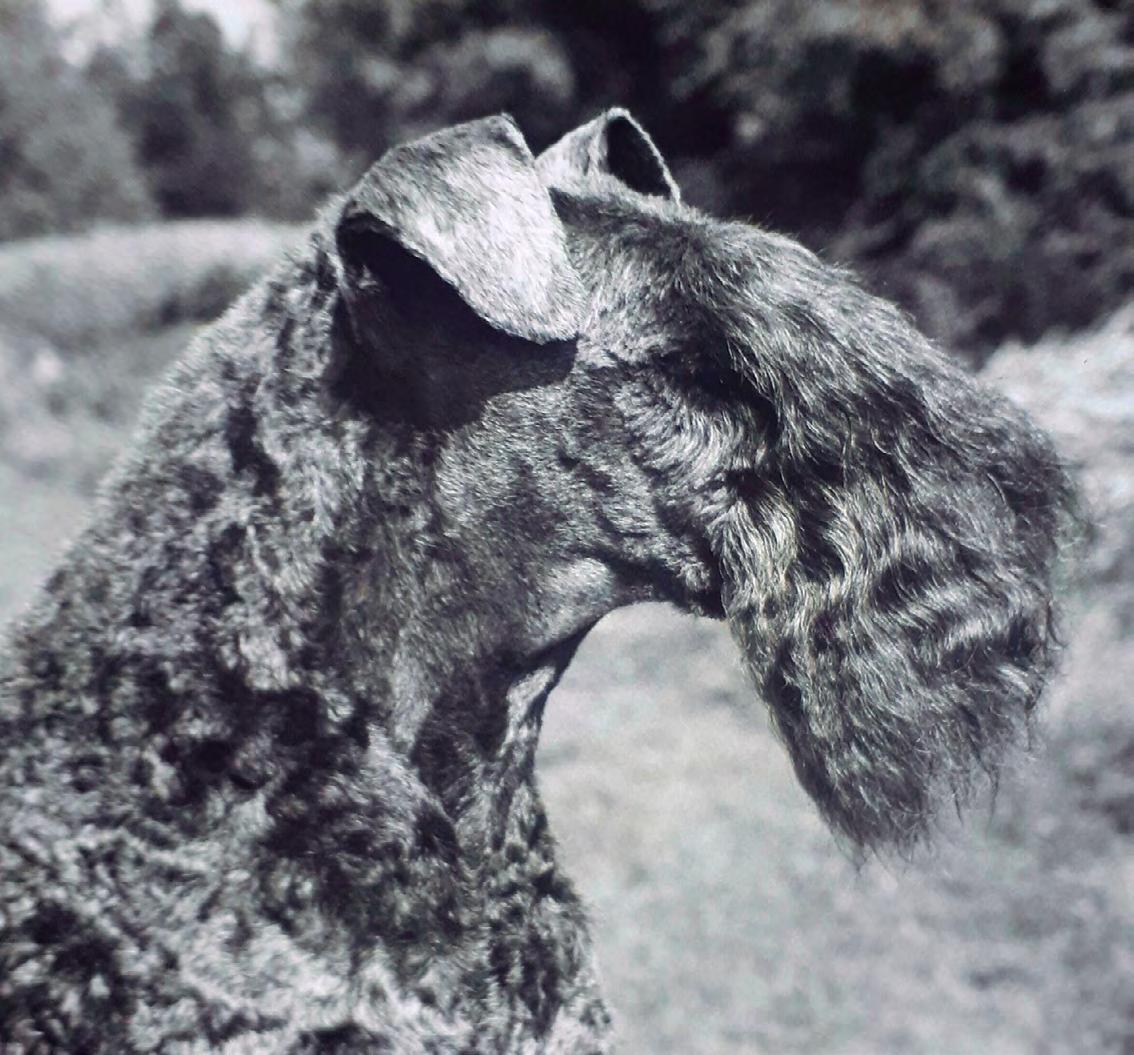
Please tell our readers how you got involved in the world of pedigreed dogs, the Miniature Schnauzer and dog showing.
While everyone has an interesting answer, I think you will agree mine is indeed unique. My father was a fighter pilot in the United States Air Force, and we lived in many different states and many foreign countries. We always had purebred dogs growing up, a Dalmatian named Prissy, a Miniature Poodle named Jacque, and then we were introduced to the Miniature Schnauzer. We did not know about show breeders when I was young, but we lucked out with our first mini, Willie. He made us fall in love with this breed. Looking back, he would not have made it in the show ring, but he had the best personality, and was super smart.
In 1970 my dad was transferred to England. Due to the quarantine law back then, we did not take Willie with us. Instead, we gave him to my grandfather. Our first Christmas there, we received a new Miniature Schnauzer puppy as a Christmas gift. We named our new puppy, Nikki, and he became our constant companion. I started taking Nikki to obedience classes in the small village nearby. One evening the instructor pulled me aside and complimented me on Nikki’s conformation. I was only thirteen and had no idea what that meant, after explaining conformation to me, he said he was a judge at Crufts (something else he had to explain to me) and he showed me the attributes that would make Nikki a successful show dog.
Well, that conversation with that gentleman never left my mind. I just knew one day I would have a show dog, and the only breed I wanted to show was a Miniature Schnauzer.
My kennel name, Destineez, was established in 1991. I wanted Destin to always be a part of my imagined success in conformation, because she was my heart dog, and the beginning of it all. I dreamed I would be destined for a bright future. Destineez is a play on the word Destiny.
Where did you get your foundation dogs and what breeders do you work with today?
Twenty-five years after the conversation with the Crufts judge, I purchased a bitch from a local breeder in Charlotte, NC. I did not purchase Destin as a show dog, nor did I have any intention of breeding her. I stumbled upon a dog show and met my first mentor, Norma Carver (Nor-Fran Miniature Schnauzers).

She evaluated Destin for me and concluded that she could have been shown. She encouraged me to breed her to one of her champion males, and my very first show dog came from that breeding. Her name was CH Destineez By Invitation Only – Stomi.
There are many breeders who I have admired and have enjoyed working with. I made it a point to meet as many successful breeders as I could. In the beginning I was like a sponge and wanted to learn, be competitive, and groom like the greats. In addition to my original mentor, I have had the honor of learning from Kurt Garmaker - Repitition Miniature Schnauzers, and Kate McMillan – Minuteman Miniature Schnauzers. They both taught me a great deal about the breed standard and breed type, they also taught me how to properly groom and present a Miniature Schnauzer. I built my breeding program around their dogs, and although I do not breed out
too much anymore, when I do I look for similar dogs in the pedigrees and qualities that I choose.
Did you have a mentor when first starting out, do you currently have a mentor or network of other breeders you can discuss future breeding’s with?
Norma Carver (she is now deceased), Kurt Garmaker, and Kate McMillan. While I do not collaborate with them closely currently, I will always appreciate what they taught me. I certainly would not be the breeder and handler I am today without their early guidance.
I have a core group of breeder friends, for whom I also show dogs. We do a lot of breeding’s and have great discussions about the dogs that are being shown currently and who we think could improve our current breeding program. Sometimes we agree, and sometimes we do not, but that is what makes each kennel unique and important. As with many other breeds, the Miniature Schnauzer gene pool is small, in fact it is based on eleven dogs. So, getting input from those you respect, and trust is important.
Which breeder/breeders do you respect most, anywhere in the world?
Obviously, we would not be where we are today without appreciating from where we came. History in any breed is important. The breeders who made the early breeding decisions established and protected the characteristics. They developed the American Miniature Schnauzer breed standard, educated the first judges, and chose to mentor new exhibitors/ breeders. I think those of us who call ourselves preservation breeders have made a commitment to carry this history forward. At the end of the day, all
you have is your reputation and integrity. I want to be remembered for being a breeder who worked hard to try to make the most informed breeding decisions I could make based on the information available to me.
With the availability of social media, the internet, and multiple dedicated canine publications available to use as research, where do you believe your breed is currently strongest?
I have enjoyed social media and the access to what is happening with dog breeds around the world. I have developed close friendships with people in other countries, and I really enjoy that aspect as well. The breed looks quite different in Europe, and Russia, than it does in North America, Mexico, and Asia. The first difference you will see in most countries outside of North America, Mexico, and Asia is, they can no longer crop ears and dock tails. This has dramatically changed our silhouette in those countries. I am not a fan of the undocked tails. The American Miniature Schnauzer Club has worked hard to keep our breed as it was established. Our standard has some of the harshest wording when it comes to the undocked tail. To date, we still have about five dogs who have finished with an undocked tail in the USA. That is far less than other breeds, who were once totally a docked breed. The Miniature Schnauzer is the strongest in the USA and Asian countries.
With all the technology has also come photoshopping.
I do not believe you can make an informed decision about a dog you are considering bringing into your breeding program without seeing him in person or at least talking with someone who has had their hands on the dog. I would never choose a stud dog strictly


from a photograph no matter how beautiful the dog was portrayed in the ad.
What in your opinion makes a respectable preservation breeder?
A respectable preservation breeder is one who strives to improve and protect their breed, with every litter. Not only in conformation, but health, temperament, important breed traits and characteristics, and purpose. The Miniature Schnauzer is not a rare breed, but we do have to continue to educate the public regarding the odd colors that are popping up like merle and liver. The American Miniature Schnauzer breed standard only recognizes three colors, salt/pepper, solid black, and black/silver. In other countries around the world, solid white is also considered acceptable.
How has the breed changed since you first started showing/breeding? This can be in quality and or presentation. Do you think the breed has changed for the better or worse?
I have been showing and breeding about thirty years. During my time, I do not think they have changed all that much. Sometime prior to the early 1990s the breed went from very sparse furnishings like other wire coated terriers to very fancy scissored furnishings. Our ring prep takes approximately 45 minutes per dog. It is not a breed that you can throw back into a crate once they are groomed and pull them out, fluff them up and go to the ring. That is why you see more Miniature Schnauzer handlers concentrating on the breed. You rarely see all breed handlers with a set up full of minis. It is a lot of work at the show, as well as

at home. Looking back at the dogs in days gone by, I believe our dogs have improved. I would much prefer to show the contemporary minis of today.
What is your proudest achievement?
I co-bred a dog with Kate McMillan (Minuteman Miniature Schnauzers) named American MBIS MBISS GCHP/Canadian BIS CH Destineez Wild Blue Yonder –George. He was named in honor of my late dad who was a fighter pilot in the US Air Force. George was the number one Miniature Schnauzer in AKC breed and all breed standings in 2016 and 2018 (he took a year off in 2017). Since he was my dog, I financed his entire show career. I used the tag line, “No power, no money, just a girl and her dog.” His final time in the ring was at the AKC/Royal Canin Championships, and he placed second in that power packed group. The judge, Dr. Jerry Klein said to me while getting our photo taken, “This is a Miniature Schnauzer, and I have no idea who you are.” To this date that is the greatest compliment I have received. George has also produced 20 Champions to date.
Please mention your most successful dogs, owned, or bred by you.
Prior to George, there was bitch I bred named CH Destineez Smoooth Jazz – Billie. She was ranked as the number two for the breed in 2006. She never won an actual national Best of Breed, but she did win the breed a few times during national weekends. Billie was not fancy, but she was a particularly good mini.
Her greatest accomplishment was in the whelping box, she produced 16 AKC Champions and is tied for the most produced by a single bitch in our breed. I co-bred a Billie daughter, CH Mystique’s All That Jazz – Roxxie, she ended up as the top bitch in 2008, and these many years later I consider her one of the best representations in the history of the breed.
Roxxie won Best of Breed from the classes during our national weekend, over all the top specials in the country. BIS MBISS GCHS Lonestar’s Wicked GoodElle, 3-time AMSC National Specialty winner and the number one for the breed in 2010 in AKC breed points. I did not breed Elle, but she was the first dog I won an All-Breed BIS with, so she is super special. I cannot leave my last special out either, BIS MRBIS MBISS GCHP Mystique’s Knock Out – Rocky, twotime national specialty winner, and the number one dog in AKC breed points, and number two Miniature Schnauzer in AKC all breed points.
What is your most favorite show to attend, anywhere in the world and why?
I have two shows that I always look forward to, and that is Montgomery County in October, because it is our national specialty, and the AKC National Championships in December, because it is a venue in which to show case all the beautiful dogs from all over the world. Not to mention the vendors! It is just a wonderful way to end the year.

Do you judge? Who is the greatest Miniature Schnauzer you have ever had the pleasure of judging/seeing?
I do not judge and have no plans to. I personally feel like the AKC makes getting a judging license too difficult and too expensive. Except for about a dozen judges, how does one get back all those expenses in the form of judging fees? Like our breeders and exhibitors, our judges are getting up there in age and not many new ones coming along to take their places. After a master’s degree I have no desire to go through the process. I am enjoying my second profession as a Miniature Schnauzer handler too much to spend time studying again.
What do you wish all judges knew about the Miniature Schnauzer before they judge them?
That although they are in the terrier group, they are
working dogs. North America is the only place you will find Miniature Schnauzers in the Terrier Group. The front-end assembly is so different, as are their gaits. Miniature Schnauzers should be robust, with rib spring, and deep bodies. They should resemble their larger cousin, the Standard Schnauzer. A mini should gait with reach and drive. Also, a pet peeve of mine is how long some of the heads are getting in our breed. Always remember that a mini is a moderate breed. They should not have heads that look like a Wire Fox Terrier.
If you could go back in time and use one dog at stud who would it be and why would you use him?
It would have to be CH Skyline’s Star-Spangled Banner – Banner or Skyrocket’s Bound To Win. They were both born in the1970s, but both dogs would easily be competitive in the ring today. They exuded breed type and showmanship, and they were the beginning of the modern minis.
What words would you personally use to describe a Miniature Schnauzer?
I describe the ideal mini as robust, moderate, square, confident, intelligent, with a great silhouette.
What are your future goals/wishes in the sport of pedigreed dogs?
I hope to continue to breed dogs who are pretty, sound, healthy, and make great companions. I want to show minis who are having fun, and who want to be in the ring. I am competitive, so I will be looking for that next great special, one that can win no matter who they are up against so when they walk into the ring, they catch the judge’s eye immediately.
Please tell our readers how you got involved in the world of pedigree dogs, the Minis, and dog showing.
My husband and I were newlyweds when he gave me a Miniature Schnauzer puppy for Valentine’s Day. At that time, people still found dogs for sale in the newspaper, and since we were poor college students, he chose the most affordable litter available. Of course, we named her “Heidi.” She was a wonderful pet but of very poor quality—and extremely naughty. So off to obedience school she went.
We decided to enter her in a local obedience trial, where I won a trophy for the highest scoring terrier— and we (or maybe just I!) were hooked. I had grown up in Nebraska showing in 4-H—sheep and cattle—so showing dogs felt like a natural fit.
After a few years, we met some wonderful mentors in Dallas, Texas. They helped us find a show-quality female, and we began showing in conformation and doing a bit of breeding. That was in 1974. Over the years, despite multiple cross-country moves for work, we raised our children and now enjoy our grandchildren—all while continuing to show and breed Miniature Schnauzers on a limited basis.
Our final move brought us to Salt Lake City, Utah, where we retired and continue to love and live with our schnauzers. I truly can’t imagine our home without at least a few of them.
Our kennel name is Carmel, taken from my first name and middle initial. In our early days, we explored a few other breeds—Giant Schnauzer, Standard Schnauzer, Lakelands, Smooth Fox Terriers, and even a Pug—but our hearts have always belonged to the Miniature Schnauzer. Once we became successful breeder/owner-handlers, we chose to devote our limited space and energy solely to them.
Where did you get your foundation Mini, and what breeders (if any) do you work with today?
Our very first foundation Mini came from the old Aljamar kennel. Her name was Aljamar Honey Delite, a beautiful salt-and-pepper girl out of a black Italian import. We’ll always be grateful to Marilyn Lashinski and Janice Rue for giving two young college students a chance with a well-bred puppy.
We were also incredibly lucky to have Shirley Reynolds (Far Hills) as a mentor in Texas. Over time, we were fortunate to meet and learn from many longtime breeders and handlers. We were that young
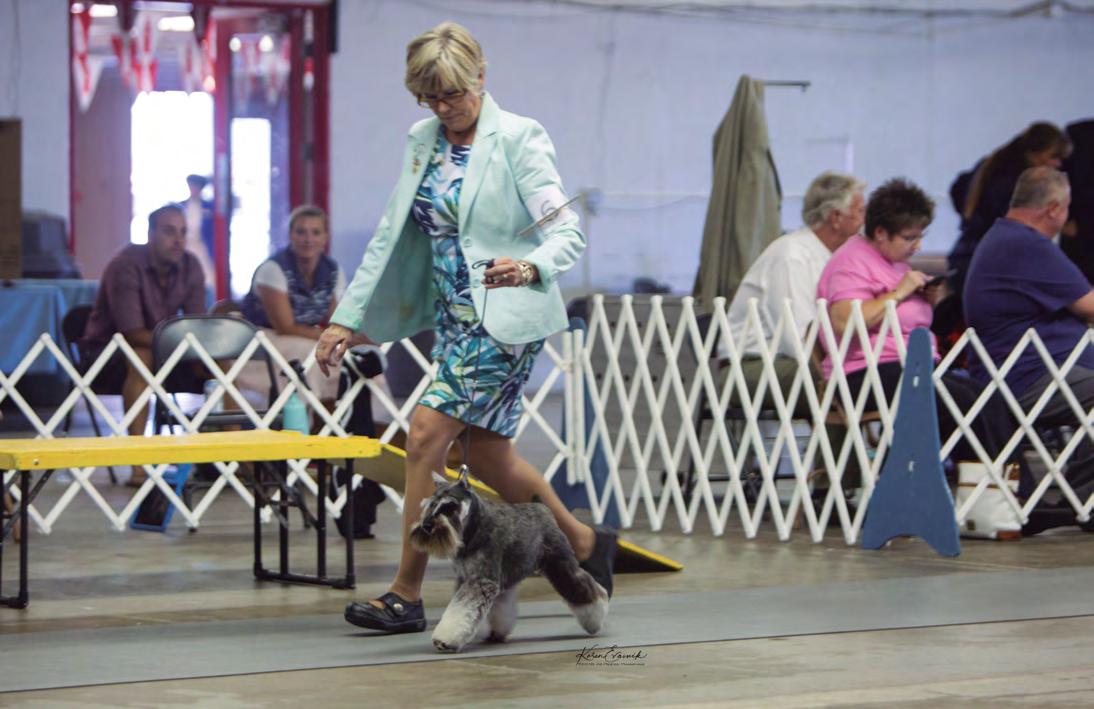
couple who showed up at dog shows with our puppy, set up next to the best handler/groomer we could find, and watched their every move. I remember using my sewing scissors for trimming and carrying my grooming supplies in an overnight case. Those early days were full of fun, excitement, and so much learning.
Did you have a mentor when starting out? Do you currently have a mentor or a network of other breeders you can discuss future breedings with?
We’ve learned from so many people over the years. Galen’s job moves took us across the country, which gave us the opportunity to meet Miniature Schnauzer breeders and handlers from all regions—and we learned something from each of them.
In fact, nearly everyone active in Miniature Schnauzers has helped us at some point—whether through example, advice, friendship, or competition. We’ve built a wonderful network of friends throughout the country. We not only enjoy talking about dogs and breeding with them, but we also share in each other’s lives and families. These relationships
mean the world to us.
I value the advice of my longtime friends and fellow breeders, past and present. I can still hear them in my head sometimes—whether I’m in the ring or planning a breeding—reminding me of their guidance. Their voices continue to shape the decisions we make.
Which Mini breeder(s) do you respect most, anywhere in the world (past or present)?
Shirley Reynolds, Geri Kelly, Penny and Lanny Hirstein, and Bev Verna—for everything they have done for the breed.
With the invention of social media, the internet, and multiple dedicated dog-related publications available for research, where in the world do you believe your breed is currently strongest?
A: I still believe the dogs in the USA are the best. While there are many excellent breeders around the world, most of their original show stock came from the U.S. Although grooming styles, levels of competition, and laws on cropping/docking have introduced some changes to the breed, well-bred Schnauzers anywhere in the world are very similar. Our dogs are still robust, hardy, happy, hard-coated terriers.
What, in your opinion, makes a respectable preservation breeder?
A: Breeding to the standard of their country. Always being mindful of health problems—and being honest and forthcoming with other breeders about any issues they’ve encountered over the years. And, above all, putting the health and welfare of the breed first.
How have Minis changed since you first started
showing and breeding? This can be in terms of quality and/or presentation. Do you think the breed has changed for the better or worse?
A: I believe we’ve truly mastered presentation. The dogs in the ring today are in much better physical condition, and grooming is far superior to when we started. I also believe the breed is healthier and better overall—thanks to dedicated breeders striving to improve health and quality.
What is your proudest achievement (so far) in the world of Minis?
That’s a hard question. Of course, we are very proud of Twink, the breed’s record holder for Bests in Show, and the many #1 dogs we’ve bred or been involved with in showing. But honestly, I think what makes me most proud is when I get a note from a family thanking me for the companion dog they got from us years ago—one that brought love and joy to their home for many, many years. Those are the moments that keep me going through the hard times.
Sometimes I think being a breeder/exhibitor is a lot like playing golf—you work hard for that one sweet shot that makes it all worthwhile and keeps you coming back to try again.
Please mention some of your most successful dogs, owned or bred by you (show ring, litter box, and/or stud).
- GCHP2 Carmel Sky High Wish Upon A Star “Twink” (Jacobs, Lande, Soos-Kazel, Phelps, Ewer)
#1 All Systems in 2019, 2020, and 2021
· #1 Bitch, 2018 (All Systems)
· Top-winning Miniature Schnauzer in AKC history
· 3-time Westminster winner
- CH Carmel Race to Kelvercrest “Trace” (Potiker)
· #1 in 2007 and 2008
- GCHG Allaruth Carmel Still Kidding V Sole Baye “JJ” (Zeigler, Phelps, Ewer)
· #1 All Systems in 2015
· #1 All-Breed in 2016
- GCH Hi-Line’s Carmel With A Twist “Cooper” (Ewer)
· Sire and grandsire of multiple BIS, National Specialty, and Westminsterwinning offspring
GCHP Allaruth Just Kidding V Sole Baye “Justin” (sired by Cooper, owned by Zeigler, Phelps)
· #1 Dog All Systems in 2012 and 2013
· Top-winning male Miniature Schnauzer in AKC history
- GCHB Carmel Sky High Stargazer “Gazer” (Lande, Jacobs, Ewer)
· Our newest special
· Already a Westminster Breed winner with multiple Group wins
· Currently #1 Male Miniature Schnauzer All-Breed for 2022
What is your favorite show to attend anywhere in the world—and why?
Another hard question! Honestly, I love going to any dog show and spending time with friends. Of course,
it’s more fun when you’re winning—but whether it’s Westminster, Montgomery County, Royal Canin, or one of our wonderful local shows, I just enjoy competing and sharing time with my dogs and my friends. That’s what it’s all about for us.
Do you judge? (If not, would you like to in the future?) Who is the greatest Schnauzer you’ve ever had the pleasure of judging or seeing?
I do not judge, nor do I have any desire to. I’m happy on the other side of the table! I remember when we were a very young couple, attending one of our first shows and seeing CH Penlan Peter Gunn and CH Hughcrest Hugh Hefner in the ring. Wow— what fabulous dogs. They left a lasting impression. What do you wish all judges knew about the Mini before they judge the breed?
I wish more judges would remember the form and function of our breed. You don’t need a flying side gait to pull a rat from a hole—but you do need a

ribcage long enough to protect the organs and a short loin. Coats and presentation are important, yes—but you can always grow a better coat. You can’t fix poor movement or incorrect structure with more hair. These are living, working animals—not statues. Coat matters, but structure and soundness matter more.
If you could go back in time and use one dog at stud (no longer alive), who would it be—and why?
CH Penlan Peter Gunn—I think he had so much to offer the breed, both then and now.
For sentimental reasons, I’d also choose my heart dog, GCH Hi-Line’s Carmel With A Twist “Cooper”. He was a fabulous dog and truly the backbone of many of our best dogs.
What words would you personally use to describe a Miniature Schnauzer?
Robust, active, happy, outgoing, mischievous, and fabulous!
What are your future goals and wishes in the sport of pedigree dogs?
To continue competing at the highest level, to breed fabulous family companions, and to keep showing my own dogs to the best of their advantage—or at least until I’m too old to make those left turns around the ring!
to breed my pet Scottie to one of her dogs. She had a Wheaten which I had not seen before. I asked that if she ever bred a Wheaten bitch again, I would like to get one. She did a breeding two years later to Ch. Sandgreg’s Second Edition. I got a bitch from this breeding.
Please tell our readers how you got involved in the world of pedigreed dogs, the Scottish Terrier, and dog showing.
I have always loved dogs but never was able to own one. When I graduated from college, my present to myself was a pet Scottish Terrier. She accompanied me to graduate school but died due to parvo before a vaccine was available.
Where did you get your foundation Scottish Terrier and what breeders do you work with today?
Once I completed graduate school and was teaching at Cornell University, I found a small breeder in upstate New York named Ginger Middleton. She allowed me
I work primarily with Rebecca Cross and her mother Dorene Cross. I met both when they ventured down to Washington State from Alaska to show at the Scottish Terrier Roving Specialty. Rebecca who was just 16 years old, went best of winners with her dog. As I liked working with young people, I had to meet them and this young woman with talent. The rest is history. We have bred together ever since. Since Rebecca got out of the Air Force, she has been my primary handler. However, I have also used Christian Rangel, Amy Rutherford, Linda Wells, and Maripi Woolridge
Did you have a mentor when first starting out, and do you currently have a mentor or network of other breeders you can discuss future breeding’s with?
I was on my own – particularly in the early years. A couple of breeders in Utah who no longer breed helped me link me up with Maripi Woolridge as a handler. In the early years, she was my primary adviser. I also did a lot of reading on my own (no internet to share information or research pedigrees). I also went to specialties across the country and checked off dogs that I liked. I then tried to introduce myself to the breeders of those dogs.
I believe it is essential to have a breeding family of individuals with whom you can discuss potential matings and information on health challenges.
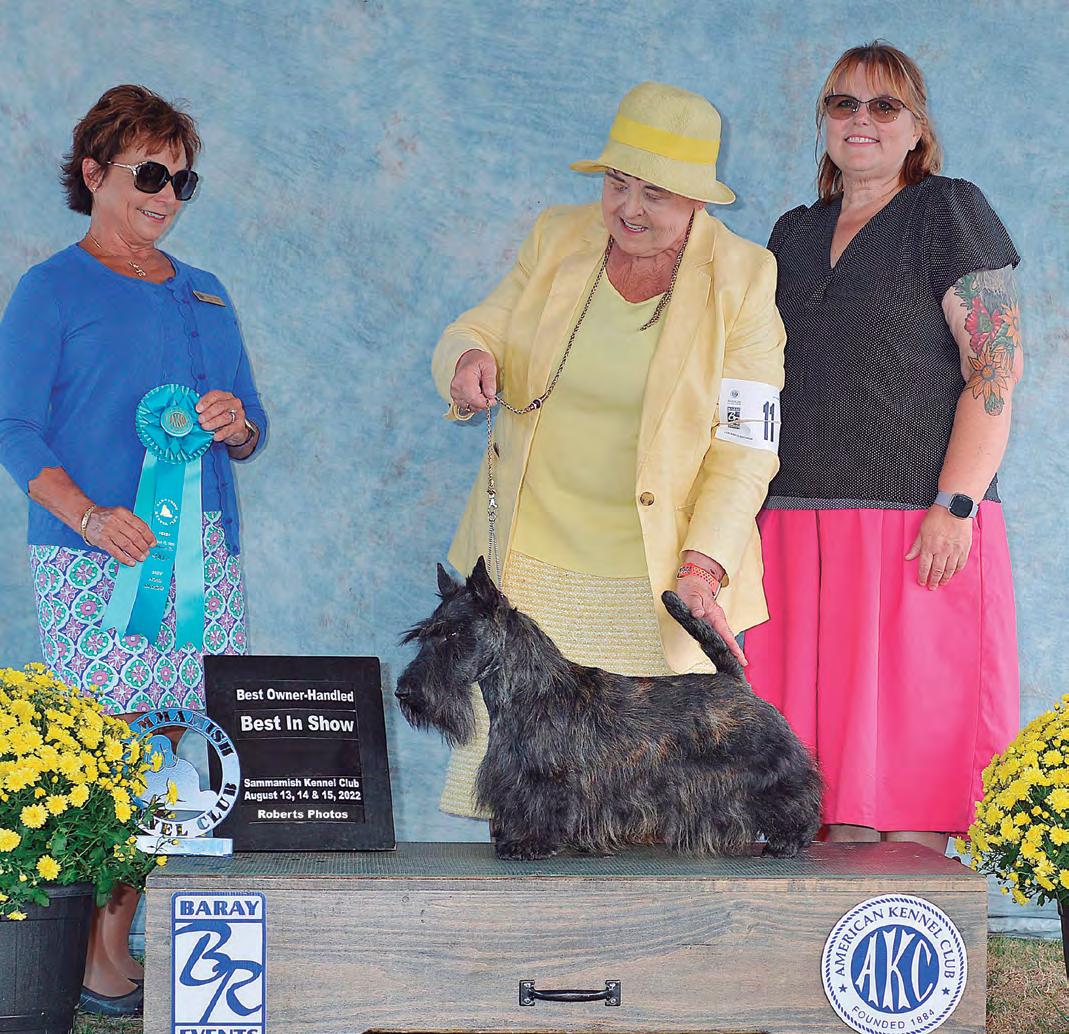
Which Scottie breeder or breeders do you respect most, anywhere in the world?
I respect those breeders who health test their breeding stock, understand the standard and breed to it and guarantee their dogs. Honesty about health and conformation are essential to the breeding of quality dogs and the preservation of the breed. I do not respect those who do not health test, back up their dogs for life while not taking responsibility or “owning up to” the issues associated with their lines.
With the invention of social media, the internet and multiple dedicated dog related publications available to use as research, where in the world do you believe your breed is currently strongest?
From a conformation perspective, Scottish Terriers in the USA are strong in their front assembles.
Top lines have improved with most being strong and
level. Heads are variable and often lack the balance and breadth necessary to snap the head of a rodent. The Scottish Terrier Club of America, relative to breed clubs in other countries, has made strides in encouraging health testing to the degree possible. Unfortunately, not as many breeders as I would like (including several well-known kennels) are not setting good examples in that they do not even conduct the barest number of testing. We also need to require more testing on hips.
Social media and canine magazines have helped as well as hindered responsible breeding. Social media has allowed individuals to view dogs from around the world, view dog shows in real time and dogs being shown at important shows. While online viewing does not replace hands on, it does help a breeder identify dogs they may wish to investigate further. Magazines have also contained useful information on breeding and breed specific information. I have learned a lot through Zoom and Facebook presentations. I like finding out show results in real time.
What in your opinion makes a respectable preservation breeder?
Honesty and knowledge sharing top my list. A respectable preservation breeder also has deep smarts about the breed generally and their breeding stock specifically and a willingness to share their knowledge with companion buyers, members of their breeding family, and individuals who want to learn.
How have Scottish Terriers changed since you first started showing and breeding? This can be in quality and or presentation. Do you think the breed has
changed for the better or worse?
Scottish Terriers have stayed consistent in profile and type through the years. Whether it is 1930, 1950 or 2022, the silhouette is recognizable. Right now, we have larger dogs than called for in the standard. This is in part due to the influx of English and European dogs. The FCI standard allows for an inch greater in height than the US standard. It also does not emphasize parallel head planes. The look and size of the dog has changed somewhat with international breeding.
What is your proudest achievement in the world of Scottish Terriers?
I have three items that I am proud to have achieved: Best in Show at the Westminster Dog Show with Am. Can. GCHG CH. Gaelforce Postscript aka Peggy Sue, Best in Show at Crufts, and the Euro Asia World Show with Am. Eng. Russ. GCHG CH. McVan’s To Russia with Love aka Knopa. I have become the first and only breeder of Scottish Terriers to attain the rank of American Kennel Club Platinum Breeder of Merit with more than 160 champions. As a breeder I have also won the STCA national specialty fourteen times and have won the breed at Crufts with four different dogs.
Q: Please mention some of your most successful dogs, owned or bred by you.
Some of my most successful Scottish Terriers include:
• BIS WW 2012/Int/Am. GCHG/Mex/Can CH McVan’s Be Bop Baby, aka Betsy, who won more specialties in the USA than any other Scottish Terrier in the history of the breed including the STCA’s national specialty




and BOB at Crufts. She produced two brothers, BIS GCH. CH McVan’s Big Bopper at Beameups, aka Bopper, and GCH McVan’s Be Bop Boy at Chyscott, aka Blake. Both of these boys are American national specialty winners. Betsy and Bopper were handled by Rebecca Cross and Blake was handled by Krissy and Whitney Shaffer.
• BIS GCHG CH McVan’s Stardust, aka Dusty Rose, who was the number one Scottish Terrier all systems in 2021 and is now the proud mother of four puppies. She was handled by Christian Rangel.
• Peggy Sue who won more national specialties – a total of six – than any other Scottish Terrier in the history of the breed. She was shown by Maripi Woolridge.
• Three of my stud dogs have done well. They include Am. Can. Ch. McVan’s Light My Fire, ROMX, aka Jimmy, GCHB CH McVan’s Big Bopper at Beameup,
ROMX, and Am. Can. GCH CH McVan’s Flash Gordon ROMX aka Flash
• Two of my bitches have been significant producers. They are Am. Can. Ch. Beameups McVan Gold Digger ROMX aka Anna Nicole and GCH Am. Can. CH McVan’s Super Nova ROMX aka Nova who produced fourteen and eight champions, respectively.
What is your most favorite show to attend, anywhere in the world and why?
I am a traditionalist when it comes to shows. It has to be Montgomery County. The air is crisp, the season colorful, and the dogs magnificent.
Do you judge? If so, who is the greatest Scottish Terrier you have ever had the pleasure of judging or seeing?
A: I have judged Scottish Terriers for 25 years. I had the pleasure of seeing BIS Ch. Braeburn’s Close Encounter and I got to judge BIS Ch. Roundtown Mercedes of
Maryscot. Both of these bitches exemplified lovely breed type. Still, my all-time breed favor was Ch. Carmichael’s Fanfare, aka Mamie.
What do you wish all judges knew about the Scottish Terriers before they judge them?
We are not a head breed. Body matters most. Scotties should be of correct size about 10 inches at the withers to fit in a burrow and be able to drag a badger out of a hole. This requires strong lungs (as much out front) and strong rears (similar amount behind). They should stand their ground with a heads up, tails up attitude.
If you could go back in time and use on dog at stud that is no longer alive who would it be and why would you use him?
A: I really cannot answer this question. It is important to me to get hands on any stud dog I am considering using and see and go over his offspring when possible.
What words would you personally use to describe a Scottish Terrier?
Compact, like a carthorse. They must be powerful, tenacious, loyal, and off-square. As much out front as behind, and balanced. They must stand up to all comers with a heads up, tails up attitude.
What are your future goals and wishes for the sport of pedigreed dogs?
As I could not have human children, my dogs are my legacy. One long-standing goal is to mix up the gene pool for Scottish Terriers by placing dogs from my line in other countries. To date, McVan Scottish Terriers
are in the following countries, namely Australia, Chile, Denmark, Japan, Singapore, the Netherlands, Italy, China, Thailand, Brazil, and Russia.
My hopes as a judge would be to be on the panel minimally and judge at the group level ideally at Westminster, Royal Canin, and Crufts. Finally, I would like to judge the Scottish Terrier Club of America Specialty at Montgomery once again – hopefully without rain, mud, straw, and cardboard on the ground.


How did you first become involved with dogs, and what sparked your interest in the sport of dog shows? When did you start breeding Parsons, and could you share the story behind your prefix and its significance?
I grew up showing Paint Horses. My longtime best friend, with whom I showed horses, exhibited Pomeranians. She encouraged me to show my first English Setter, which I acquired due to a kennel
dispersal. He had points, and she believed I could finish him. I did, and I was hooked! My first Parson litter was co-bred with Jennifer Johnston in 2012.
I chose the kennel prefix “Classic” because of my best friend, who introduced me to dog showing. Her kennel name for Pomeranians is also “Classic,” and I think the meaning is self-evident.
Which dogs do you consider the foundation of your breeding program?
BIS MBISS GCHS Posey Canyon No Brainer, GCH Amris Let’s Giv’Em Something to Talk About, and now MNBISS MBIS MRBIS MBISS GCHS Posey Canyon Classic Gidget Wears Shalimar BCAT have been instrumental in producing dogs with fantastic temperaments, correct structure, and coats.
What do you consider your greatest achievement as a breeder?
Producing Parsons Russell Terriers that are sound


Who has been your greatest influence in breeding and in what ways?
Undoubtedly, Jennifer Johnston of Posey Canyon Parson Russell Terriers. She took a chance on me in 2003, selling me my first PRT. Over the years, she has been instrumental in guiding me through pedigree analysis, showing, and grooming. Without Jennifer, I might not have continued in the breed or sport.
Are there any other people who have been instrumental in your career as a breeder that you have looked up to and admired?
Certainly! Paula Dempsey of Oakley English Setters. My first show setters came from Paula, and although my focus shifted to the PRT, she has always been
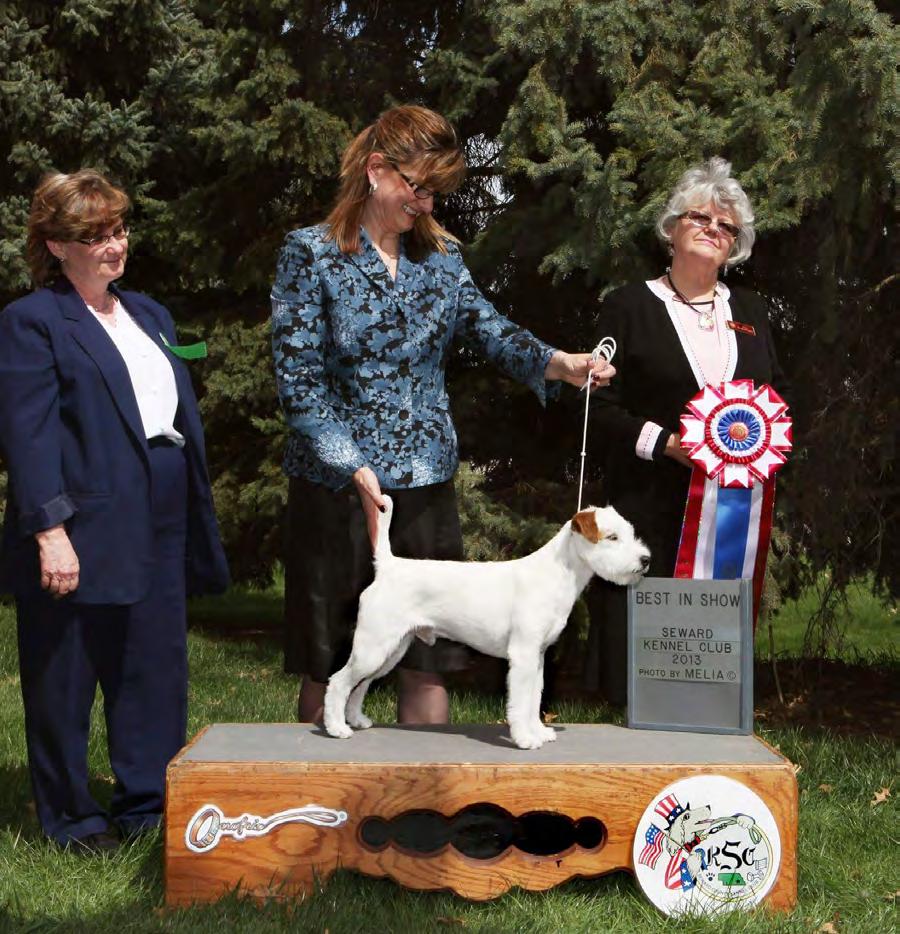
there for me, offering her support. Paula is a longtime breeder with much to offer in terms of breeding and line breeding. Also, Eileen Hackett of Chebaco English Setters. There’s no better person to epitomize the sport of dogs than Eileen. Her picture should accompany the definition of sportsmanship!
What is your breeding policy? Do you collaborate with other kennels, engage in joint ownerships, or bring dogs in from or send them to other kennels? Or do you prefer exclusive use of your stud dogs?
If there is a dog that could enhance my program, I am open to exploring other kennels. I am lucky to have established fabulous relationships with Posey Canyon, Goodwin Terriers, and Sunrock. We have collaborated effectively to produce some remarkable litters. I also have frozen semen stored from several males, and I am excited to integrate them into our future programs.
What kind of selection do you prioritize in your breeding program: line breeding, inbreeding, or outcrossing?
Our success has largely come from line breeding. Initially, Parsons Russell Terriers lacked consistent breed type. Building the correct type took time, and our use of line breeding has certainly solidified the breed characteristics that we believe best represent the standard.
How have Parsons Russell Terriers evolved since you first became involved with the breed?
I acquired my first Parson in 2003, just three years after the AKC recognition. Overall, I believe the breed is doing quite well. Many breeder-ownerhandlers take great pride in maintaining their dogs in top condition and adhering to the breed standard. While there are a few with poor temperaments, straight fronts, and inferior coats, I am hopeful that in time, these issues will be addressed, and breeders will strive towards the excellence we all aim for.
Are there any specific stud dogs or brood bitches, either in your variety, in your country, or globally, that you feel have significantly influenced your variety, and if so, why?
Most influential dogs were before my time, but after studying pedigrees with Jennifer Johnston and reviewing countless images, I believe that Posey Canyon Summer Storm and Rednock Shaggy have had a tremendous positive impact on the breed. They possessed excellent temperaments, correct proportions, quality coats, and movement, and they have passed these outstanding traits onto their progeny.
From your perspective, what is the most pressing issue facing the breed today that requires improvement?
The most pressing issues include temperaments, a lack of forechest, and inadequate upper arm and layback. There are also many Parsons shown in poor coat condition—lacking undercoat is a fault! The shoulder blade and upper arm should be of equal length, and the forelegs should be well placed under the body, not protruding out in front.
In your opinion, which standard best represents the breed, and what areas do you believe could benefit from refinement?
I believe these sentences encapsulate it all: “To function as a working terrier, he must possess certain characteristics: a ready attitude, alert and confident; balanced in height and length; medium in size and bone, suggesting strength and endurance.” “A tireless, ground-covering trot displaying good reach in the front, with the hindquarters providing plenty
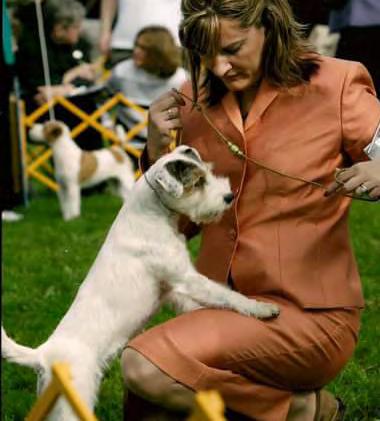

of drive…” However, I do feel that the standard could be more descriptive regarding proportions and the method of spanning. These are two areas where prospective judges often seek clarification.
Please mention two to three Parsons not owned, bred, or shown by yourself that you particularly admire, and explain what you admire about each.
CH Posey Canyon Eyes of the Storm was the first Parson in the AKC that caught my attention. He was a sound, moderate Parson with a fabulous temperament, correct coat, and a classic Parson head! He inspired me to pursue showing Parson Russell Terriers in the AKC. Once I began discussing with Jennifer Johnston, she had bred to CH Parson DragonFly. From the photos I saw, he seemed to be an outstanding PRT. I was fortunate to have one of his sons, who won the 2008 National!
What would you say is the main difference between the Russell and the Parson, and what should judges keep in mind while judging both breeds?
Proportions! The PRT is off-square, meaning the height at the withers is slightly greater than the length from withers to the base of the tail, whereas the Russell is clearly rectangular. The PRT has longer legs, suitable for following hounds and bolting foxes from dens. The Russell Terrier stands 10-12 inches tall at the withers, while the Parson Russell measures 12-15 inches.
What is the most important point you would like a judge of your breed to be aware of?
Movement is the crucial test of conformation. The PRT must have the stamina to work all day. Its chest must be compressible for den work, and its temperament should be sound, without fearfulness. The coat must be a harsh double coat. The front should not be concave, and the shoulder and upper arm should be of equal length.
If you were in charge of everything regarding dog shows, what change would you make first?
I would not disclose the judges’ names until after the show closes. You should come to the show and find out! Additionally, I would increase the allowed distance between shows taking place on the same weekend.
What would be the most important single piece of advice you would give to all serious young breeders?
Stay strong. Choose your mentors wisely. There are people who will try to detract from your success—do not let them. Work hard, be proud, and carry on.



How did you first become involved with dogs, and what sparked your interest in the sport of dog shows? When did you start breeding Russell Terriers, and could you share the story behind your prefix and its significance?
Let’s say that both Javier and I have always had a connection with dogs, that’s some-thing that’s there when you’re born and that grows throughout life. Initially, you arrive as just another spectator, out of simple curiosity, and before you know it, you’re deeply involved, in this case with purebred dogs. But in my case, the turning point was meeting Javier one fine day, having a coffee, starting a friendship that became part of my family and, of course, of ANROAL, a fundamental part along with my wife Afrinda, even in that this kennel is a family.
I think my first litter of JRT (Jack Russell Terriers) was in 2005, but here in Spain, it was almost impossible to buy a JRT, so I met an English girl who had bred a litter and I con-tacted her. They were short-haired French hunting dogs for burrows, fantastic, pure adrenaline.
As for the history of the kennel name, it’s quite simple; they are the first two letters of my name ANtonio ROca ALés, here we believe in simple things.
Which dogs do you consider the foundation of your breeding program?
In terms of males, undoubtedly Cholo (Algrafs Viktor for Anroal). As for females, I would say Dina (Anroal Pearl of the Stars), Wanda (Anroal Rachael the Replicant), Gloria (Algrafs Gloria for Anroal). With them, the growth in quality was exponential. Then others would come, but they were the beginning.
What do you consider your greatest achievement as a breeder?
If we’re talking about breeding, our greatest pride is to have healthy dogs, with good movement and balance. And if we talk about achievements in competition, winning BOB (Best of Breed) in what we consider the three most important dog shows in the world: Crufts, the European Dog Show, and the World Dog Show.
Who has been your greatest influence in breeding, and in what way?
I have always admired the breeding of the Jack Russell Terrier in the Scandinavian countries; for me, they have been a reference. Obviously, I also admire breeders in other parts of the world, but if you ask me who in particular, I would say many breeders from there. Their
first crosses, the success of their first imports from Australia, etc.
Are there any other people who have been instrumental in your career as a breeder that you have looked up to and admired?
Yes, of course, I admire other breeders of different breeds. If I had to choose just one, it would be Ezequiel Román from the kennel L’Cossta. Getting to know him closely and having shared hours of conversation with

him, being able to appreciate his knowledge and how he managed to awaken in others that concern that every breeder should have. He bred with care and impressive quality: initially the Brittany Spaniel and later the Miniature Bullterrier, becoming a benchmark in both breeds.
What is your breeding policy? Do you work with other kennels, have joint ownerships, or rent dogs in or from other kennels? Or do you prefer to have your stud dogs for yourself?
Currently, our main policy is to use dogs from our Kennel. Obviously, sometimes it’s necessary to introduce new blood, and we always try to ensure that this is related to the dogs we like. All of our breeding dogs are with us at the kennel; we don’t have fe-males located elsewhere. However, we always make our dogs available to anyone who needs them for use by other breeders. We believe that the best way to improve a breed is to facilitate breeding for those who desire it. It’s a pride to see dogs from our kennel in the pedigrees of other breeders.
What kind of selection do you prefer in your breeding program: line breeding, inbreeding, or out-crossing?
I believe that the only way to build a breed is to try to make your breeding base ho-mogeneous. Obviously, this degree of homozygosity must be based on the ancestors that you desire, that you believe are the type to follow.
It’s important for us to do a familial line breeding. If you want to establish important traits, I think it should be based on dogs with sufficient kinship to the dogs you like. Out-cross and inbreeding are tools in breeding, but they are resources to be used in extreme cases.
How have the Russells changed over time since you first got involved with the breed?
The change has been enormous; the breed has grown a lot. Before, when you looked at a ring, almost all of them seemed like different breeds. Now, when you look at most of the dogs, obviously there are different qualities, but you know they are all Jack Russell Terriers.
Are there any specific stud dogs/brood bitches in your variety, in your country, or globally, that you think have had an important impact on your variety, and if so, why?
Yes, of course, we have all grown with the influence of the great Australian dogs, but I believe that in the modern history of the breed, three have been pivotal: Lemosa Mr. Energizer, Goldsand Columbus, Kanix Speed Wagon. It’s rare not to find them in the pedigrees of the good current dogs.”
In your perspective, what is the most pressing issue facing the breed today that needs im-provement?
For me, the biggest problem facing the breed is establishing and unifying the propor-tions, although we are increasingly close to achieving this. It’s very important and something we must not forget. To mention another aspect that needs improvement, movement is very deficient in a large part of the breed’s population, with poor, unflu-id, and non-parallel movements.
The (Jack) Russell Terrier is now recognized by three distinct standards: AKC, FCI, and UK KC. In your opinion, which of these standards best represents the breed, and what areas do you believe could benefit from refinement?
I believe the essence lies in the FCI standard, with the

modifications that are currently being considered and which I hope will be implemented sooner rather than later.
Please mention 2 to 3 Jack Russell Terriers that are not owned, bred, or shown by yourself, that you particularly admire, and tell us what you most admire about each.
I reiterate the three dogs I mentioned earlier as the basis of the breed at a global level, because they, in addition to being great dogs, have demonstrated their reproductive power.
What is the most important point that you would like a judge of your breed to be aware of?
Typicality and movement. Without type, there is no breed, and without good, sure movement, there isn’t good conformation. On many occasions, judges and
breeders focus on small details that prevent them from appreciating the overall quality of a specimen
If you were in charge of everything regarding dog shows, what change would you make first?
I believe the first thing is the welfare of the dogs, but we must not forget that behind these dogs are people, and often the great forgotten at dog shows is the exhibitor. Making their work easier is essential, as there’s too much effort involved to overlook the human factor and all the sacrifices it entails. Perhaps it would also be good to know the judge’s opinion in a reasoned report, which could even be published and made available to all exhibitors, since in most of the shows we attend, we do
not re-ceive feedback from the judge.
What would be the most important single piece of advice you would give to all serious young breeders?
“The first piece of advice would be to study the standard thoroughly, ask for help and advice from more experienced breeders, visit the most important dog shows worldwide to assess the current state of the breed, and find the line of dogs that they like the most and start working on it. But above all, they should be the most critical judges of their dogs. As we all know, the perfect dog doesn’t exist, and that’s what this whole world is based on. Self-criticism is the only way to progress, and the results will surely come.

How did you first become involved with dogs, and what sparked your interest in the sport of dog shows? When did you start breeding Russell Terriers, and could you share the story behind your prefix and its significance?
Most people recognize me as a professional athlete, but my true passion has always been animals. Throughout my life, I’ve taken care of chickens and songbirds—breeding them and teaching them to sing what I like. Caring for dogs has been one of my greatest loves. My professional life and constant travel limited me to having one dog or none, but I never stopped observing and learning. Dog shows became a logical extension of my breeding hobby, which I started in
2016. Dog shows give me an adrenaline rush, perhaps even more than playing games myself because I feel somewhat powerless during the competitions. The kennel’s name Brotherhood of Jacks came about as a family matter. I have three sons, and we affectionately call ourselves “brothers.” We incorporated our dogs into this brotherhood through conversations, thus spontaneously creating the kennel name.
Which dogs do you consider the foundation of your breeding program?
Nini, whom I purchased from the Touchstar kennel, is the cornerstone of my breeding journey. I don’t focus on mass production; I believe in controlled and responsible breeding since finding a good individual is challenging. Therefore, I produce a limited number of puppies. I still have a long way to go to consider myself a breeder who makes a significant impact on the breed.
What do you consider your greatest achievement as a breeder?
Breeding Brotherhood of Jack’s Silly Billy is my crowning achievement. This dog, in my view, comes closest to the ideal I strive for. He has flaws, but his charisma makes him special. He’s not just a top show dog but also an exceptional breeding dog, which I believe makes him significant in the breed’s history. It may sound pretentious, but I don’t take credit; I consider myself fortunate to have such a dog.
Who has been your greatest influence in breeding and in what way?
I’ve never had idols in my life, not in basketball, my professional sport, nor in dog breeding. My greatest



insights have come from analyzing prominent breeders, their methods, and their achievements. I pay attention to the details, noting when and how they make pivotal decisions. I learn continuously, read extensively, and interact with many dedicated breeders who are generous with their knowledge for the breed’s betterment.
Are there any other people who have been instrumental in your career as a breeder that you have looked up to and admired?
In the beginning, I mostly consulted with Vladimir Cairovic and Nemanja Jovanovic. For many years— still to this day—they patiently helped me analyze various dogs, aiding me in understanding the subtle differences and nuances. As much as I studied anatomy, distinguishing these fine points in practice was initially challenging.
What is your breeding policy? Do you work with other kennels, collaborate on joint ownerships, or rent dogs in or from other kennels? Or do you prefer to keep your stud dogs to yourself?
I enjoy collaborating with breeders universally. There is a pervasive issue in dog breeding where many see their methods as the only correct approach, often emphasizing their quality as the paramount one. Sports have taught me to set my ego aside, allowing me to appreciate a beautiful dog when I see one. I’ve collaborated with Hunters Moon and Christy Rebehn; Billy was part of her breeding program. Anita-Kaya Malby also included Billy in her breeding efforts. I work with Monica Fonzo and Federico Giovannetti, and I can candidly say Rough Jack from Serbia and I operate like sister kennels, as Srdjan and I have
become friends. My apologies to the many others not mentioned; our mutual support and extensive collaboration mean a great deal.
What type of selection do you prefer in your breeding program: line breeding, inbreeding, or outcrossing?
I place my trust primarily in inbreeding, especially close and line breeding. However, when you have highly linebred bitches, it becomes necessary to occasionally outcross to invigorate the bloodline and introduce missing qualities.
How have the Russells changed over time since you first became involved with the breed?
The presentation and grooming, particularly in shows, have improved tremendously—by 100%, I’d say confidently. In my view, the breed has advanced in all areas, though some may disagree, I believe it’s been significant. There’s been a focus on improving the dogs’ movement and proportions, and now we see many with good balance and motion.
Are there any specific stud dogs/brood bitches in your variety, in your country, or globally, that you think have had an important impact on your variety, and if so, why?
That’s a challenging question because, realistically, singling out one particular dog is impossible. There are dogs that have defined the breed, those that are the bedrock of its lineage.
From your perspective, what is the most pressing issue facing the breed today that needs improvement?
The most critical problem is undoubtedly the hind legs. This issue was glaring at the last world show, and
what gratified me was that the majority of breeders also acknowledged it as the primary concern.
The Jack Russell Terrier is now recognized by three distinct standards: AKC, FCI, and UK KC. In your opinion, which of these standards best represents the breed, and what areas do you believe could benefit from refinement?
I believe that the FCI standard is the most realistic, even though it shares many points with the AKC. The major discrepancy lies in the chest circumference. The AKC prescribes a chest measurement that seems unattainable while maintaining a 50:50 body proportion and appropriate height for the dog. While I’m not an expert and can’t speak authoritatively on the standards’ specifics, I do know we need a more detailed and precise standard that minimizes room for broad interpretation and personal preference. I hope that’s achievable.

Please mention 2 to 3 Russells which are not owned, bred, or shown by yourself, that you particularly admired, and tell us what you most admired about each.
It’s impossible to discuss Jack Russell Terriers without acknowledging Goldsand’s Columbus, the dog that cemented my love for the breed. He played a pivotal role in my life at that time, despite any potential for debate. Kanix Speedwagon also intrigued me initially for reasons I couldn’t pinpoint, but I was adamant about including him in the pedigree. Saltisgarden Rocket Man is another dog I deeply respect. These dogs were my first loves within the breed, and it’s vital to note that they might not be the ones I’d single out now, but they were significant to me then. Recently, at the last World Dog Show, Tattoo Russtyle’s du Vallon de l’Alba and All Jack’s Who’s that Girl, as well as Totgree’s Hannabell, a striking female, made an impression. It’s difficult to highlight individual dogs because so many kennels have remarkable specimens, and it’s impossible to name them all.

What is the most important aspect you would like a judge of your breed to be aware of?
As I’ve mentioned previously, the issue persists with judges. I would like them to scrutinize every aspect, but particularly the hind legs, as there’s a significant issue there within the breed. Furthermore, I feel that judges should focus less on the handler’s presentation and more on the dog in its entirety.
If you were in charge of everything regarding dog shows, what change would you implement first?
Although it may seem far-fetched, I would introduce a different judging method. Ideally, there would be multiple judges in one ring, each scoring based on specific categories. These scores would later be tallied to determine the winner. This idealistic and somewhat unrealistic method could drastically reduce personal bias and favoritism toward certain breeders or handlers.
What would be the most important single piece of advice you would give to all serious young breeders?
It’s crucial for them to introspect on why they’re entering the breeding world. Is it to win and be the best? For financial gain? To establish a recognizable type? Or is it purely out of love for the breed? Once they’ve identified their motivation, setting priorities becomes straightforward, leaving no room for compromise. Money is essential, but it should never be the primary motivator. The love for the breed should be the driving force; if we work with integrity, the rest will follow.







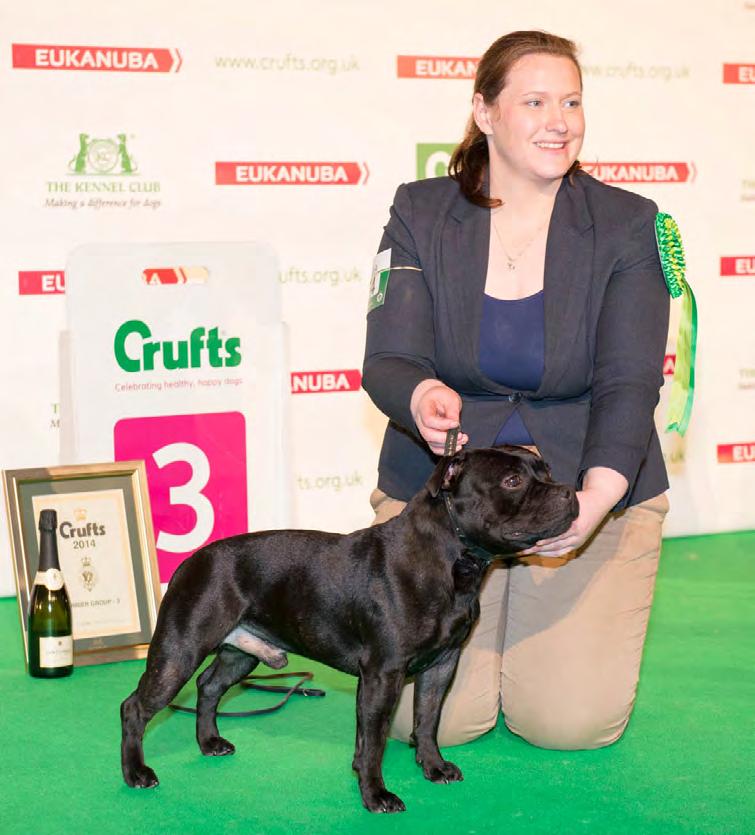



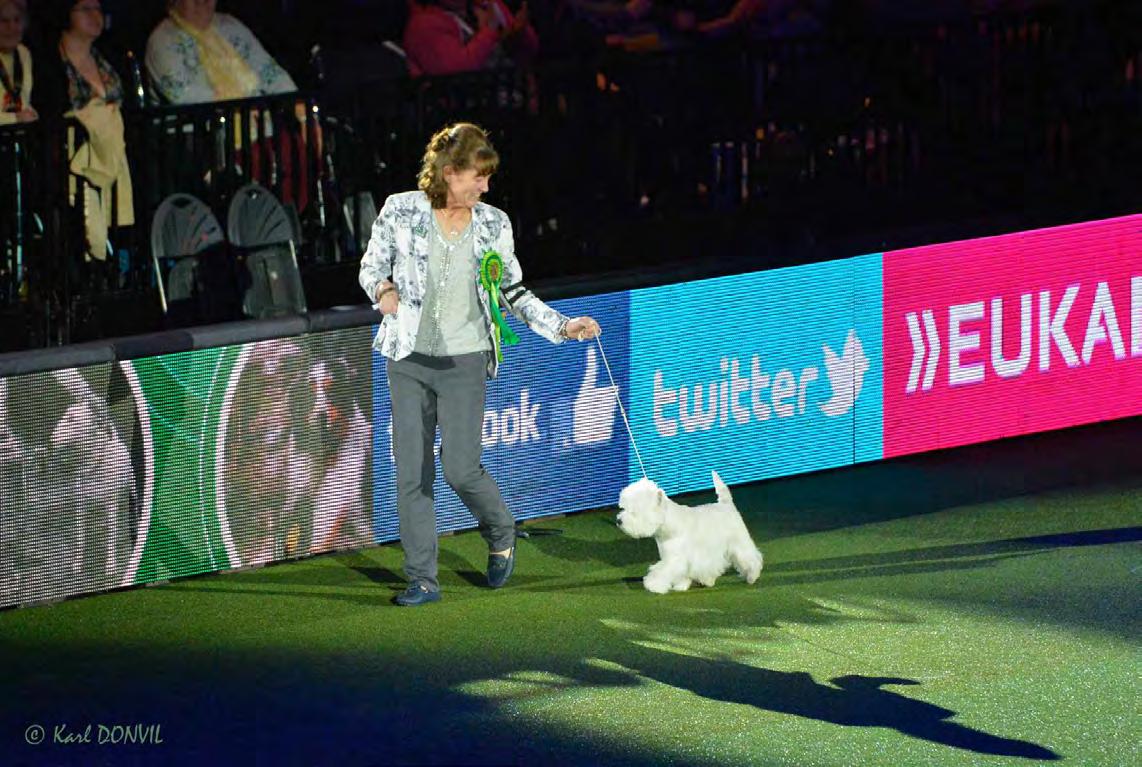

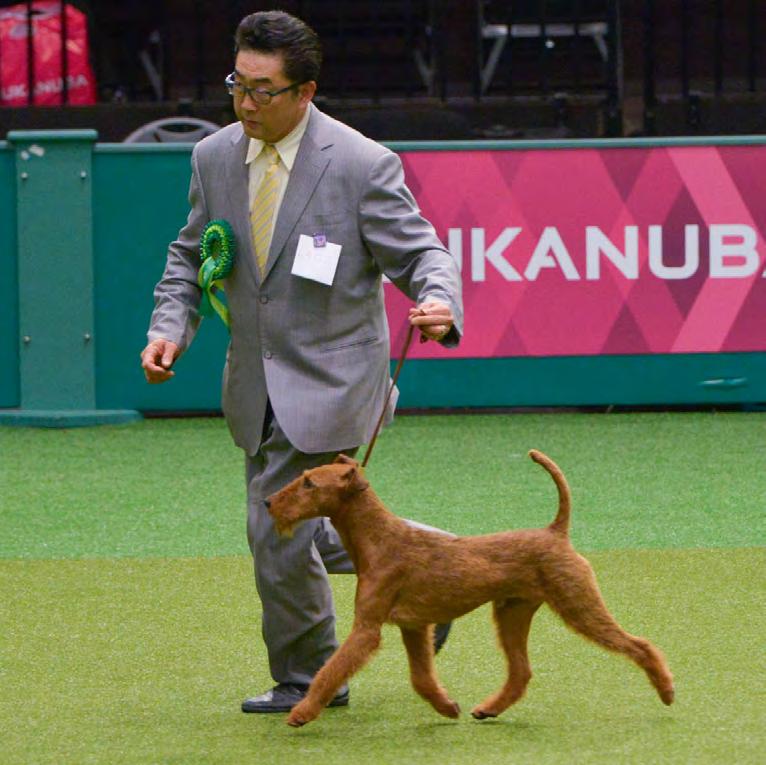

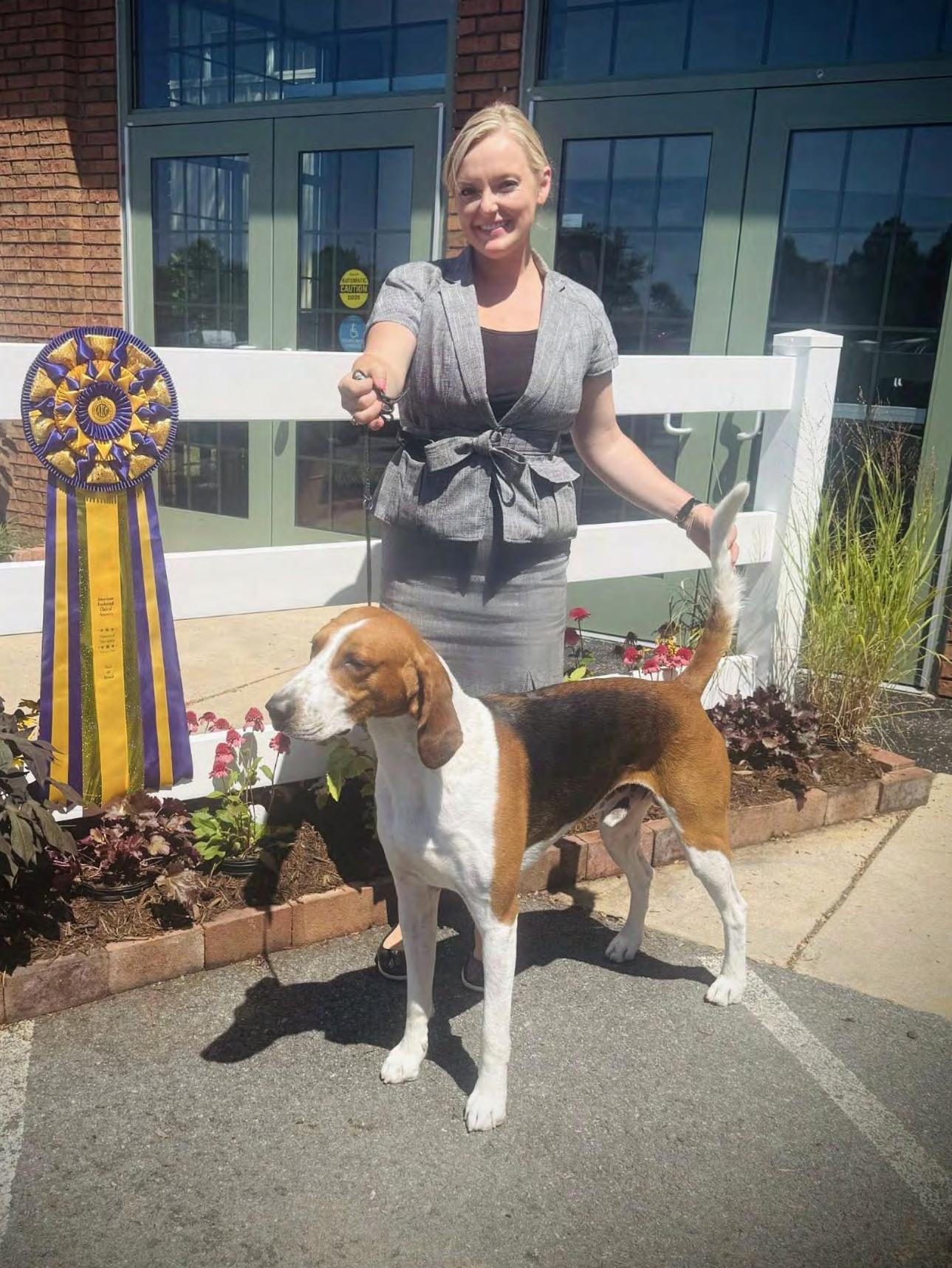
BOB
Date: August 9, 2025 · Location: Lebanon, PA
Judge: John Constantine-Amodei
Name: GCHS LOST HERITAGE TIME BANDIT AT KIARRY
Breeder: Stephen Grossman, Kristin Lawless, Cole Vanover
Owner: Ellen Charles, BJ Whitlow, Alaina Moulton, Lisa Miller
BOS, BOBOH
Name: CH LOST HERITAGE SIMPLY THE ZEST
Breeder: Stephen Grossman, Cole Vanover
Owner: Alaina Moulton
WD, BOW, Best Bred by Exhibitor
Name: KIARRY ATHERCROFT DON’T LET THE SUN GLOW DOWN ON ME
Breeder: Ellen Charles, Lisa Miller
Owner: Lisa and Harry Miller
WB
Name: KIARRY ATHERCROFT GLOW GO BOOTS
Breeder: Ruth Marsh, Lisa Miller
Owner: Ruth Marsh
Best Puppy
Name: WINQUEST’S BACKWOODS BARBIE AT CFK
Breeder: Phyllis L Snell
Owner: Jaci Crute
Select Dog
Name: CH KIARRY & TANLYNN’S RUDOLPH VALENTINO
Owner/ Breeder: Avery Miller, Lisa Miller
Select Bitch
Name: CH KIARRY ATHERCROFT THE SHOW MUST GLOW ON
Breeder: Ellen Charles, Lisa Miller
Owner: Lisa Miller

Date: August 16, 2025 · Location: Greeley, CO
Judge: Vicki Seiler-Cushman · Sweepstakes Judge: James Holliday
Name: GCHS BRAVADO’S LEAVE THE GUN TAKE THE CANNOLI
Breeder: Dave Musto, Alyssa Rene Marie
Soldavini
Owner: Dave Musto
Handler: Kathy Musto
Name: GCHB MANNA’S KHALEESI OF GREAT GRASS SEA
Breeder: Michael and Natalia O’Connor
Owner: Bess Cleveland, Natalia O’Connor
Name: GCHB SMOKEHOUSE’S KING OF CALI SEQUOIA
Breeder: Courtney and Ronnie Gorecki
Owner: Courtney and Ronnie Gorecki
WD, BOW, Best Bred by Exhibitor
Name: BRAVADO’S GUARDIAN AT BRONCO
Breeder: Dave Musto, Elizabeth Shauck, Kathy Musto
Owner: Mike Joni Palumbo, Dave and Kathy
Musto
Handler: Dave Musto
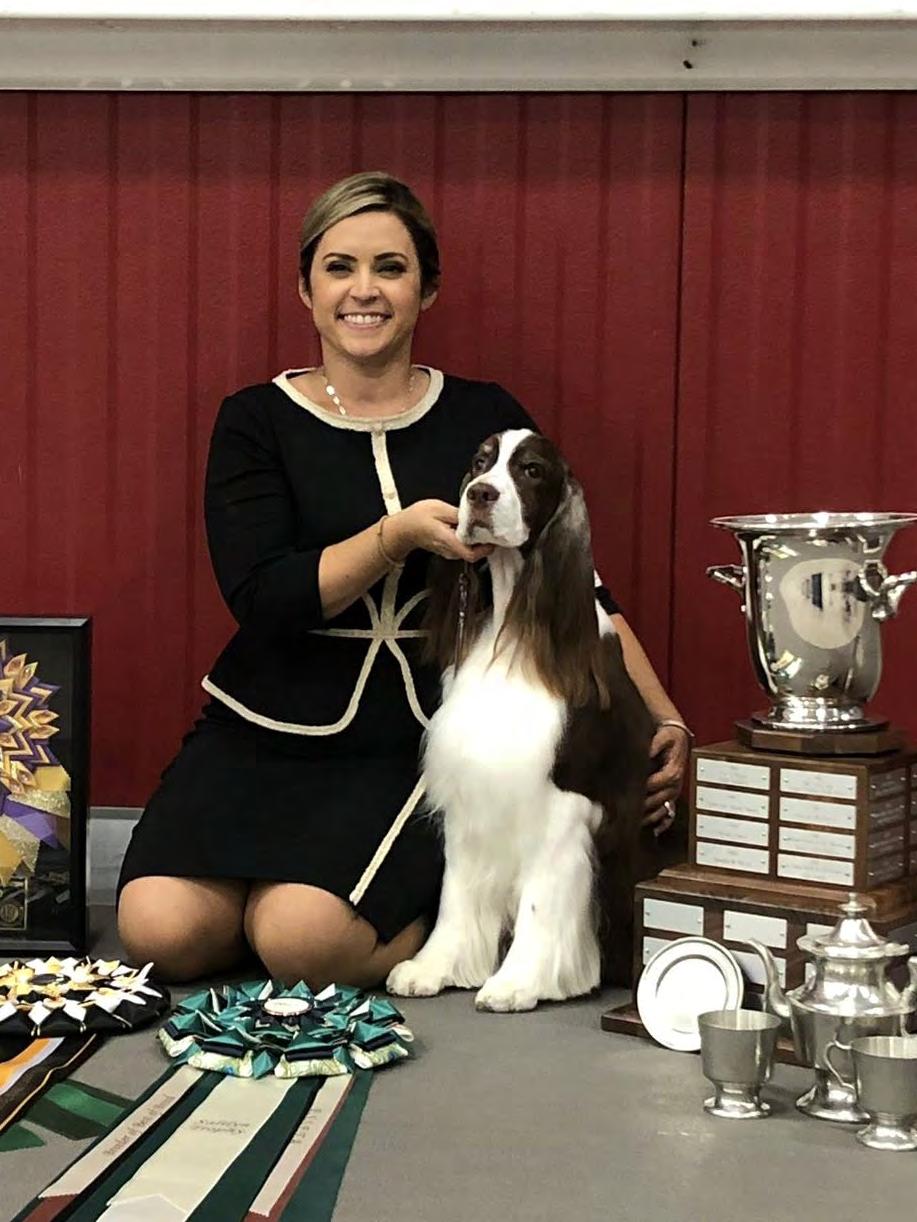

Date: August 19.23, 2025 · Location: Gray Summit, MO
Judge: Judy Manley · Sweepstakes Judge: Donna Larson
BOB, Best Veteran
Name: GCHG FULL MOON N TWIN OAKS THE EAGLE HAS LANDED
Breeder: S & W Wytoshek, T Faust, L Camisi
Owner: S & W Wytoshek, L Camisi
Handler: Lexie Ditlow
BOS, BOBOH
Name: GCHB CROWN ROYAL CHRISAND TEA CONNECTION
Breeder: M. Osbun, J. Kettleson, B. Cornelius, J. & M. Winkler
Owner: Jennifer Kettleson, Rebecca Parchman, Brittani Cornelius
WD, BOW, Best Bred by Exhibitor
Name: FREEDOM RIDGE AMERICAN PATRIOT
Breeder: Karen Pierce Laster, Dorothy Cherry, Ruth Dehmel
Owner: Karen Pierce Laster
WB
Name: CROSSROAD JOCKEYHILL FOREVER COUNTRY
Breeder: Steve Castle, Jody Paquette Garcini, Laurie Green
Owner: Cindy Pulliam, Laurie Green, Jody Paquette Garcini
Handler: Jody Paquette


Date: August, 2025 · Location: Greeley, CO
Judge: Nichole Dooley Bunch · Sweepstakes Judge: Tad Walden
WB, BOW, BOB
Name: WYNMOUR CINDY LU WHO
Breeder: Emily McGuire, Nadene Seymour, Linda Blaser
Owner: Emily McGuire, Nadene Seymour, Linda Blaser, Amy McGu
Handler: Jordyn Seymour and Bentley Mato
BOS
Name: GCHS KILLARA’S ADVENTURES IN THE DARK TD CGC TK
Breeder: Karen Balinski, Grace Krofron
Owner: Jennifer Johnson, Myra Johnson
Select Dog
Name: CH PRIDEMARK KNOCK ON WOOD
Breeder: Tammy Osborn
Owner: Tammy Osborn
Best in Sweepstakes
Name: WYNMOUR CINDY LU WHO
Breeder: Emily McGuire, Nadene Seymour, Linda Blaser
Owner: Emily McGuire, Nadene Seymour, Linda Blaser, Amy McGu
WD
Name: PRIDEMARK IT’S NOT MY FAULT
Breeder: Tammy Osborn
Owner: Tammy Osborn
Best Veteran in Sweepstakes
Name: Name: MAPLESUGAR OPPORTUNITY KNOCKED CGC BCAT
Breeder: Cheryl Benedict
Owner: Janelle Schmidtke
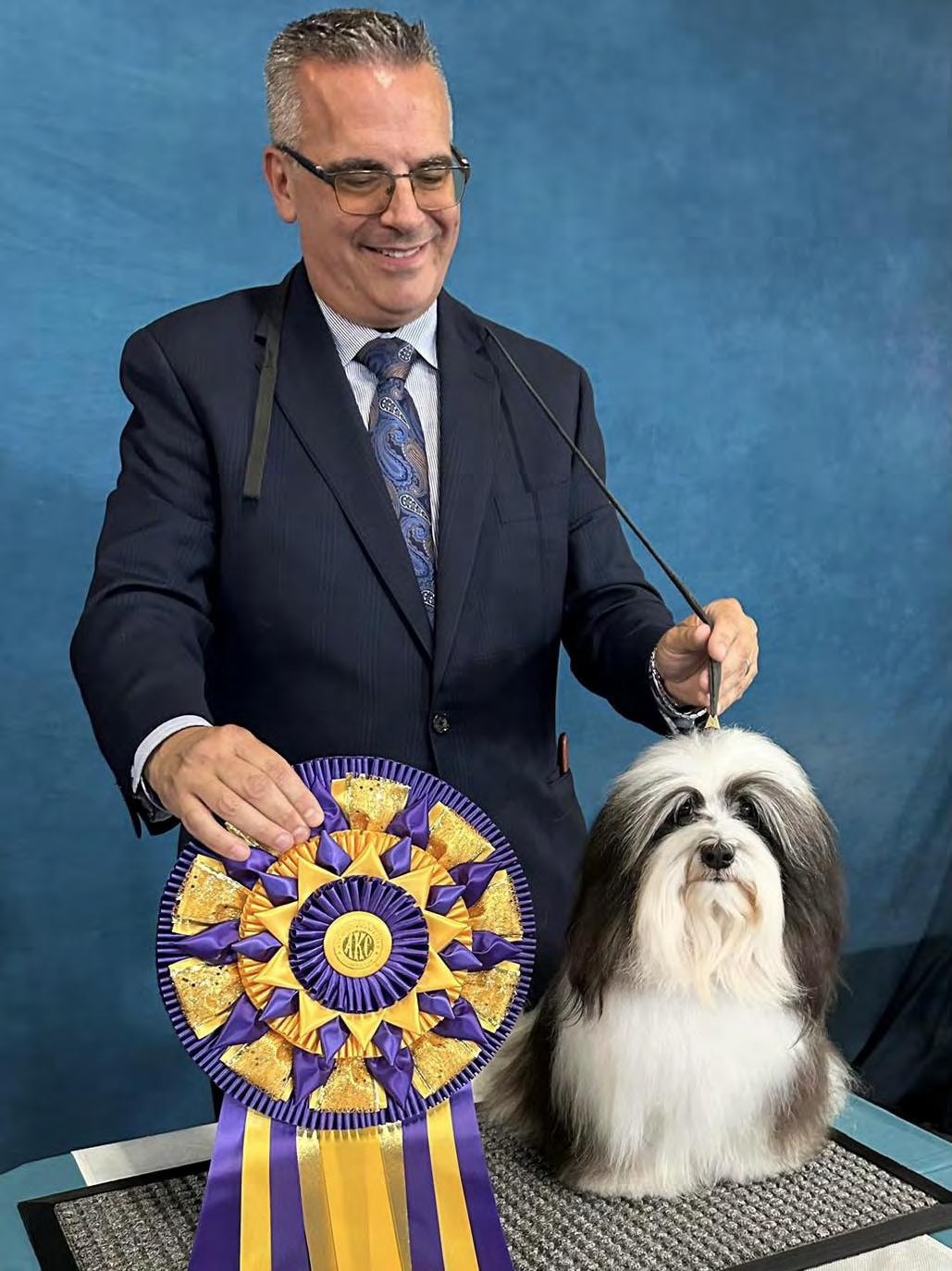
BOB
Date: August 13, 2025 ·
Location: Enumclaw, WA
Judge: Terry Dennison · Sweepstakes Judge: Harry Bennett
Name: GCHG ZONA ROSA’S LADIES LOVE OUTLAWS
Breeder: Maria Elena Pereira, David Stout, S. Peck
Owner: Maria Elena Pereira, David Stout, S. Peck
BOS
Name: GCHG CONTIGO’S DANCIN’ IN THE MOONLIGHT
Breeder: Lynn Owens
Owner: Lynn Owens
BOBOH, AOM
Name: GCHG KOLMAR’S PARTI ALL THE TIME
Breeder: Mark W Kolbe, Galen Morgan
Owner: Mark Kolbe, Ronald Morelos
WD, Best Puppy
Name: AMOR MON AMIE MAIN ATTRACTION
Breeder: Gina Klang, Mary Lopez, Kaycee Klang
Owner: Gina Klang, Kaycee Klang
WB, BOW, Best Bred by Exhibitor
Name: NARWYN MIDSUMMER NIGHT
Breeder: Kat Smith
Owner: Kat Smith
Select Dog
Name: GCH HEARTLAND’S KING PENDRAGON
Breeder: Kevin K & SandyMccabe, Wade Koistinen
Owner: Kevin K & SandyMccabe, Wade Koistinen
Select Bitch
Name: GCH THAT’S AMYLA’S CASTLE ON A CLOUD
Breeder: David J &Darlene R Scheiris, M.Archambault
Owner: Myriam Archambault
Best Veteran
Name: GCHG MARCOSA’S THE TRADITION CONTINUES
Breeder: Hannah B Kolzow, Corinne Kolzow
Owner: Sharleen Perreira, Hannah & Corinne Kolzow

Date: August 1, 2025 · Location: Canfield, OH
Judge: Harry H. (Butch) Schulman · Sweepstakes Judge: Shelley Miller
BOB, BOBOH, Best Bred by Exhibitor
Name: GCHS DOLGOS-NIMROD KALIBER JH CGC BCAT
TKN
Breeder: Roland Nagy
Owner: Chrissy Daniel, Kata Miller
BOS

Name: GCHB CH ZOLDMALI ILKA JH CGC
Breeder: Zsofia Miczek
Owner: Gayle and Larry Nelson
WD, BOW, BOBOH
Name: PIVOT’S LEGACY OF A LEGEND
Breeder: Megan Wallendal, Eric Wallendal
Owner: Elizabeth Falk
WB
Name: ZABOSFAI HOLNAP
Breeder: Braun Balazs
Owner: Lazslo Pap
Select Dog
Name: GCH CH COMPASS’ WHERE THE RIVER MEETS THE OCEAN
Breeder: Belinda Perry, Jeff Gowen, Peg Roginski
Owner: Stan and Robin Gay, Belinda Perry
Select Bitch
Name: CH ACORN ACRES KUJENGA DS DM BCAT CGC FDC
Owner / Breeder: Gayle Nelson
Best Veteran in Sweepstakes
Name: GCHB ZOLDMALI FANNI CA
Breeder: Zsofia Miczek
Owner: Eric Wallendal, Megan Wallendal
Best in Sweepstakes
Name: CH STELLAR’S TALK DERBY TO ME TKN
Breeder: Penny Rasins, Sue Beck, Kacie Davis Jordan
Owner: Sue Beck, Penny Rasins, Kacie Davis Jordan
